27 February – 02 March 2023
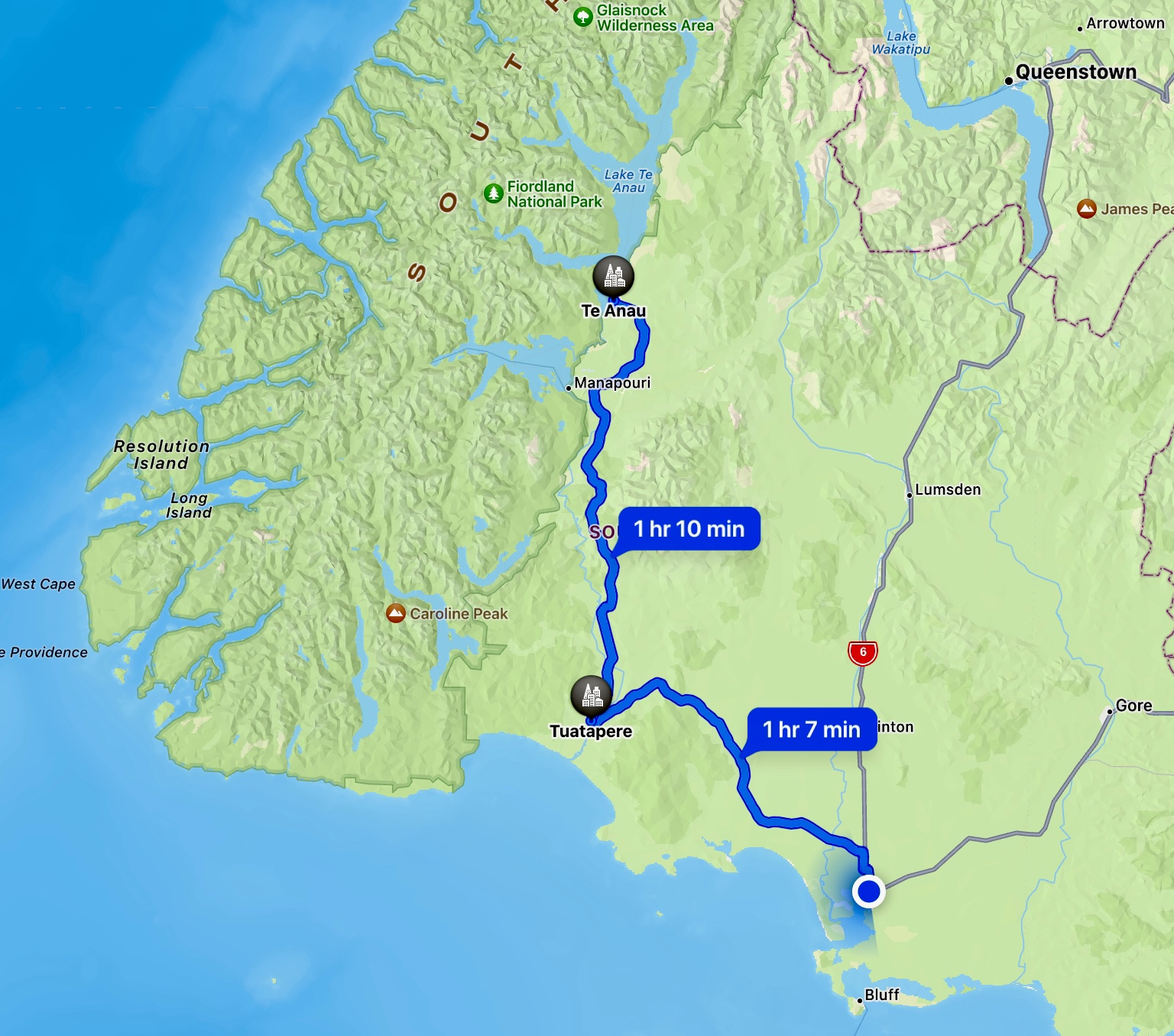
On the Way
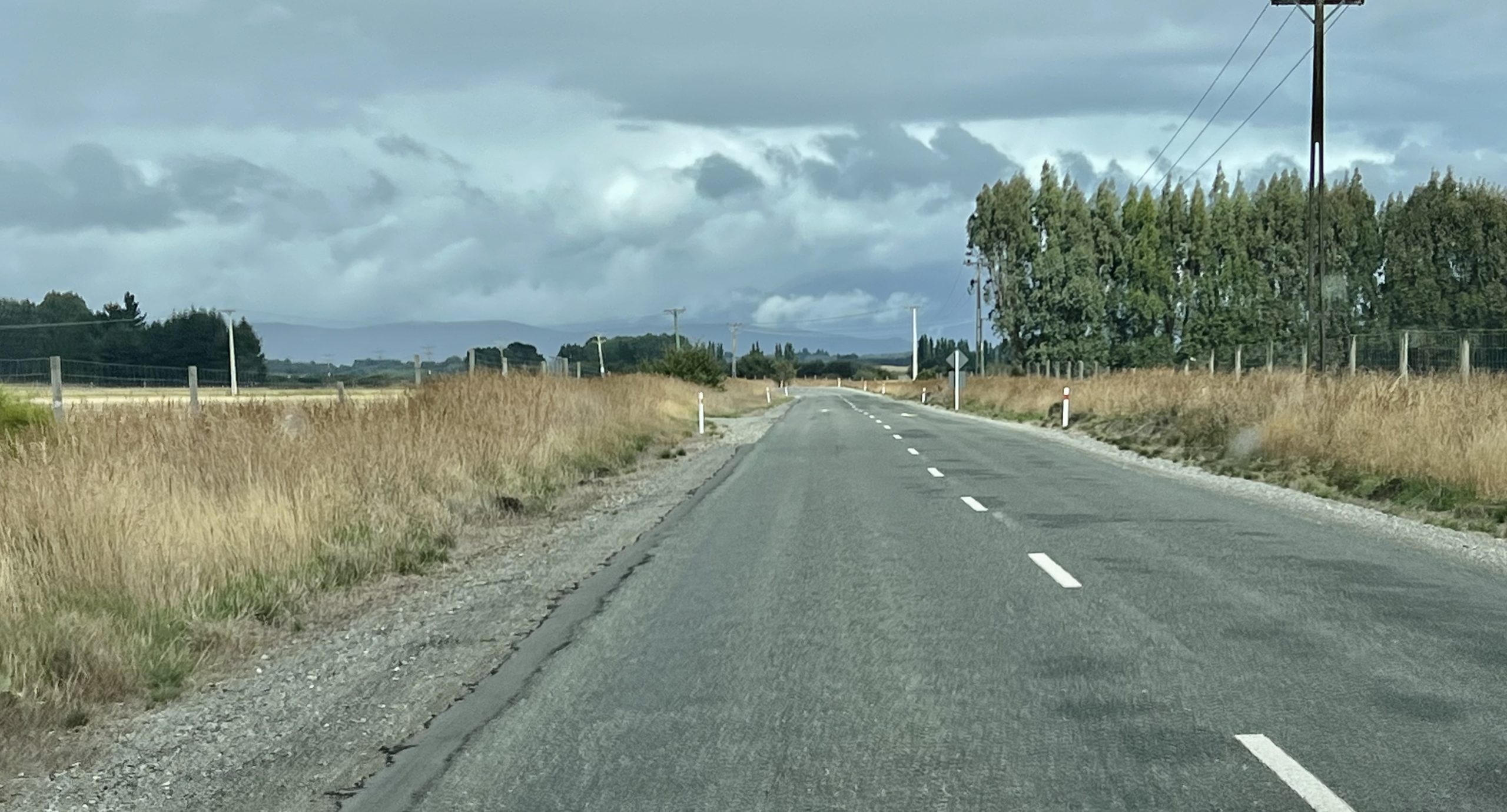
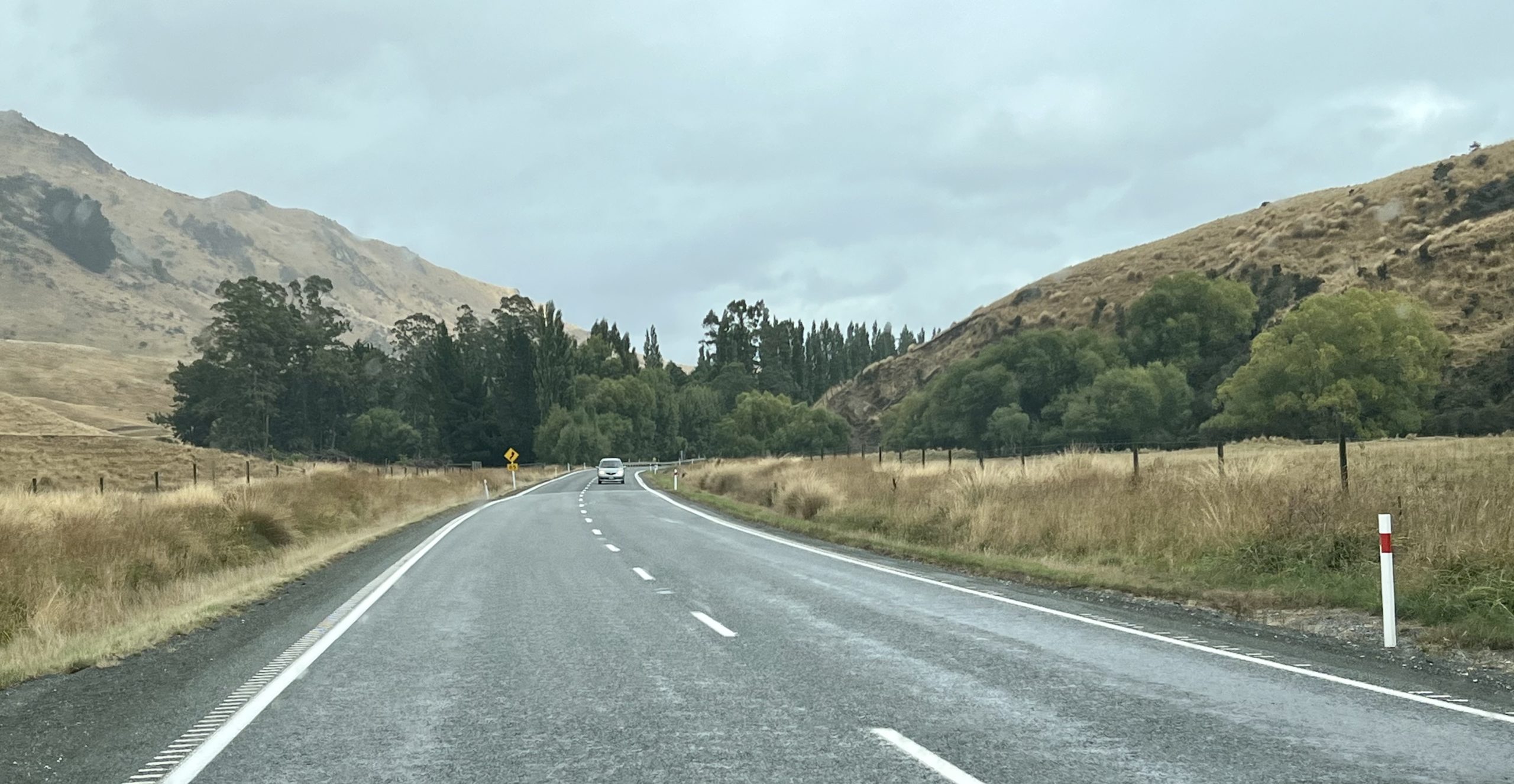
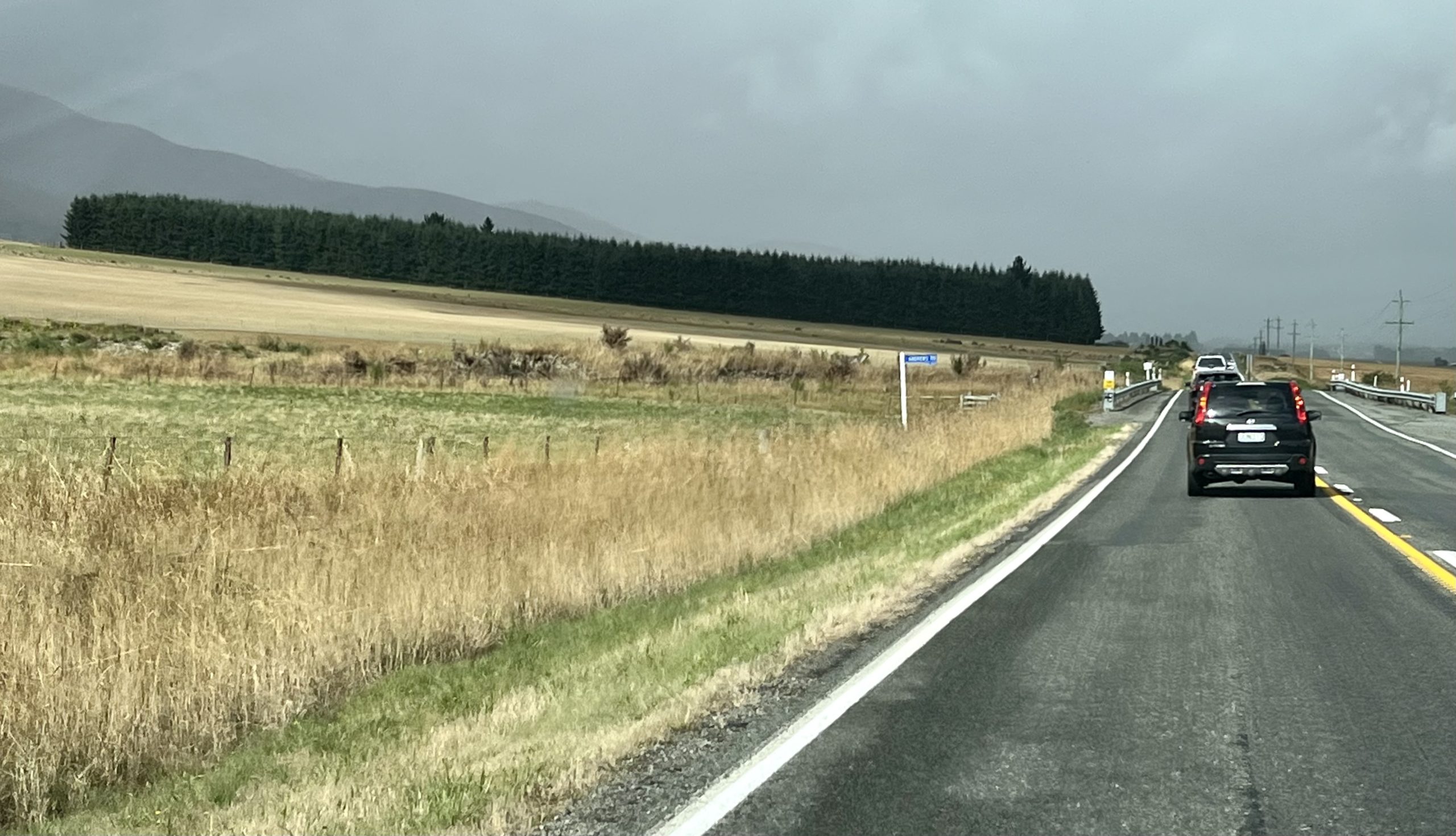
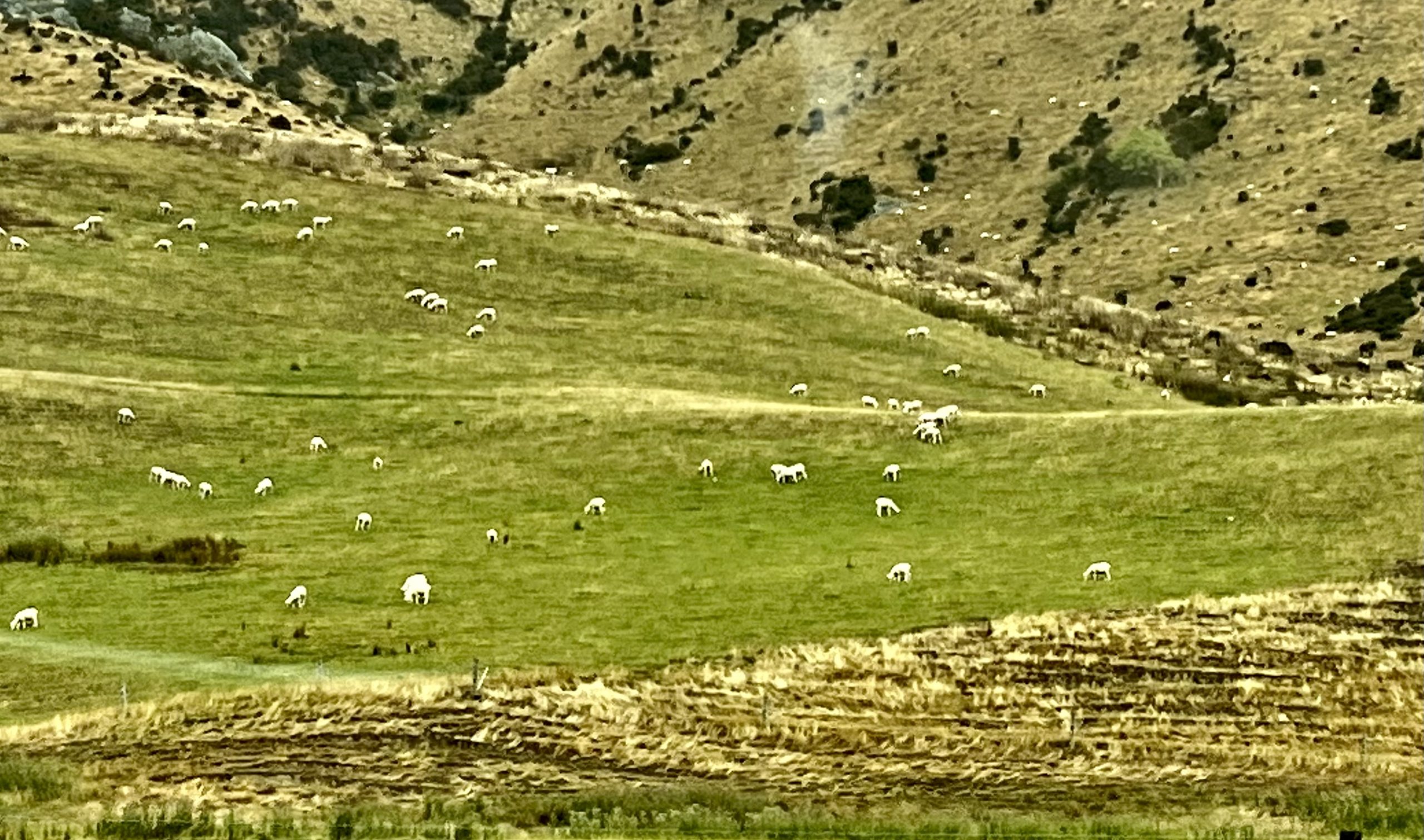

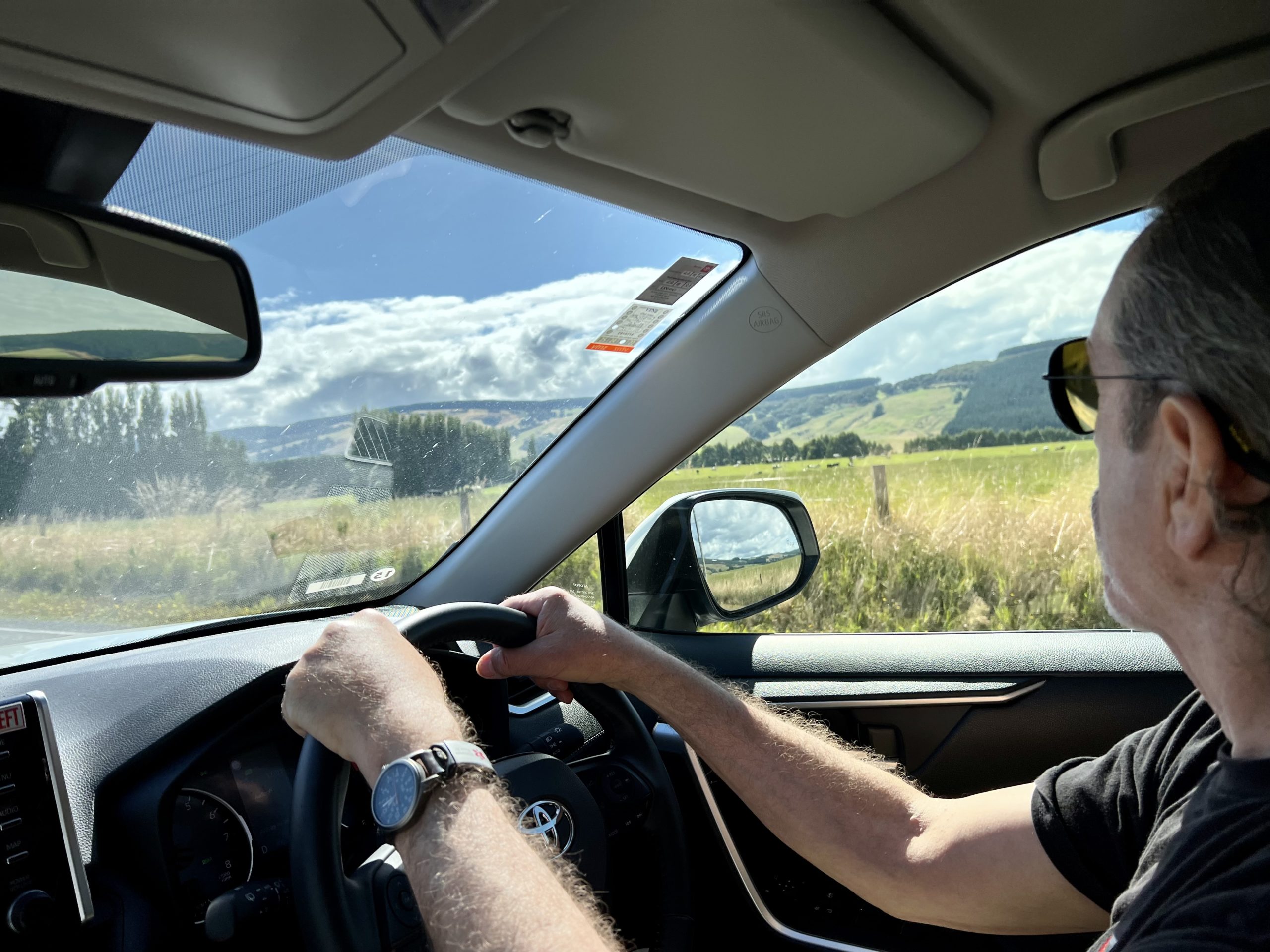









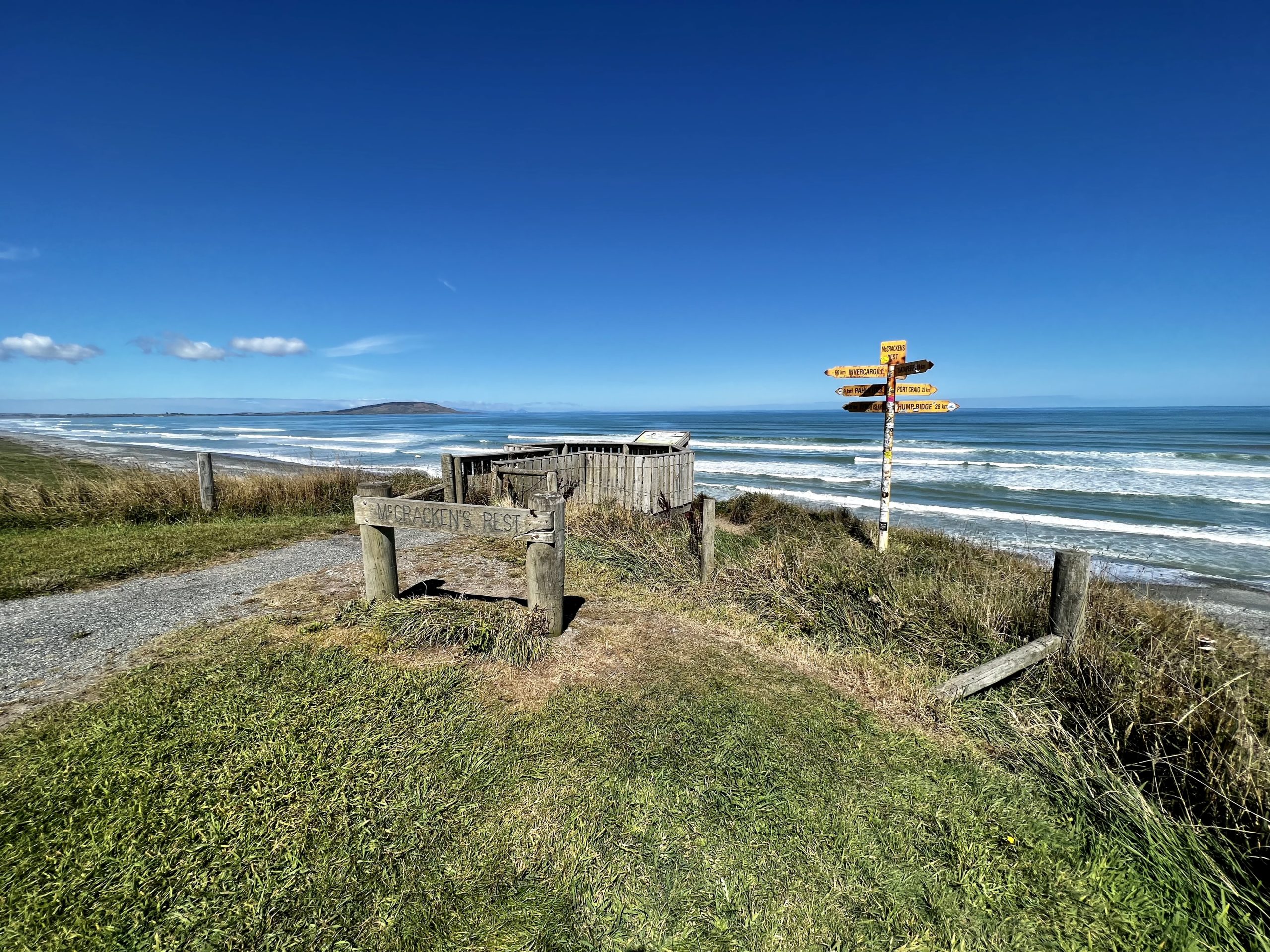
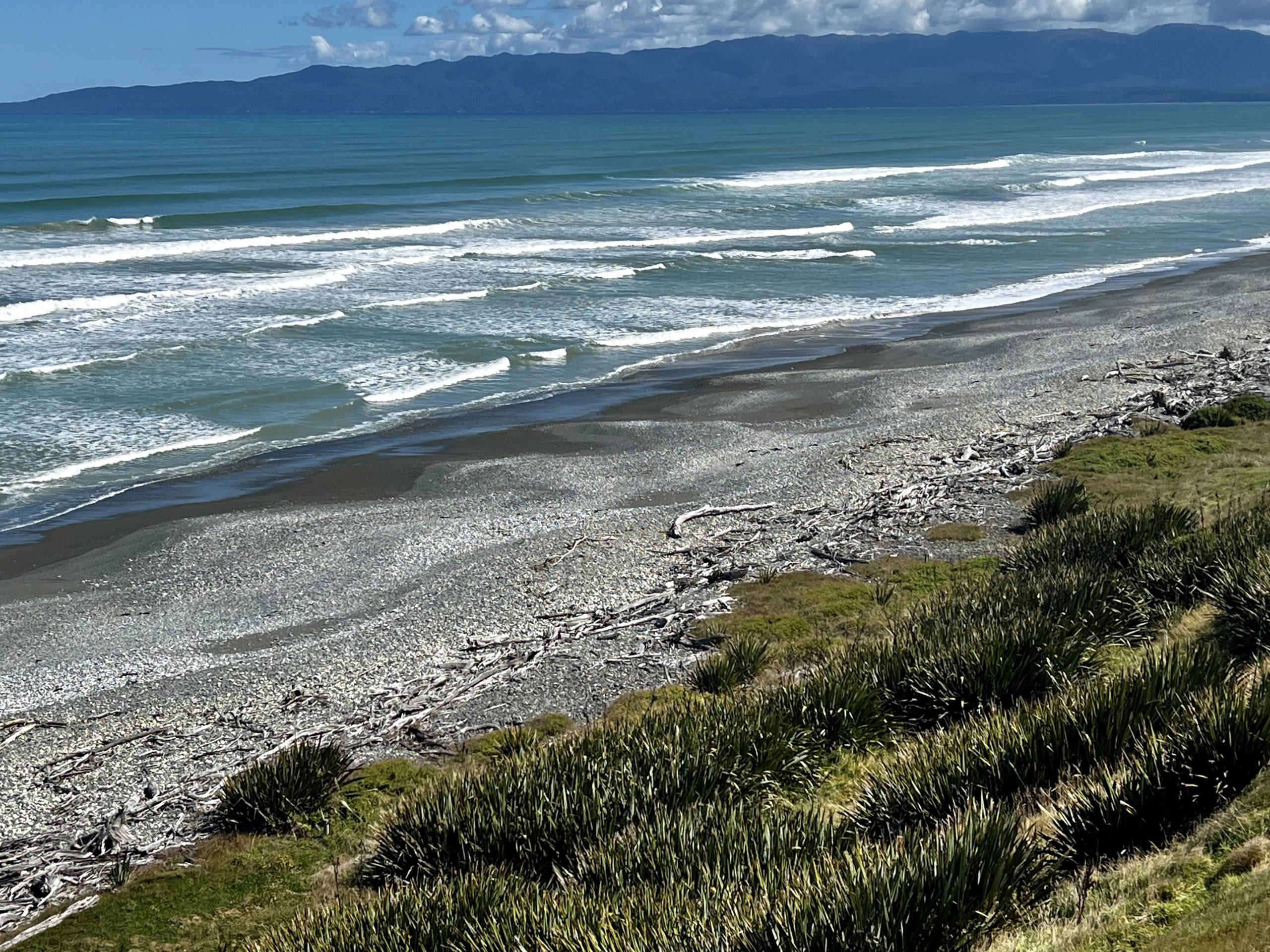

Sausage Capital of New Zealand
Bonnie’s extensive research of all things New Zealand found that with a slight detour we could stop for lunch in Tuatapere—the Sausage Capital of New Zealand! Tui Base Camp was awarded the title in 1982 in a radio contest and they have held onto it ever since. (We do not know if there was a subsequent contest.) The two women who operate the business bought it several years ago and have religiously followed the winning recipe. Only difference is that they no longer need to add ice to the mix because newer machinery does not heat up like the old stuff. Their sausage is like a British banger—finely ground. After her lunch break, one of the owners let Robert see how she stuffed and hung the sausage. They bonded after Robert showed her a photo of his sausage making.






Accommodations
This might look like a duplicate of a photo from Te Anau . . . but it is NOT! This Bella Vista motel is not far from the city center—a ten-minute walk to shops and a few pubs. But most importantly it is a short walk to Fat Bastard Pies that Robert frequented for his morning breakfast. Bonnie even tried one of their vegan pies.


Strolling
We were gently discouraged from stopping in Invercargill because it is not a scenic tourist destination. It feels a bit like Anchorage. But Bonnie was curious to go all the way to the bottom of the South Island, and Invercargill has excursions by boat to Stewart Island. Invercargill, population of 57,000, has a downtown mix of very old buildings from the 1860s to the 1920s. Most are occupied with a variety of uses. There are a lot of arcades to shelter pedestrians from frequent rains. A new downtown mall is near completion with stores that front on the street with parking on top. It is next to a new high-end hotel. As in Queenstown, the city is finishing up on pedestrian streets near the new development in an effort to rejuvenate the surrounding retail. The design ethic is clean with a bit of whimsy. Nicely done.
We were surprised to learn that this far south area was the first in New Zealand settled by Europeans. Whalers from England and Norway came early, and some built houses and had families.
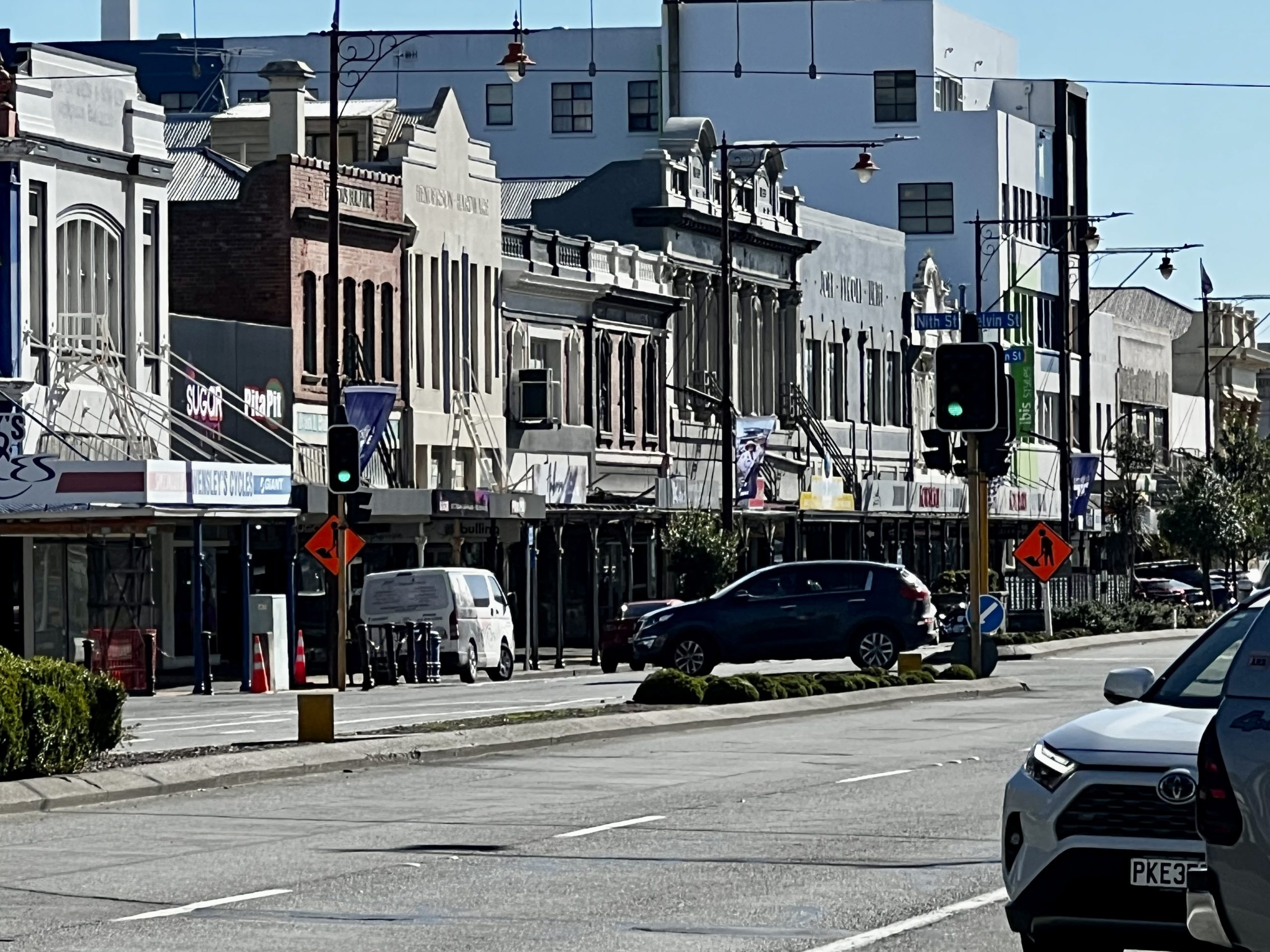
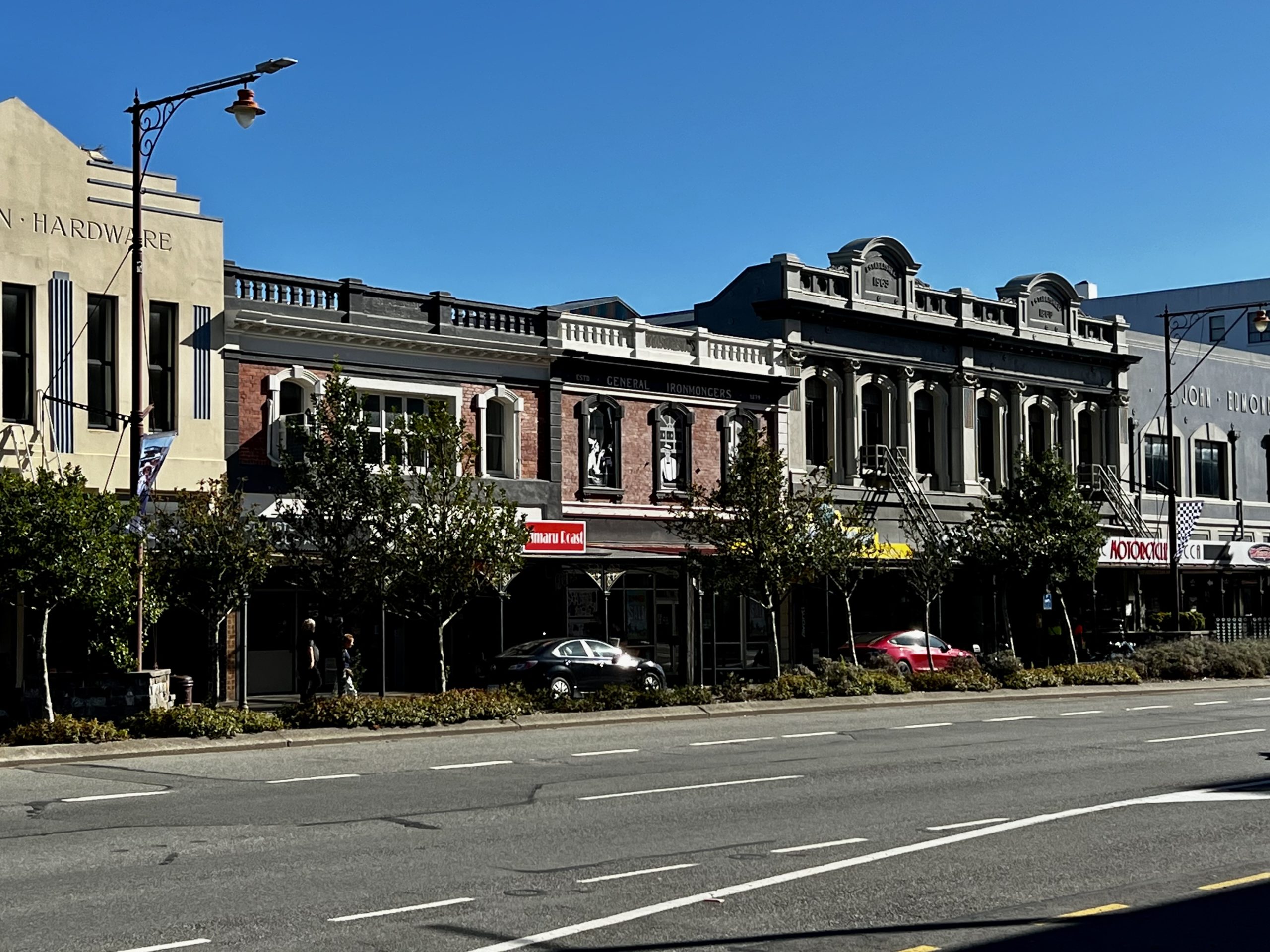
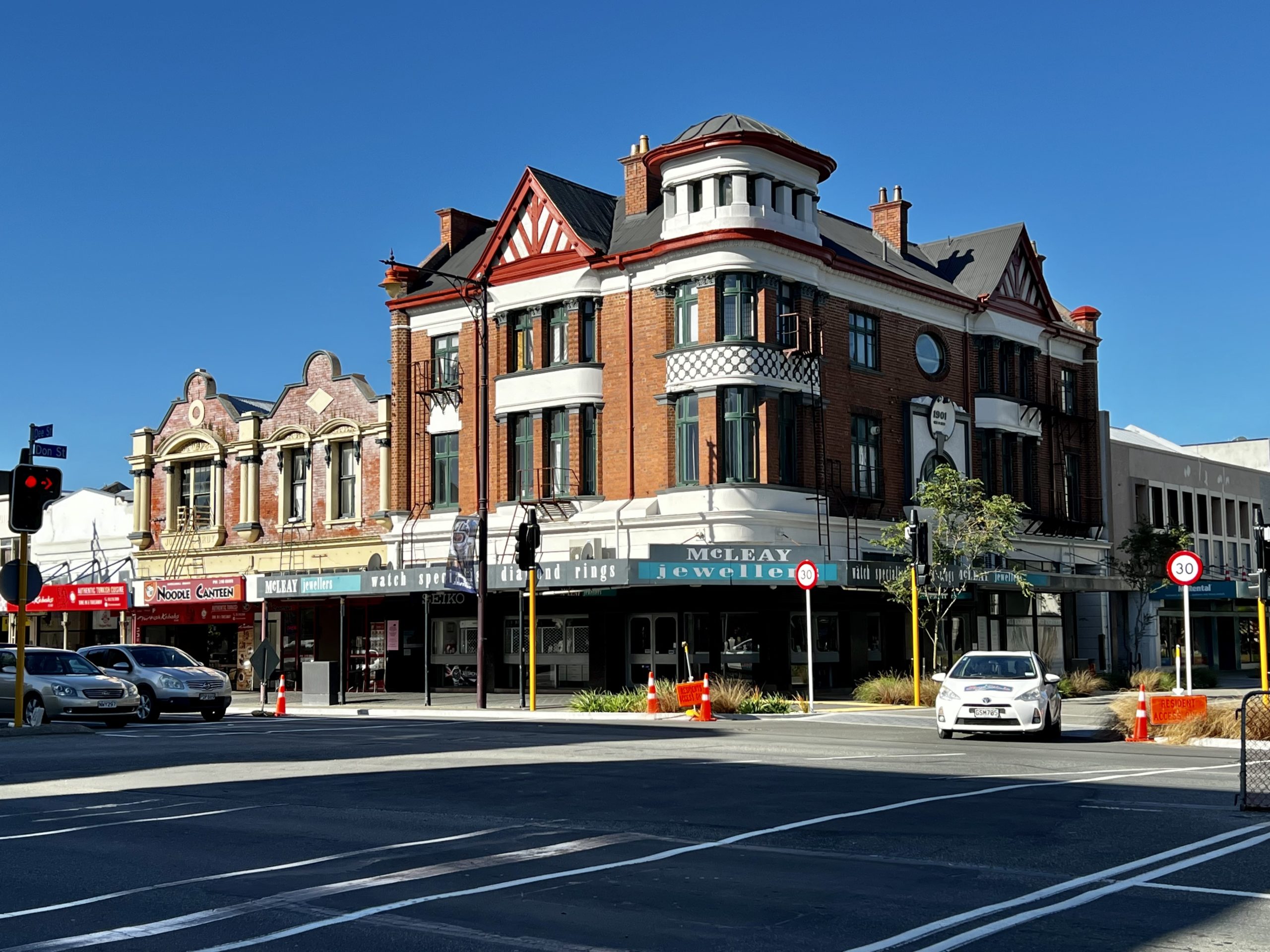

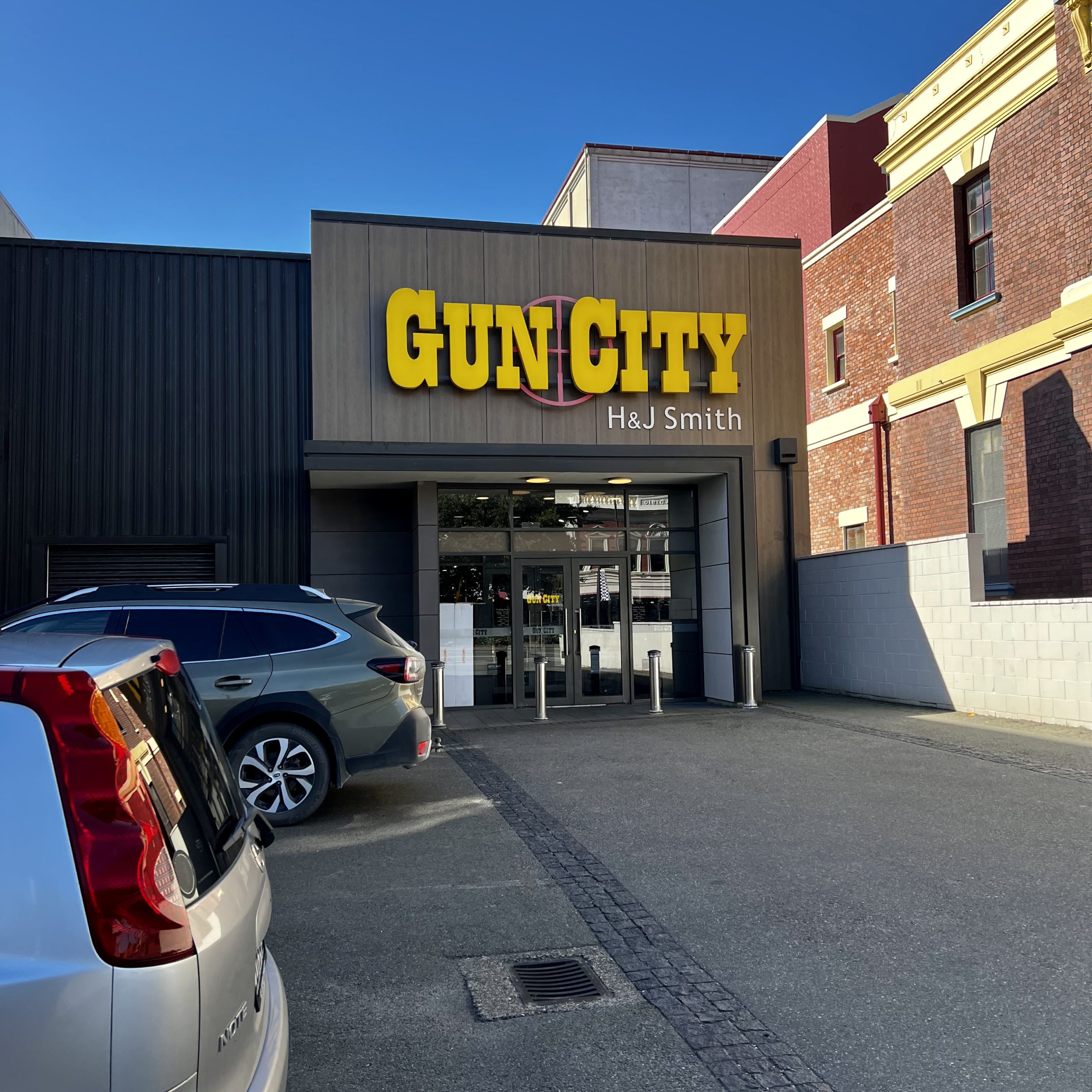
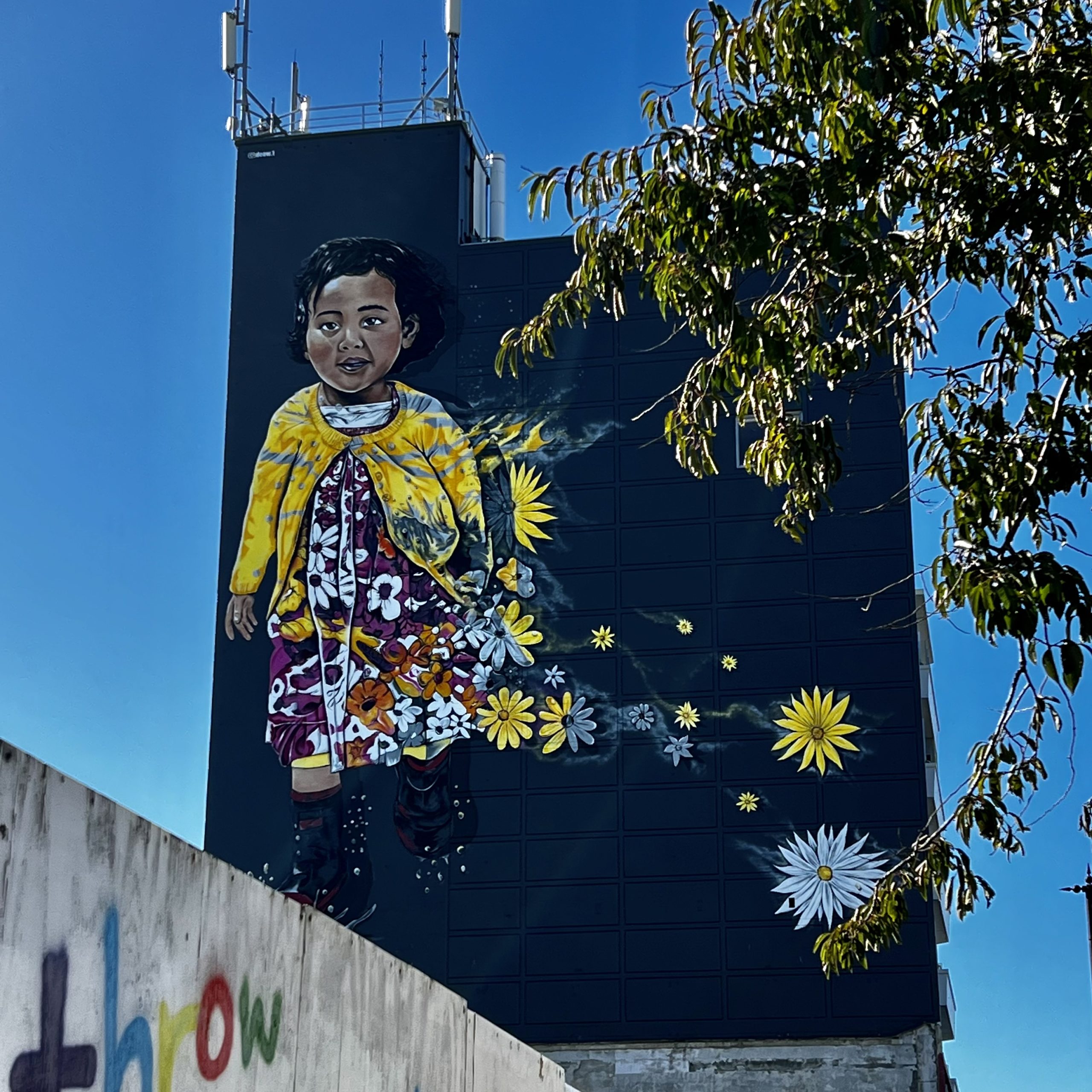
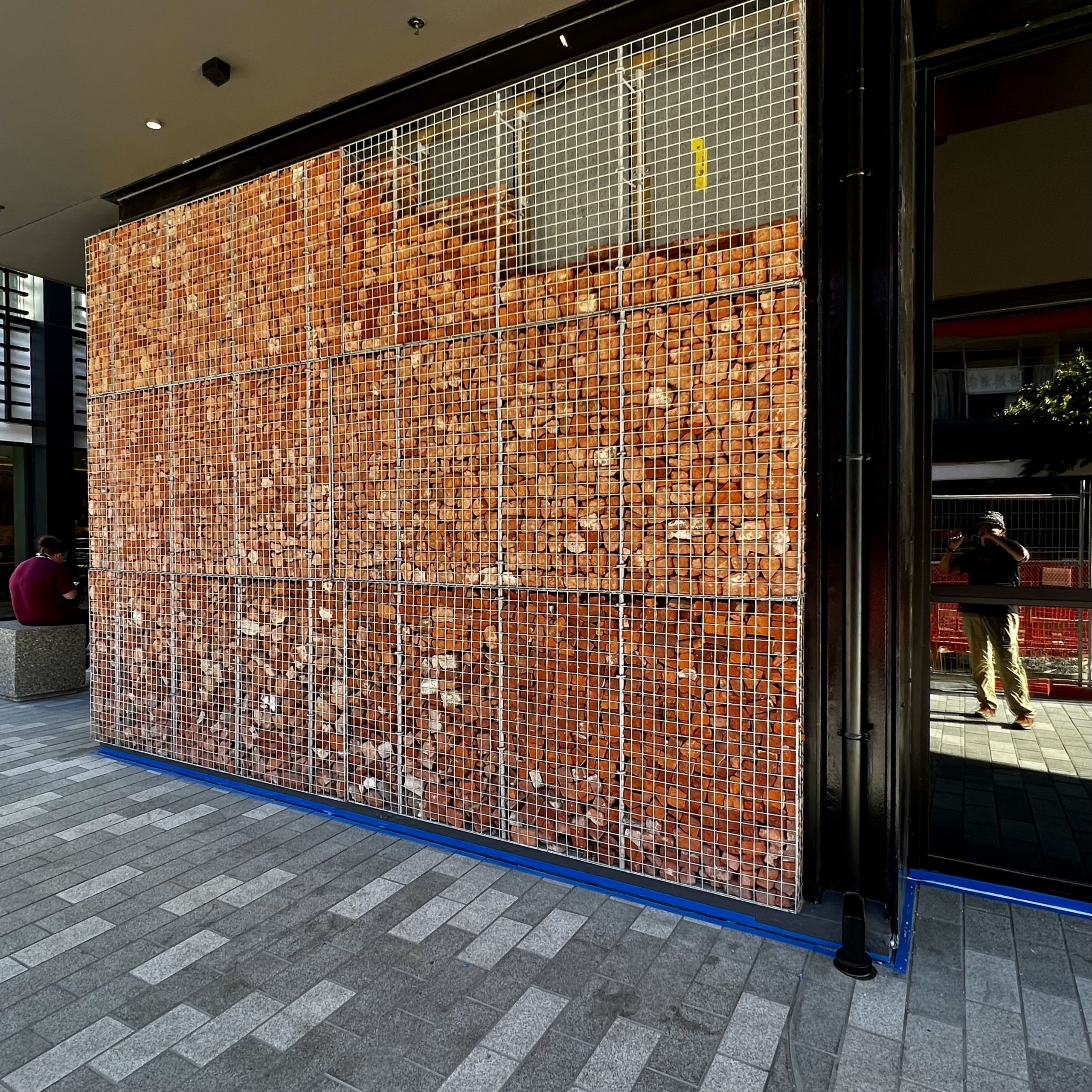
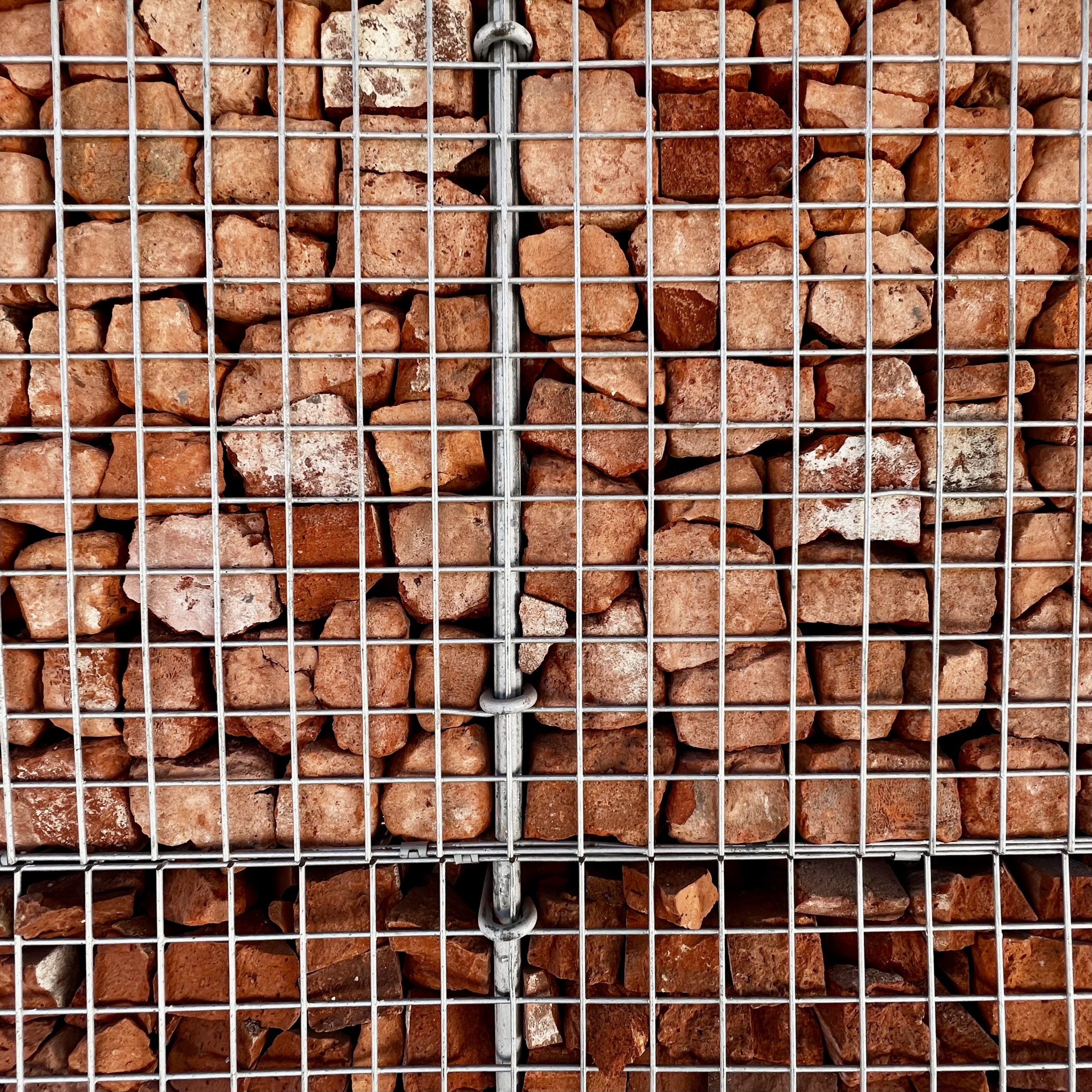
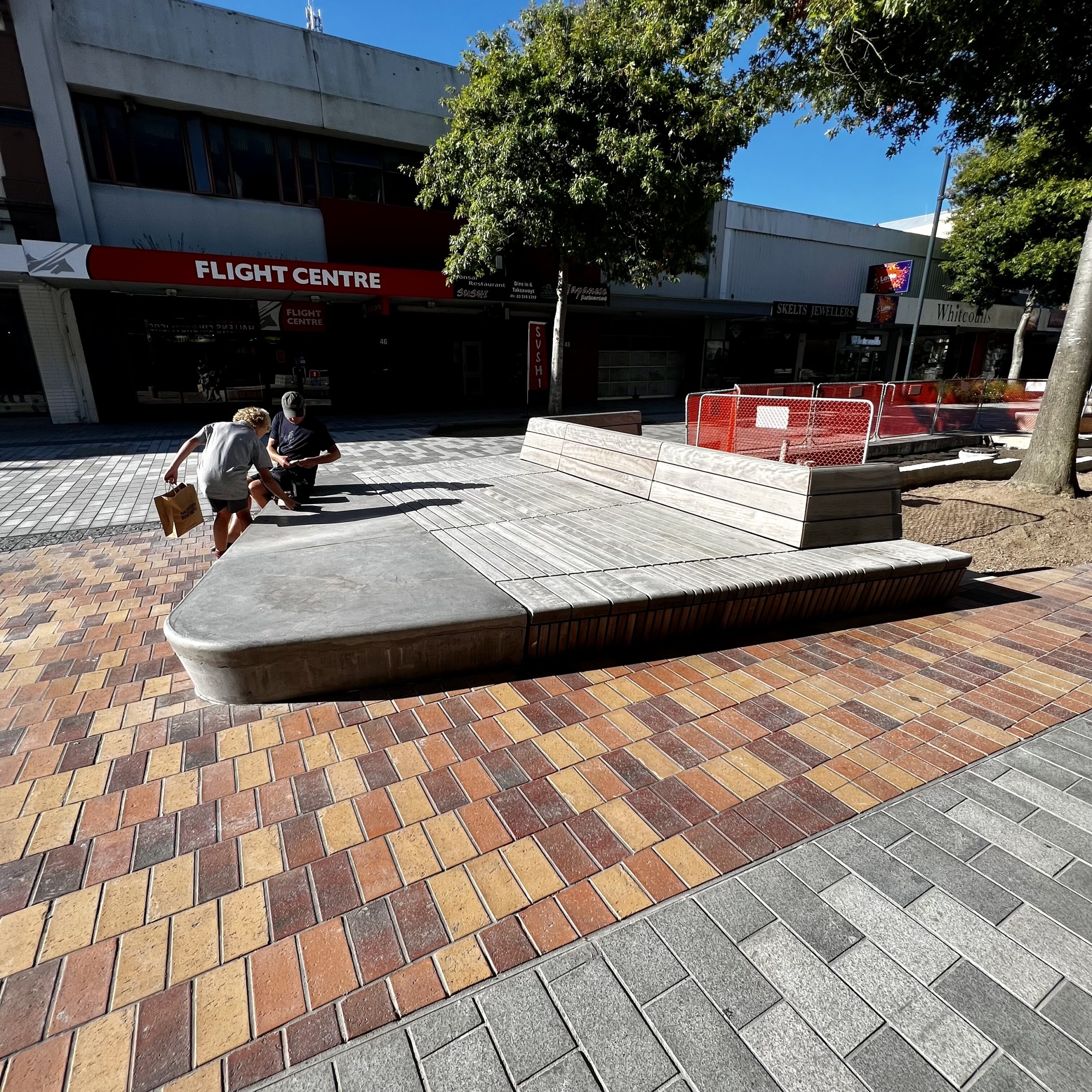
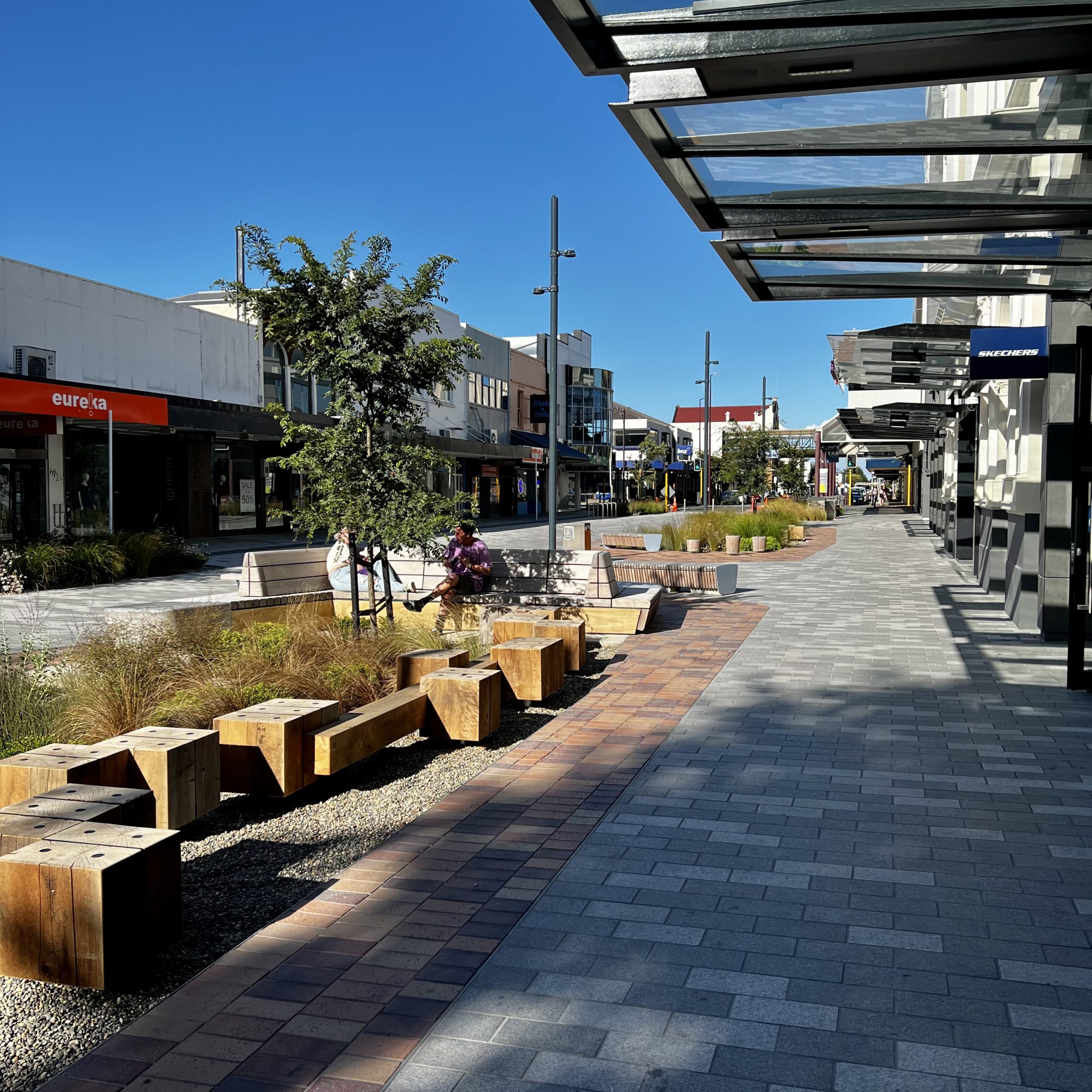
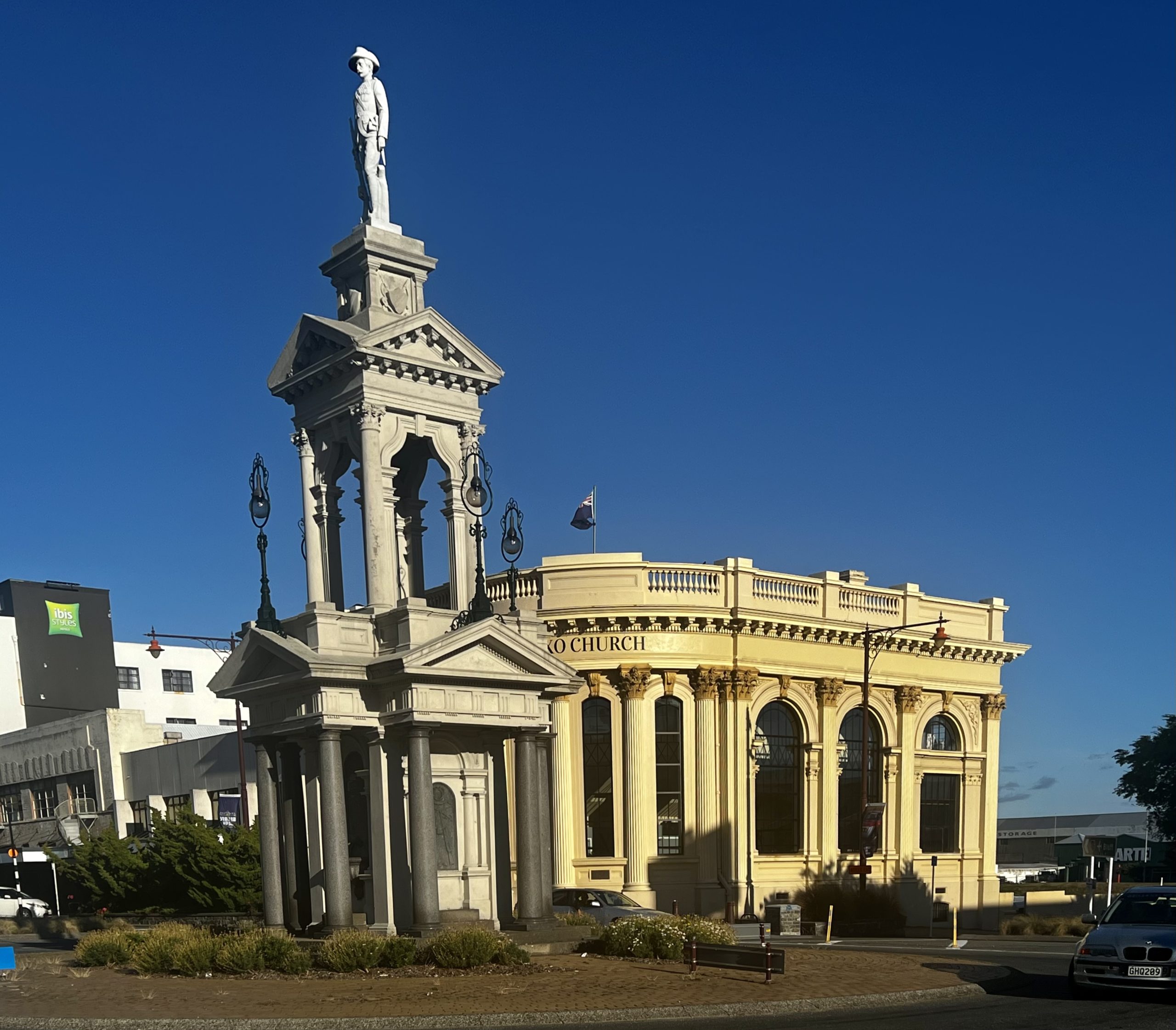
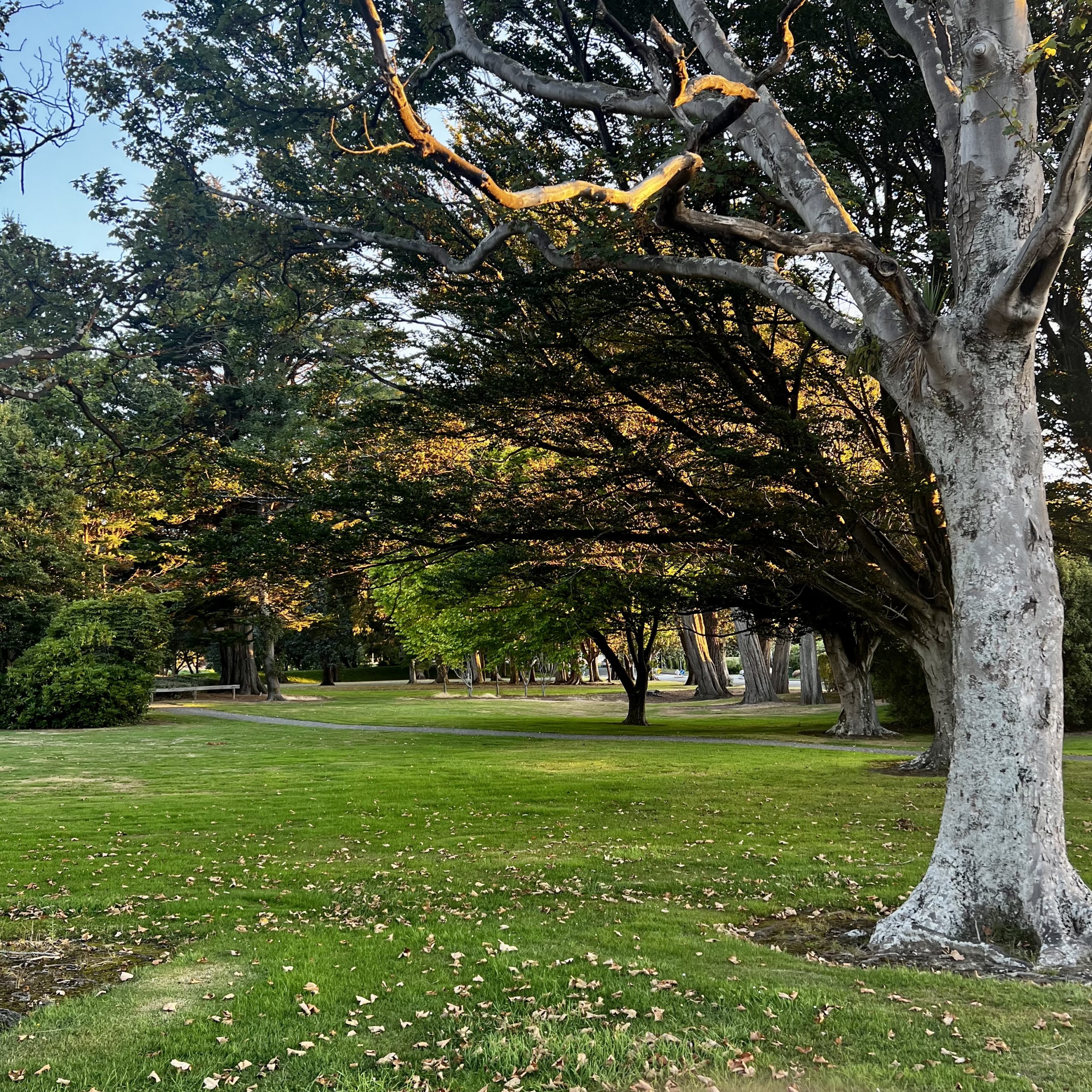
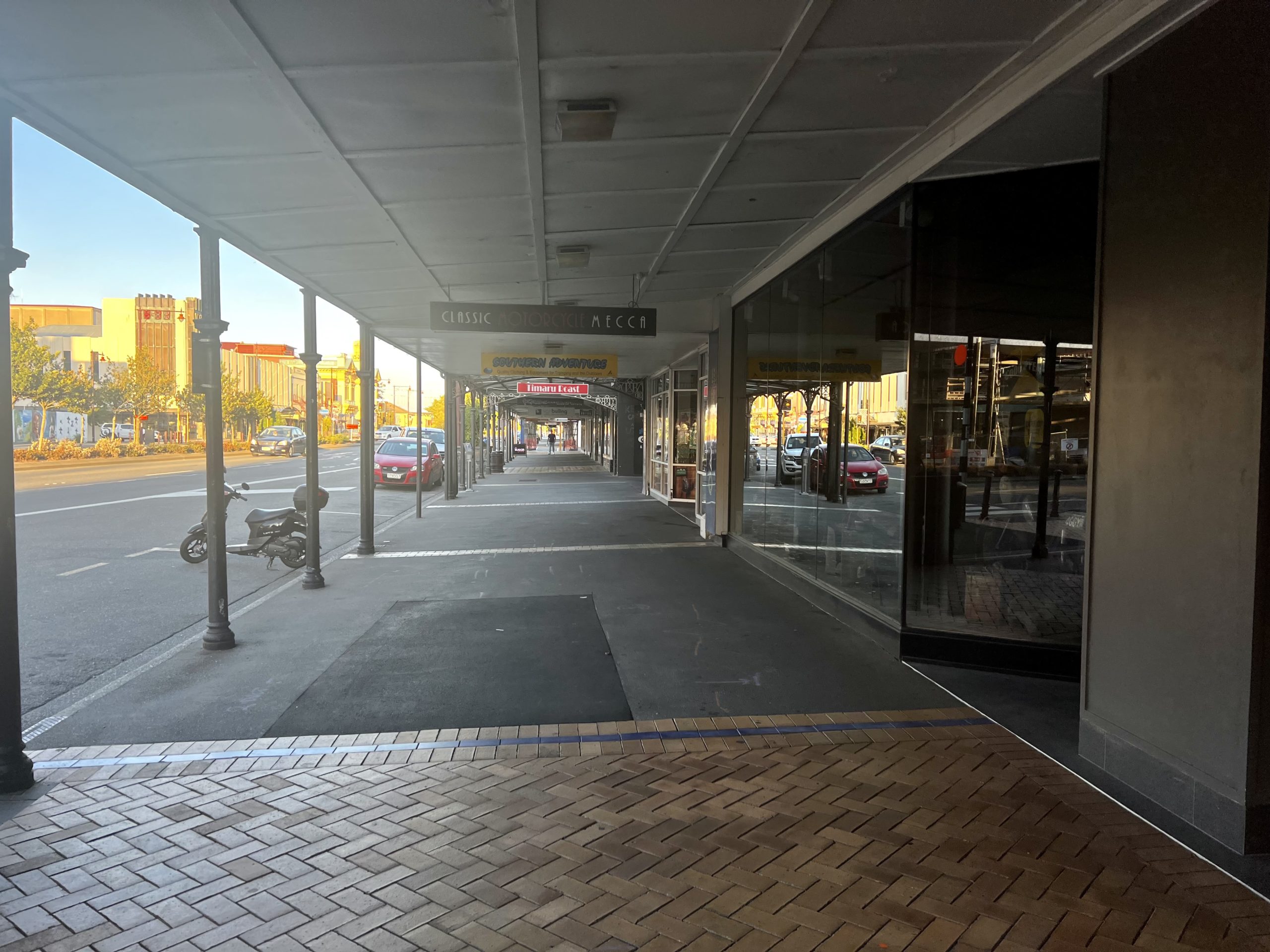
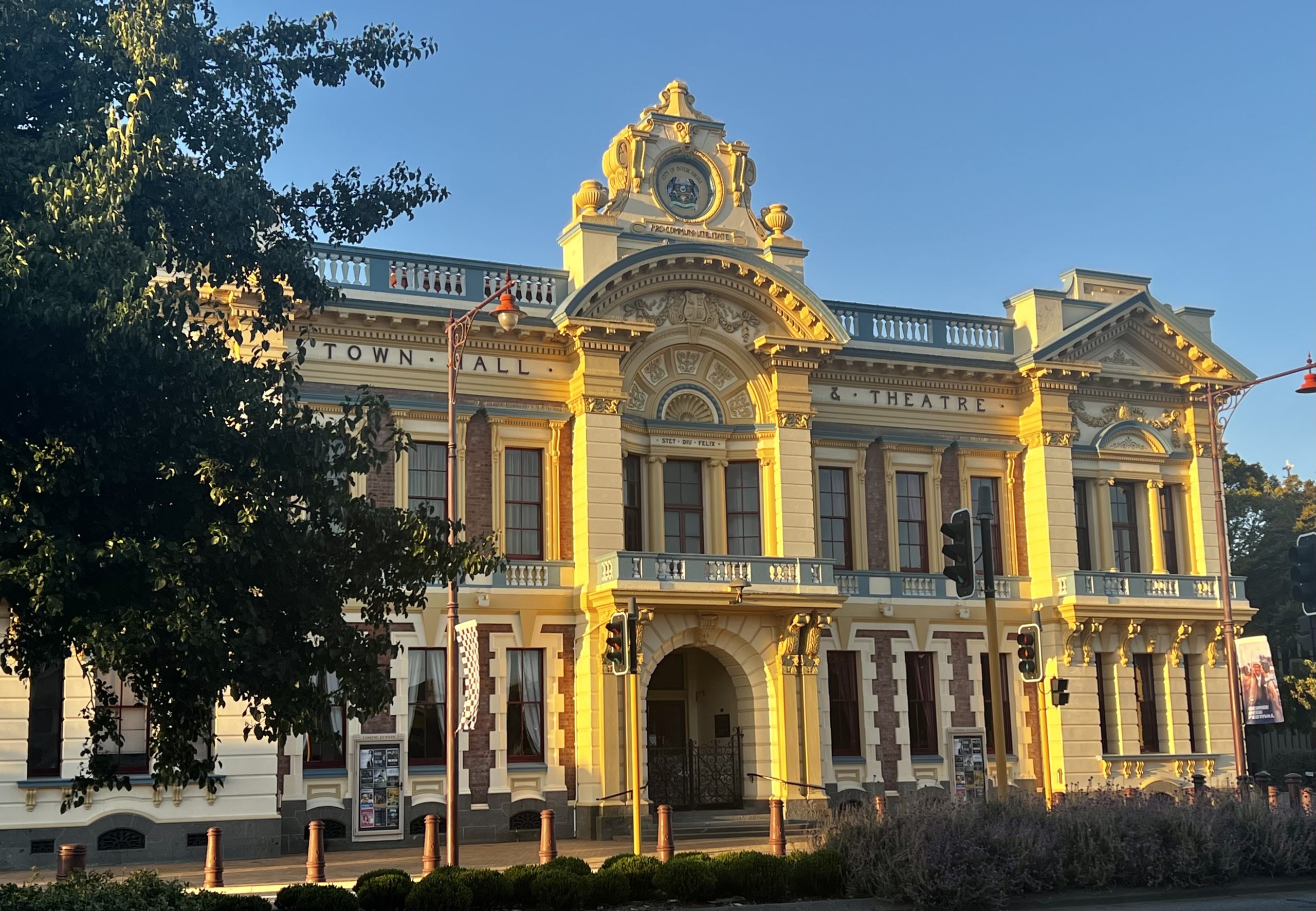

On the Way to Stewart Island/Rakiura
We signed up for an all-day series of tours, once again by RealNZ, without understanding exactly how they connected. We set up the tours by phone and they assured us that we would make all the connections because they run all the transport. Indeed it worked smoothly. This group is organized. A mini bus picked us up at our hotel in Invercargill and drove us to the port town of Bluff where we boarded a catamaran for the one-hour trip to Stewart Island. Bluff is famous for oysters. The season opened the NEXT day. Oh, well. The bus driver got us to Bluff early, so she took us to see a few scenic spots and pointed out the local cafe for coffee, which Robert visited before we boarded the boat to Stewart Island.
Lots of folks come to Stewart Island to backpack or stay the night in one of the few hotels. There are two tramps (hikes) on the island – one three days, and the other nine to eleven days. We met a couple on the boat who left their teenage boys in Auckland to do the three-day hike. The husband was very enthused. The wife seemed calm. Resigned? Robert was surprised that they did not know the length of their hike. The enthusiastic husband estimated it to be twenty-four kilometers. It is actually thirty-six kilometers. Robert encountered them again at the trail head and wished them luck.
One reason hiking is so popular in New Zealand is that there are no dangerous animals. No snakes. No bears. One of the early European explorers reported back that it was “all birds.” Thus the name of Bonnie’s favorite shoes. Animals introduced from abroad are problems, especially deer, possums, weasels, ferrets, rats, and rabbits. There are periodic campaigns to eradicate them or at least reduce the numbers, particularly where they threaten birds. The Department of Conservation uses poison dropped from helicopters and traps. A homeowner on Stewart has pest-proof fence, so birds thrive on his large property and insure birds for the rest of the island. The only bothersome animals in the New Zealand wild are the sandflies near water. Much more uncomfortable bites than from mosquitoes.
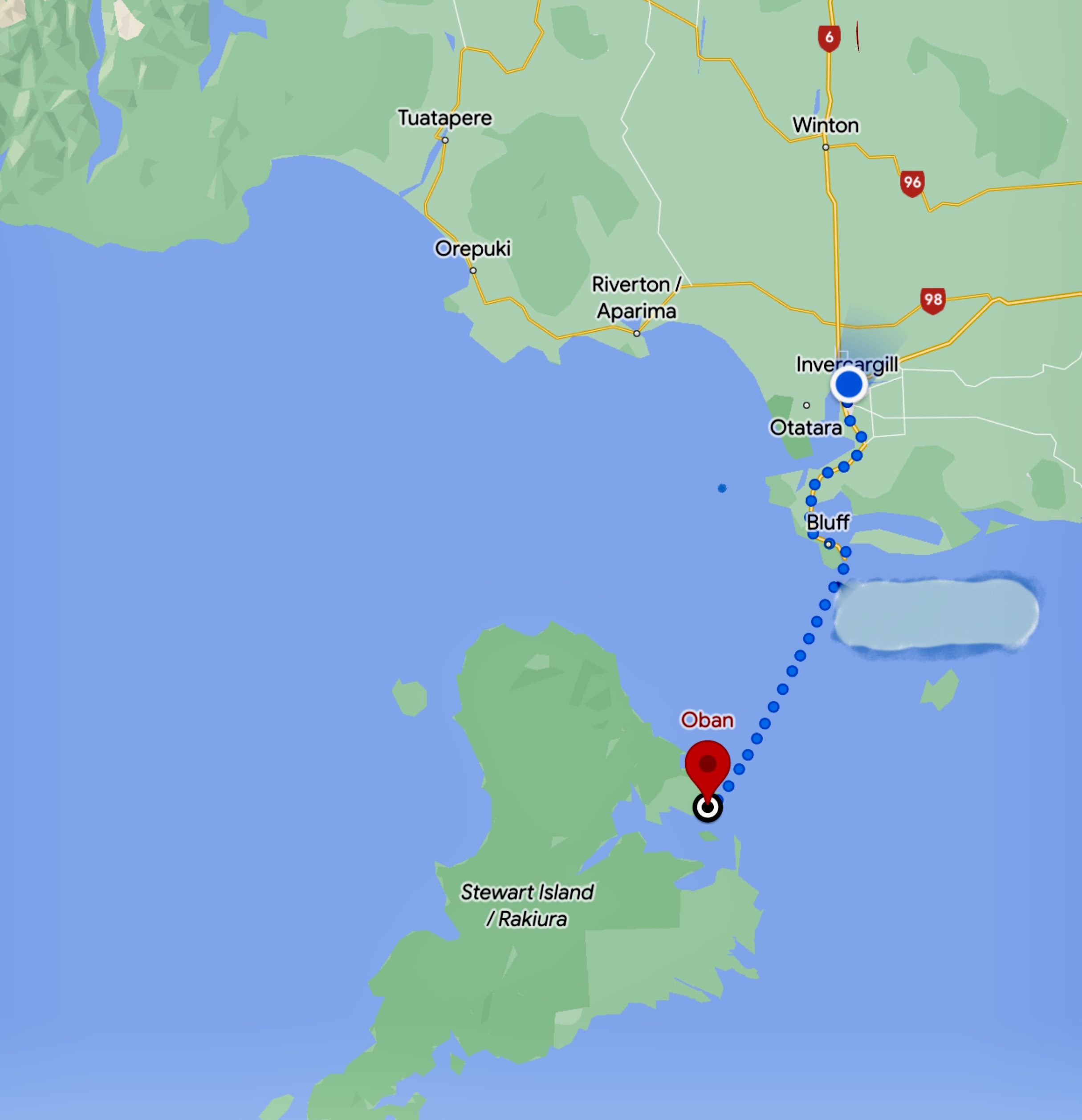
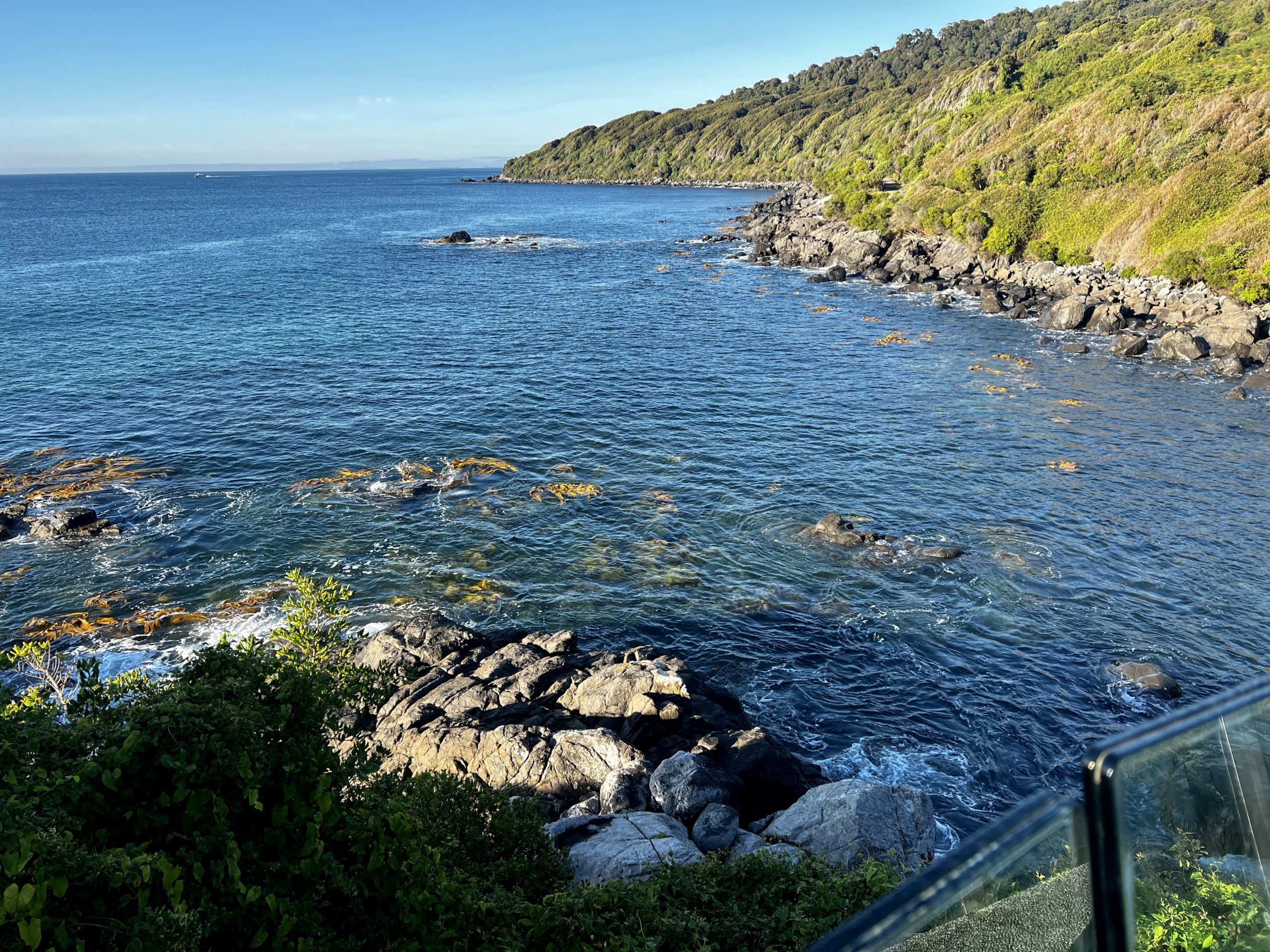
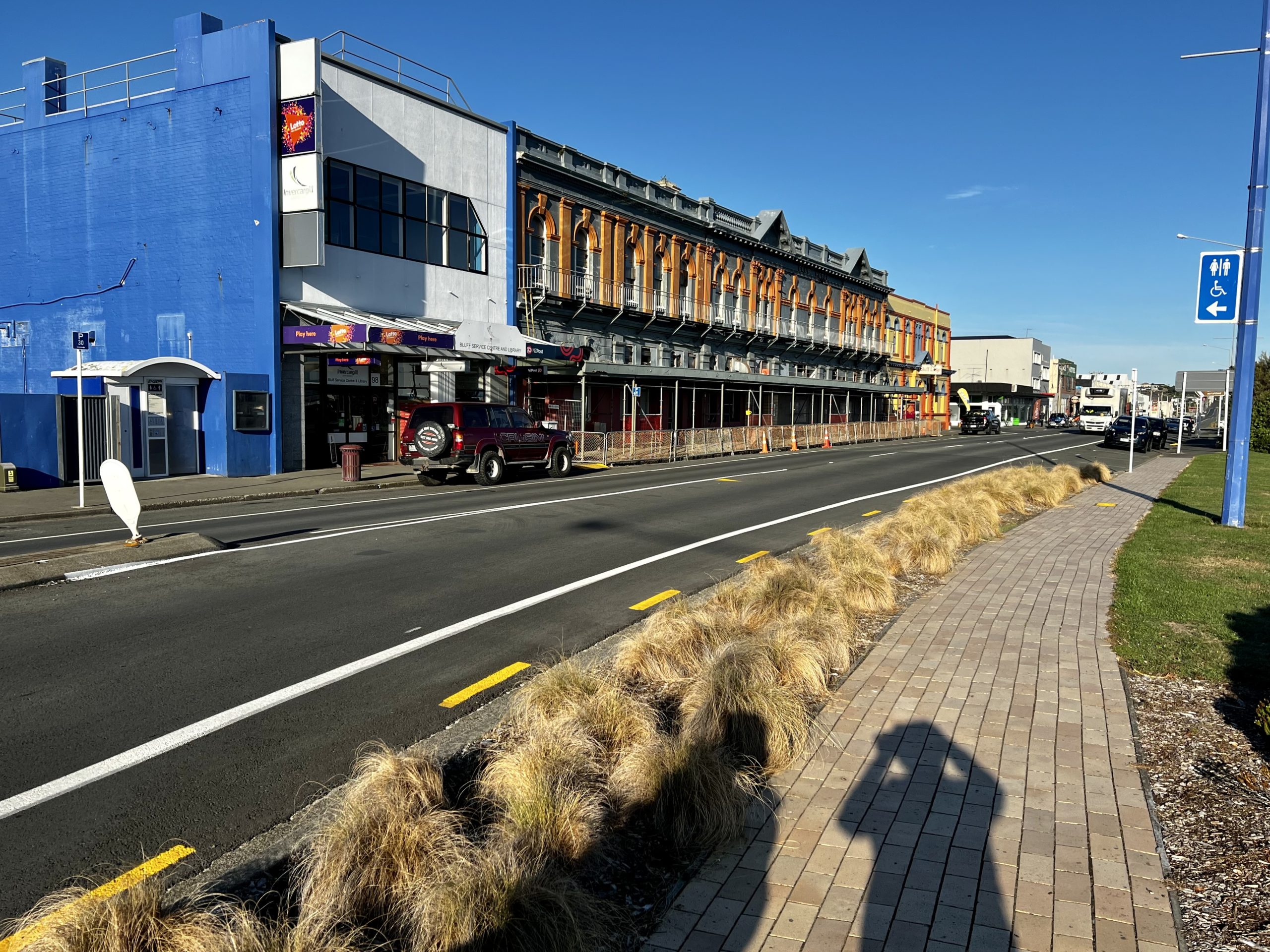
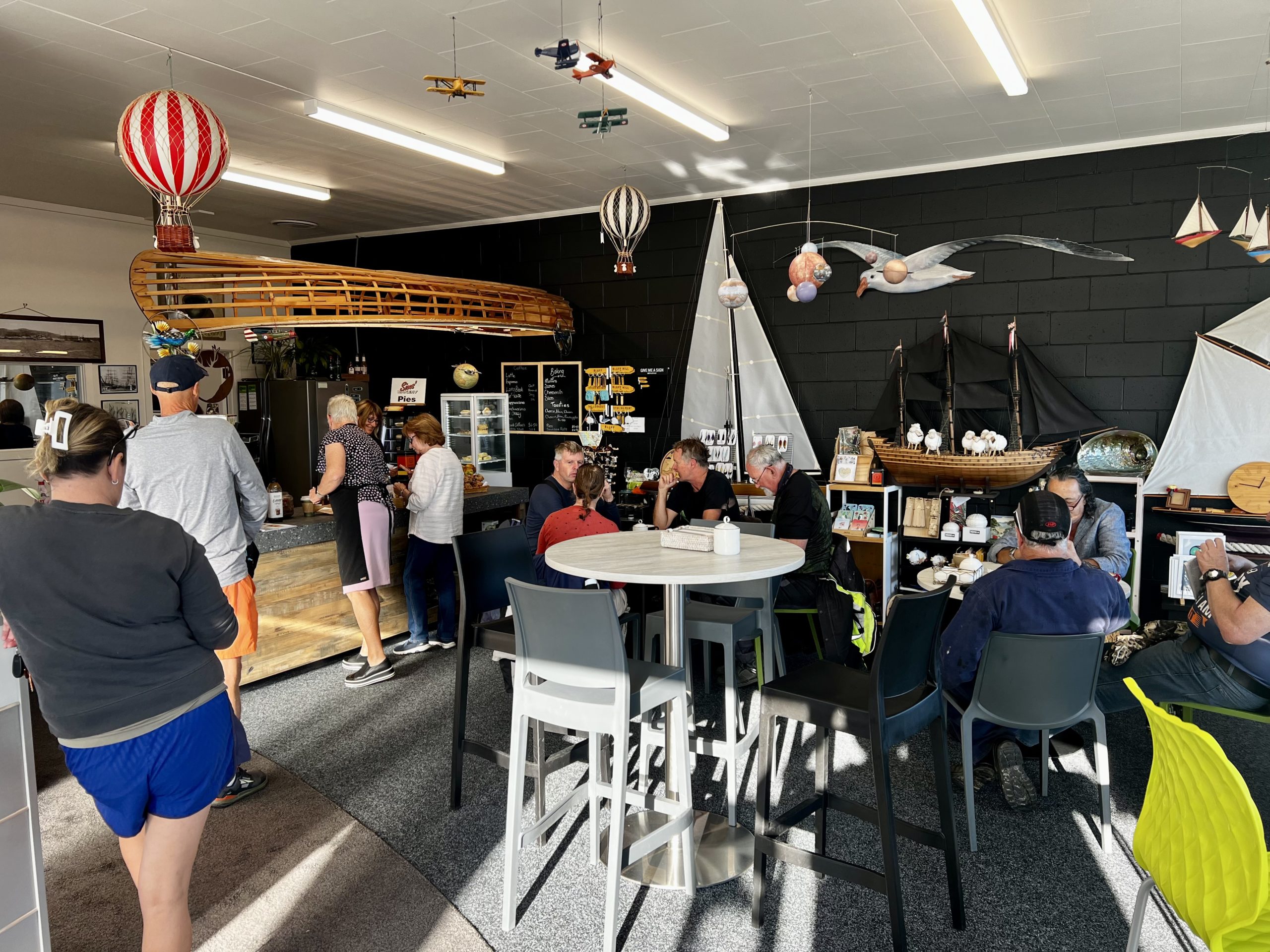
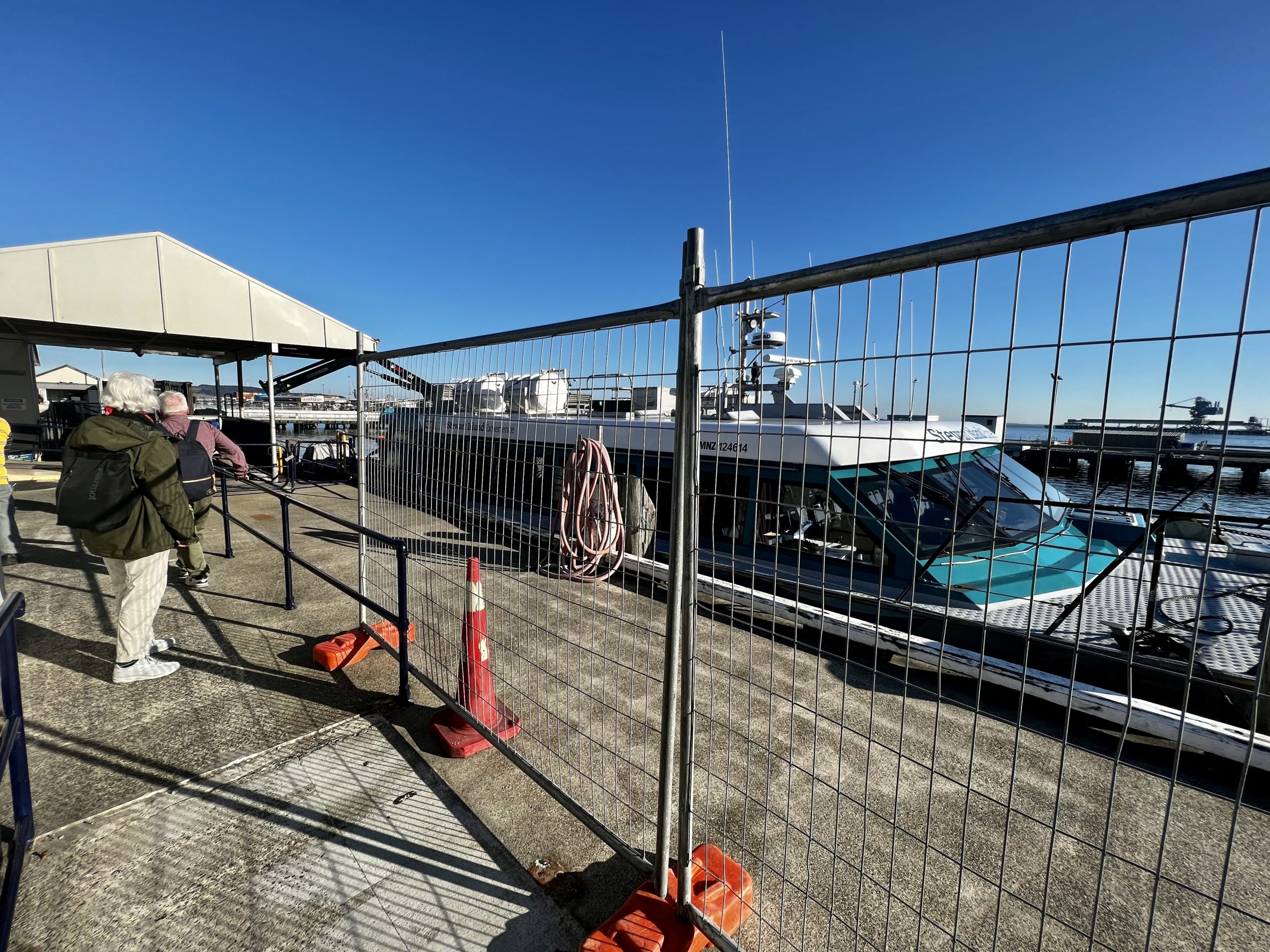
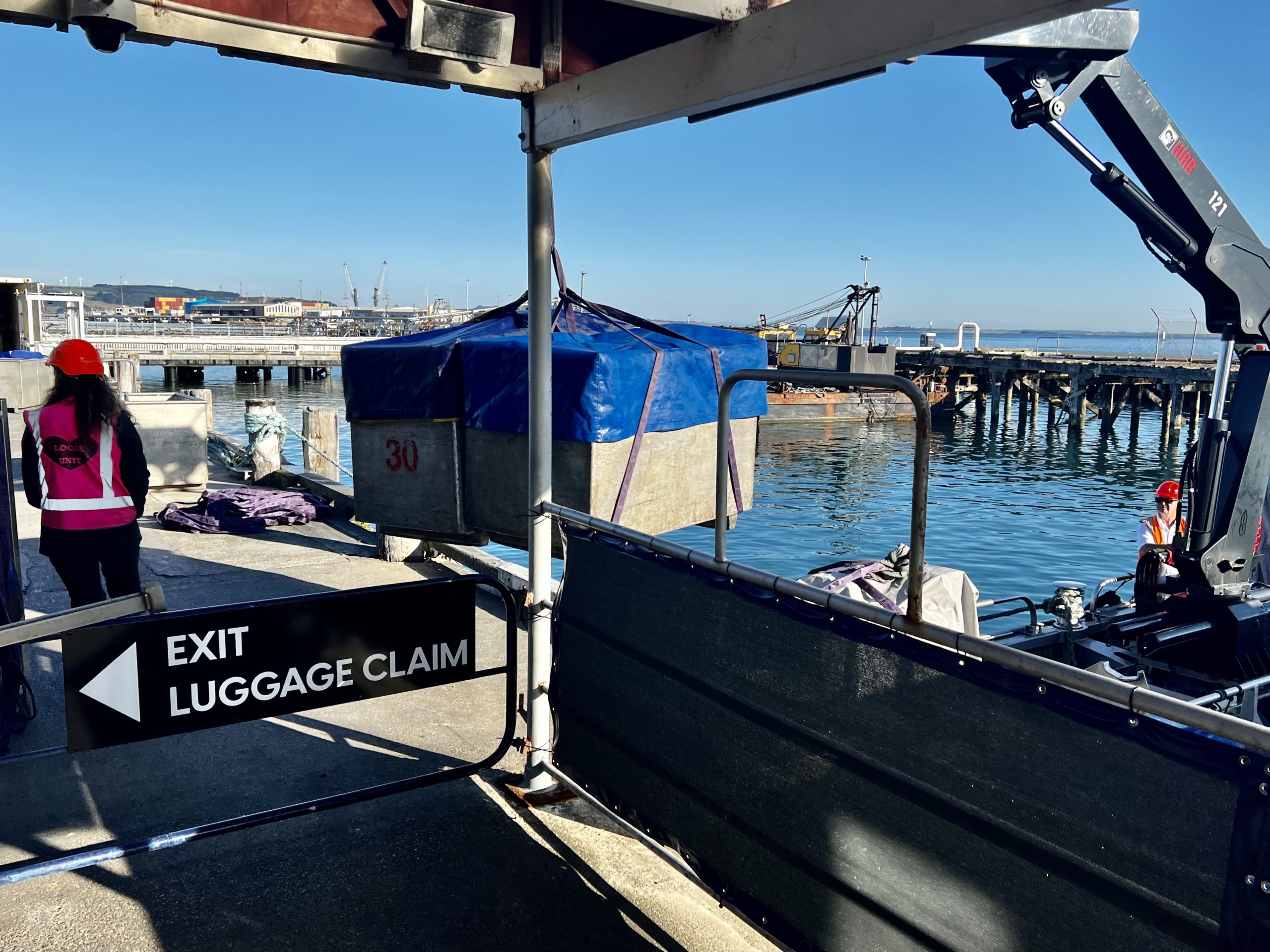
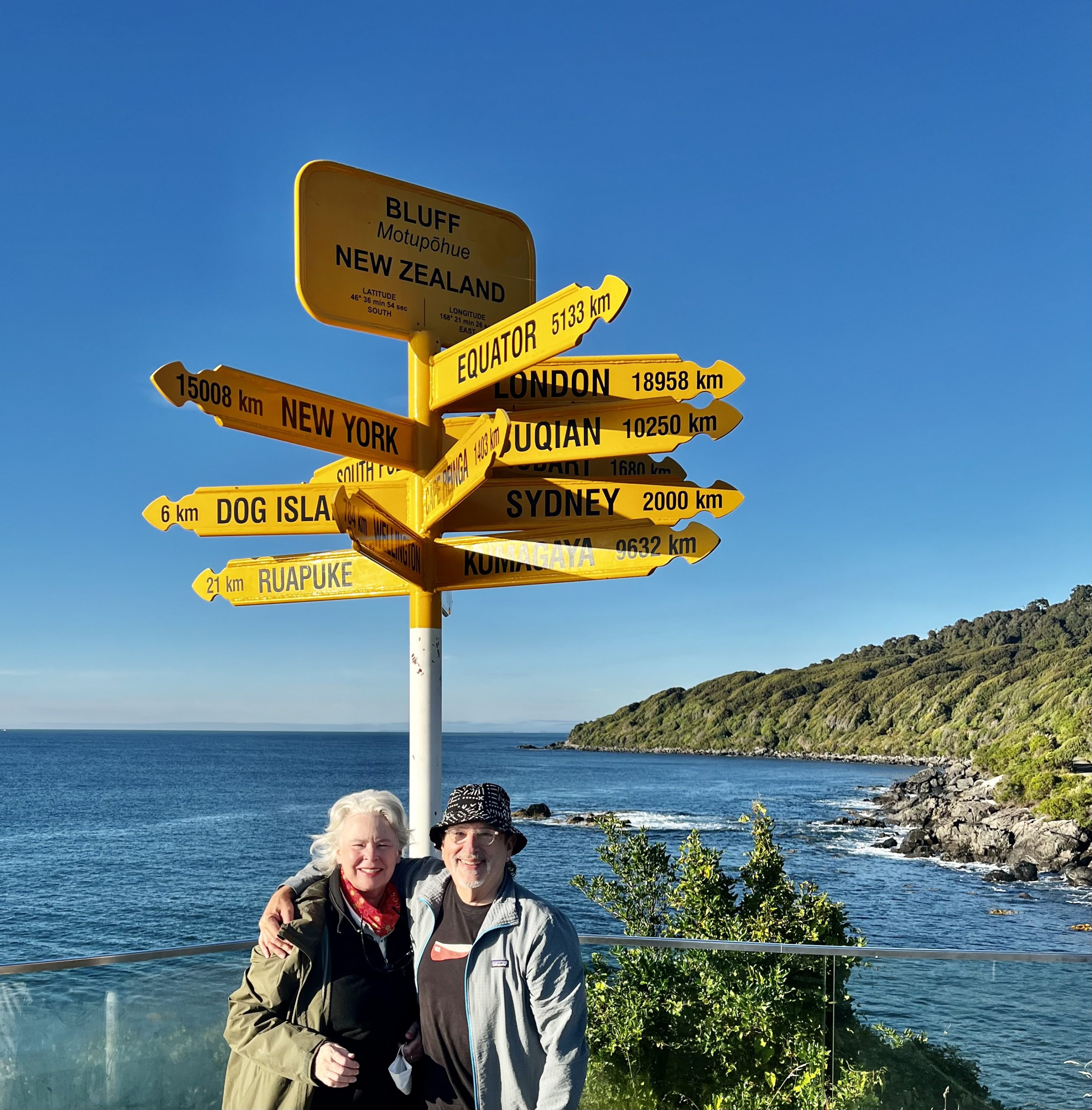
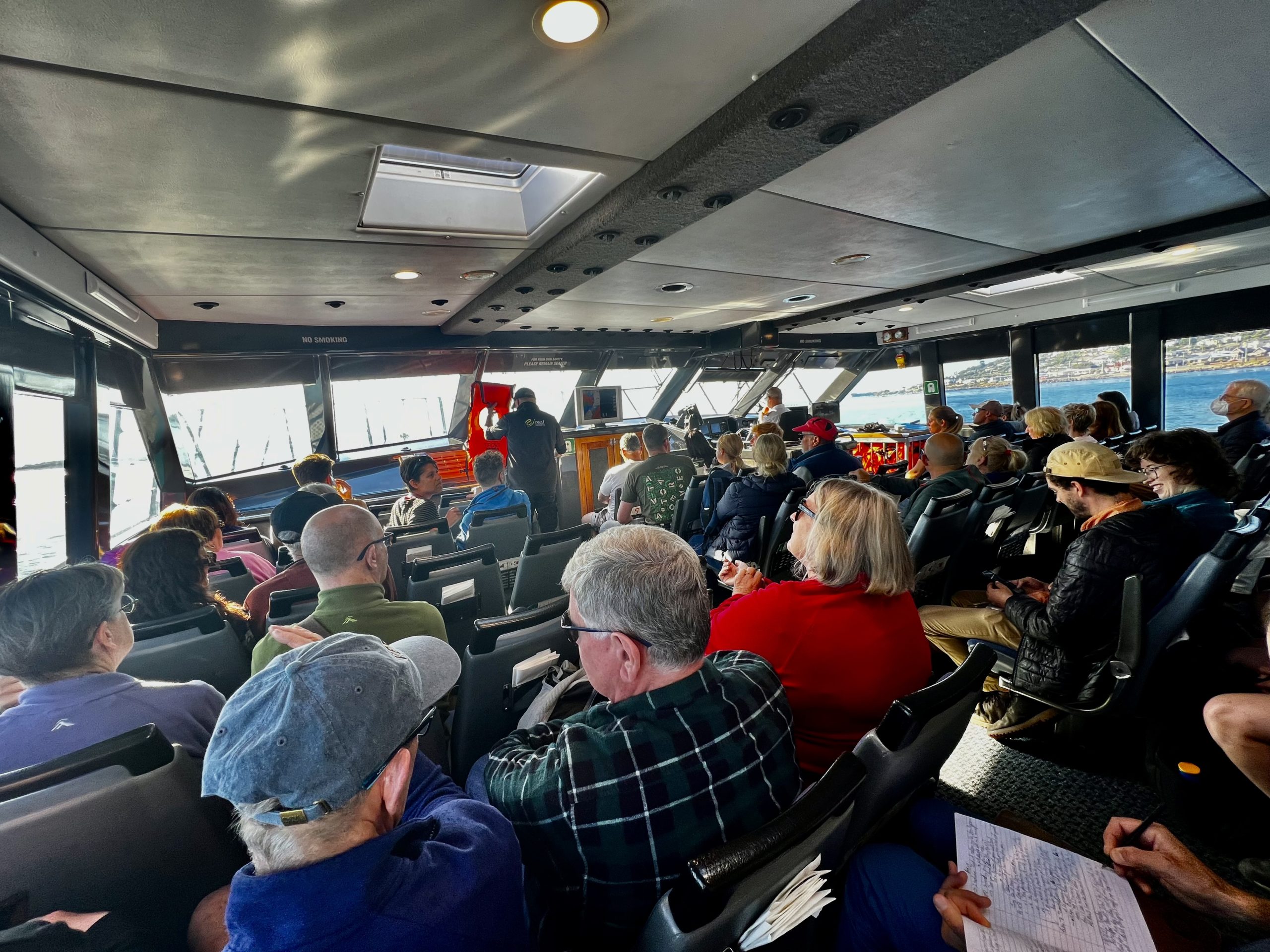
Oban, Stewart Island
This community is SMALL—400 people total—the only town on a large island nature reserve. The roads on the island amount to 27 kilometers (17 miles) in all. Residents really do not need their cars much. Oban became popular in the past few years, so now holiday homes purchased there are used year round and there is a four-year wait for contractors to build new homes. The community is strongly bonded. They raise funds to hire an extra teacher for their primary school of thirty-eight students, bringing the total number of teachers to three. Felled trees are cut for wood burning stoves and delivered to the elderly. Residences use rainwater that flows off their roofs into tanks. Because they are experiencing a drought, people who run out of water call the fire department to pump water from a nearby stream and hose onto the roof to fill the tanks. This water is fine for showers, but must be boiled for drinking. We learned all this from our van driver, who pointed out that he had to drive slowly and make lots of stops for photos and hikes or he would cover all the roads in fifteen minutes!

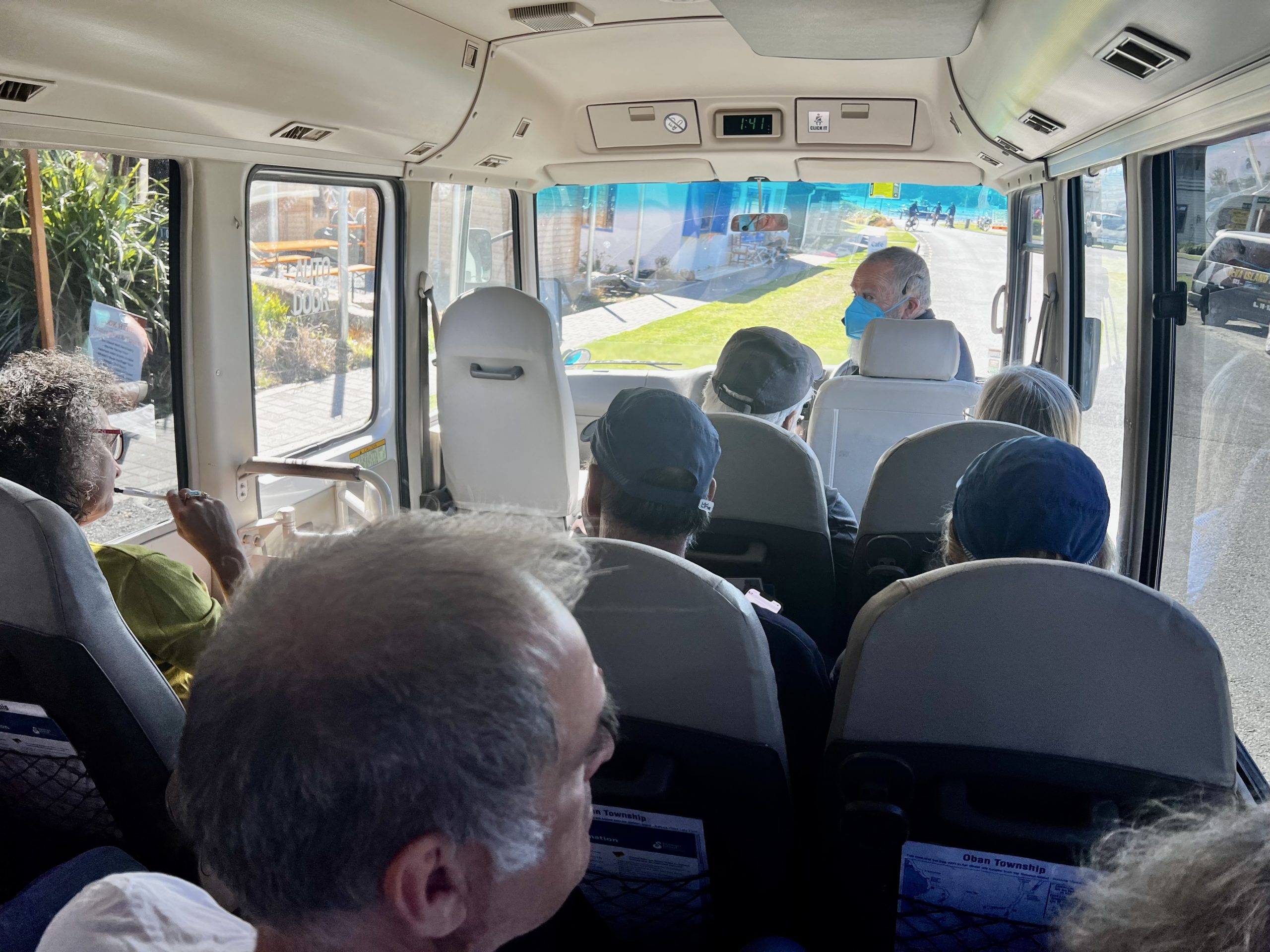
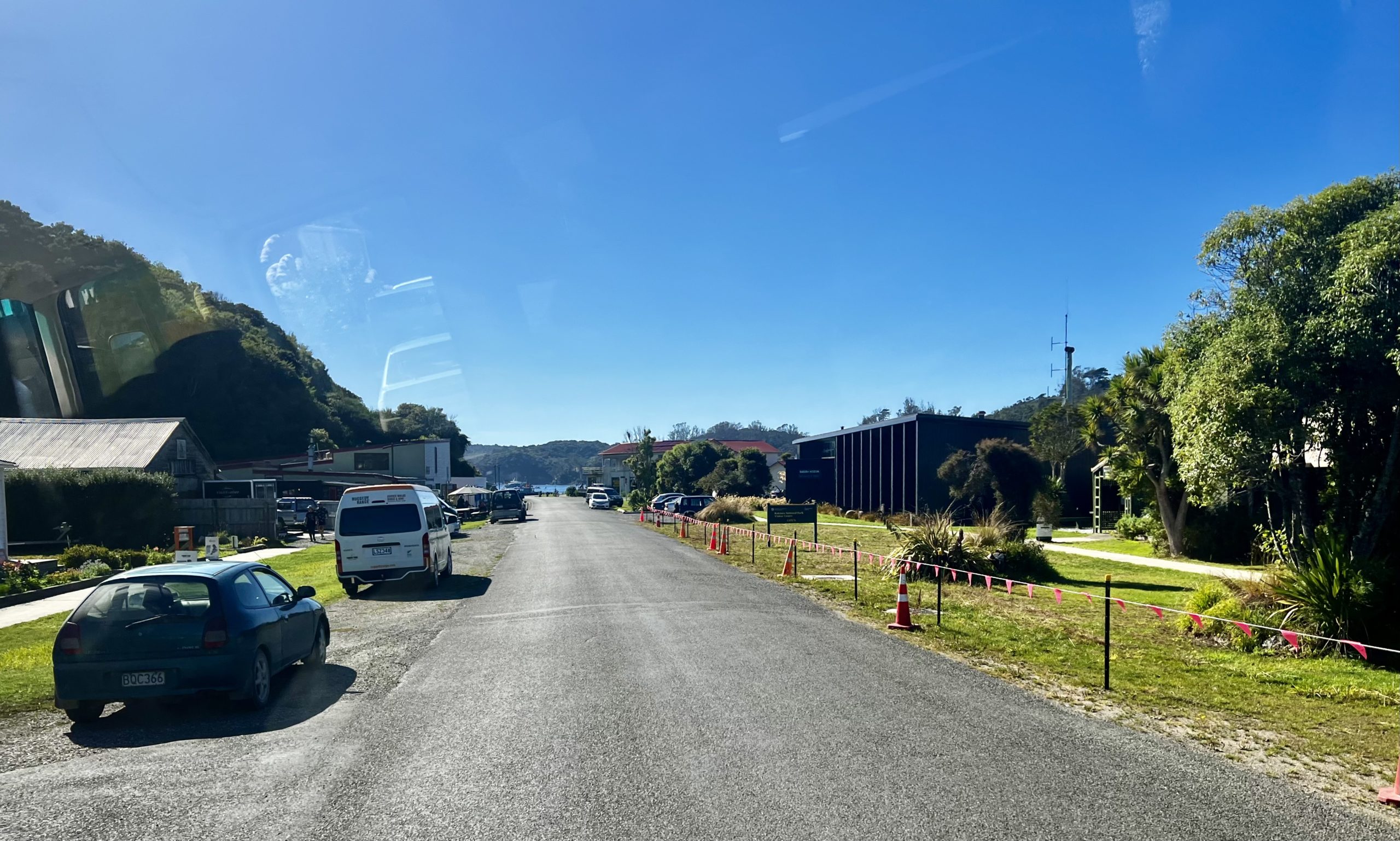
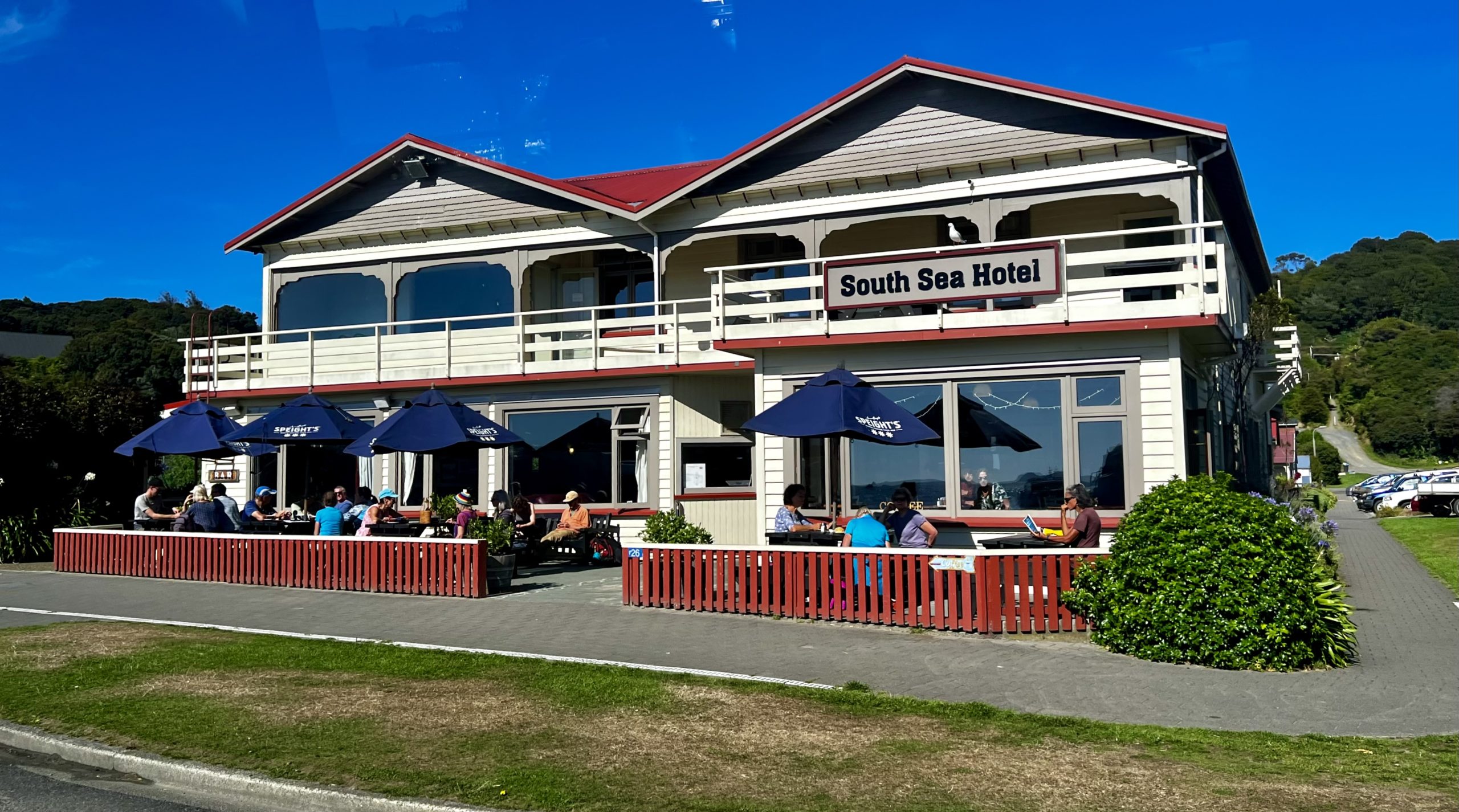
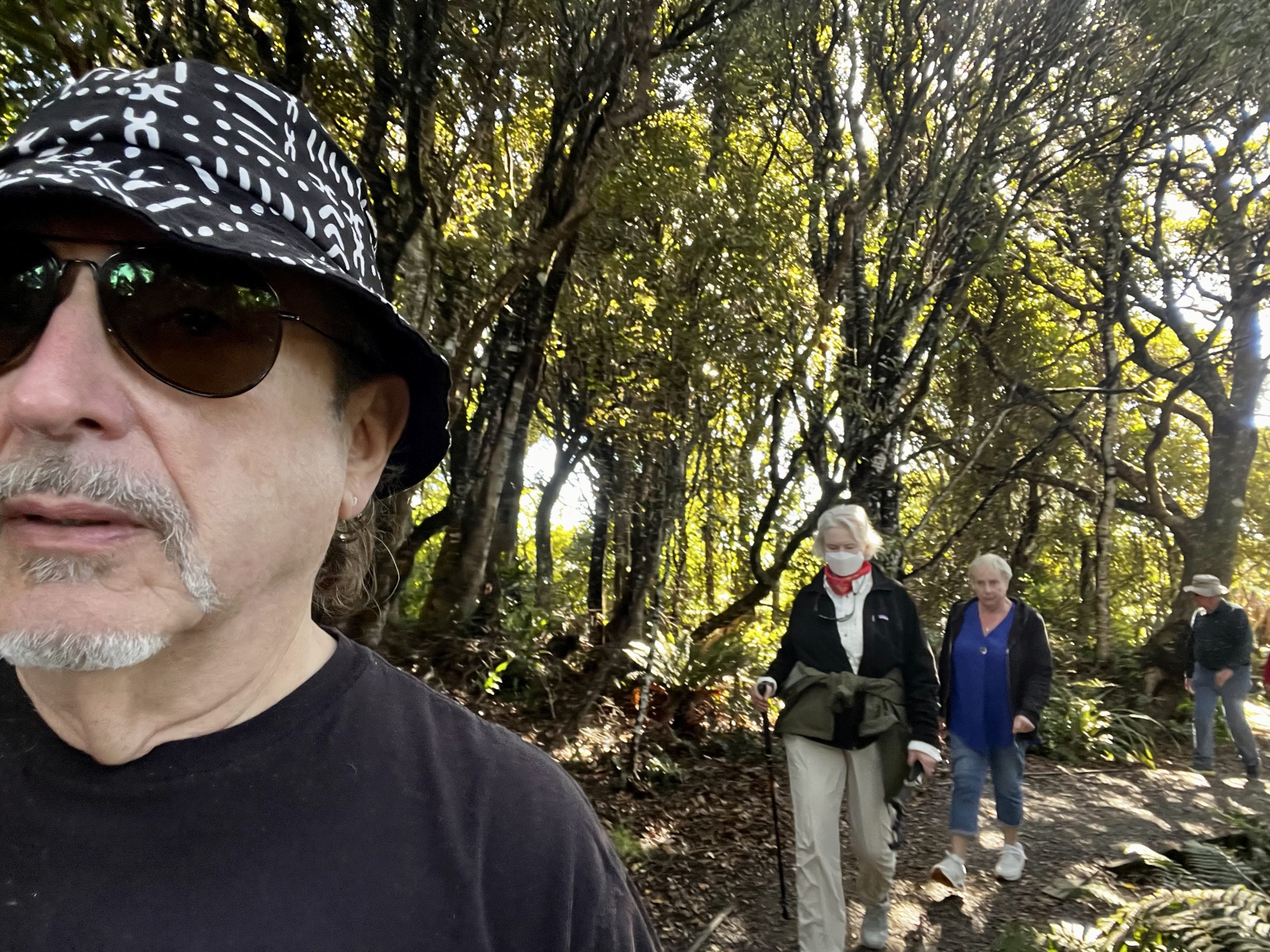
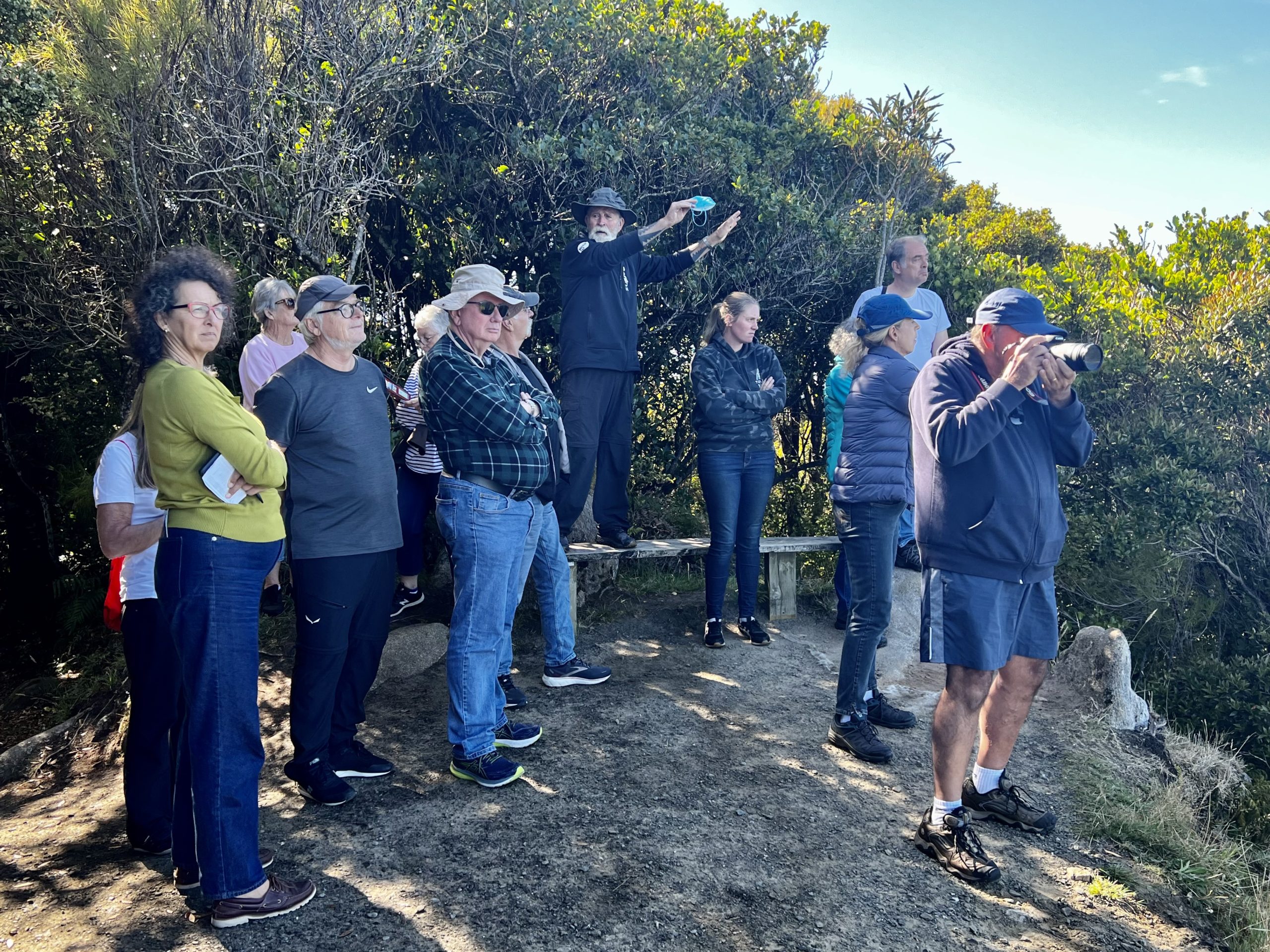

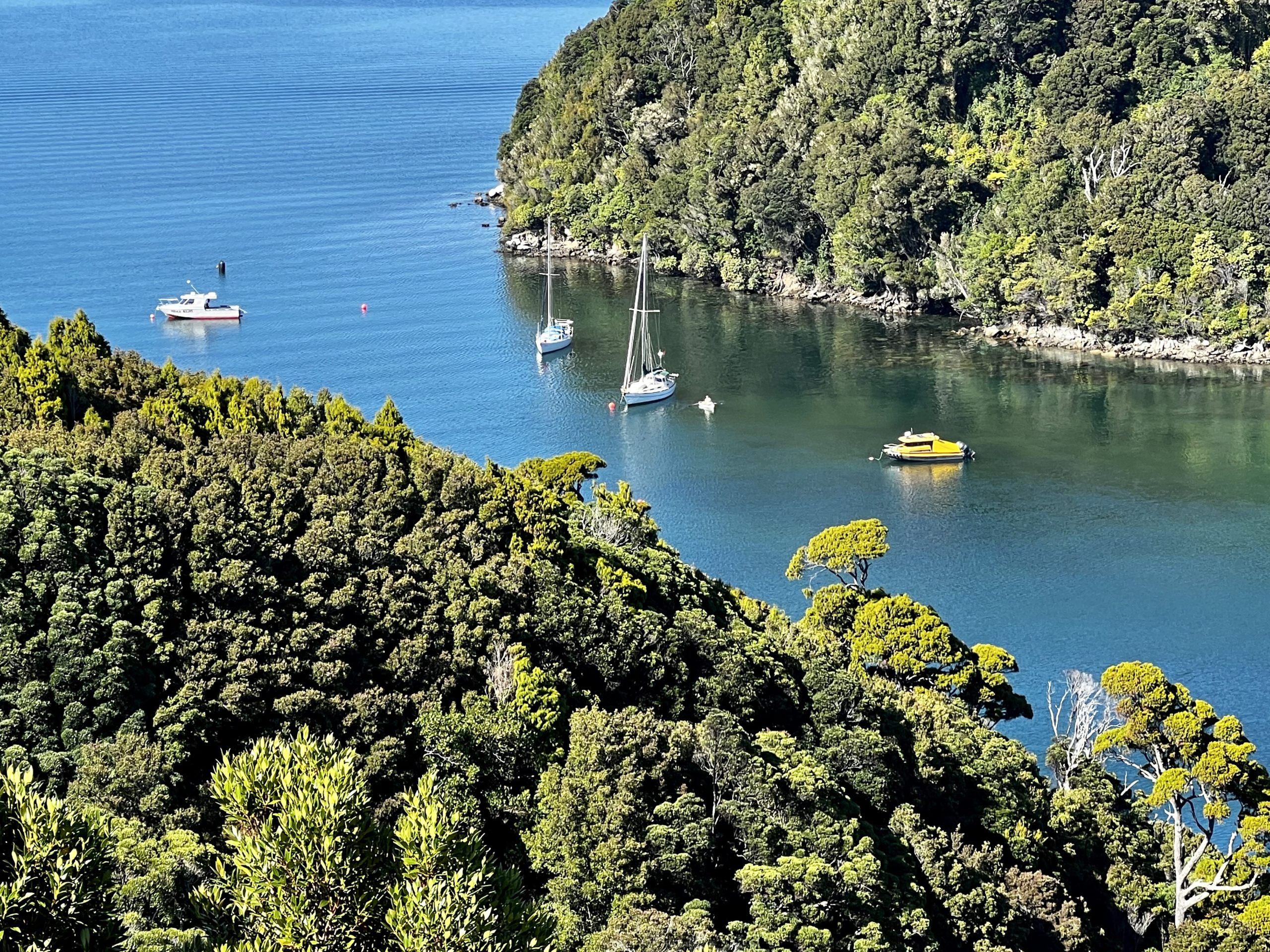
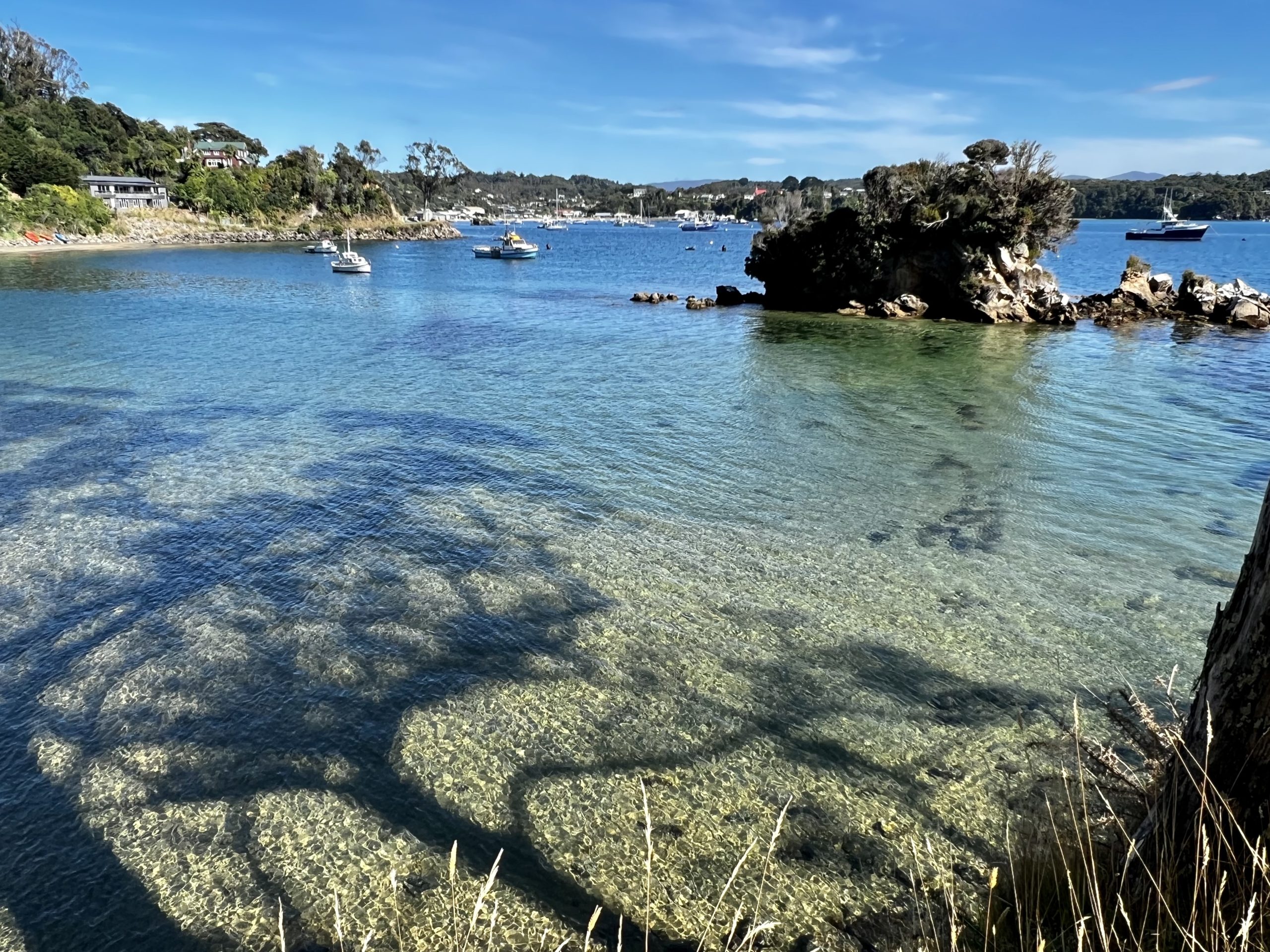
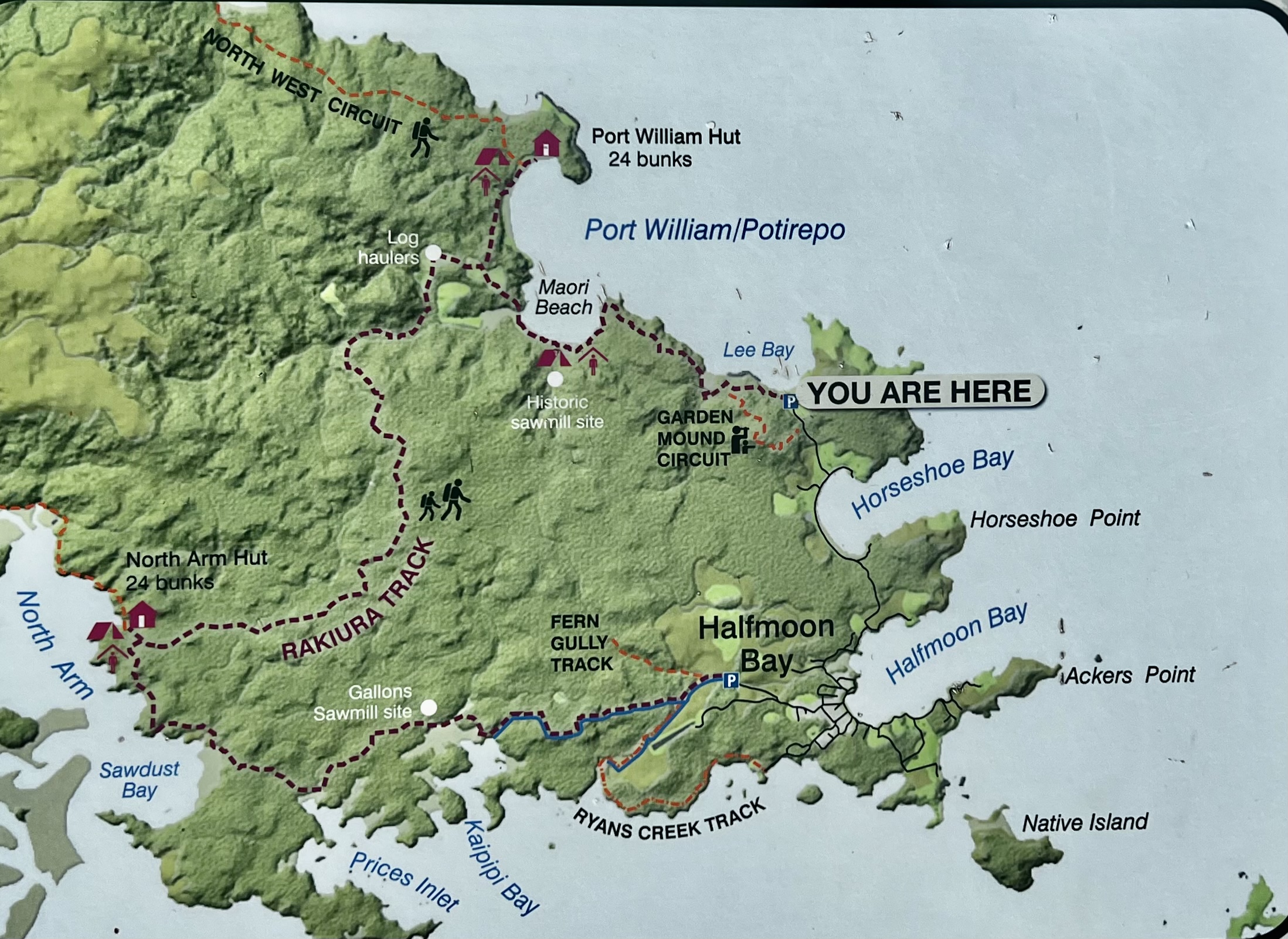
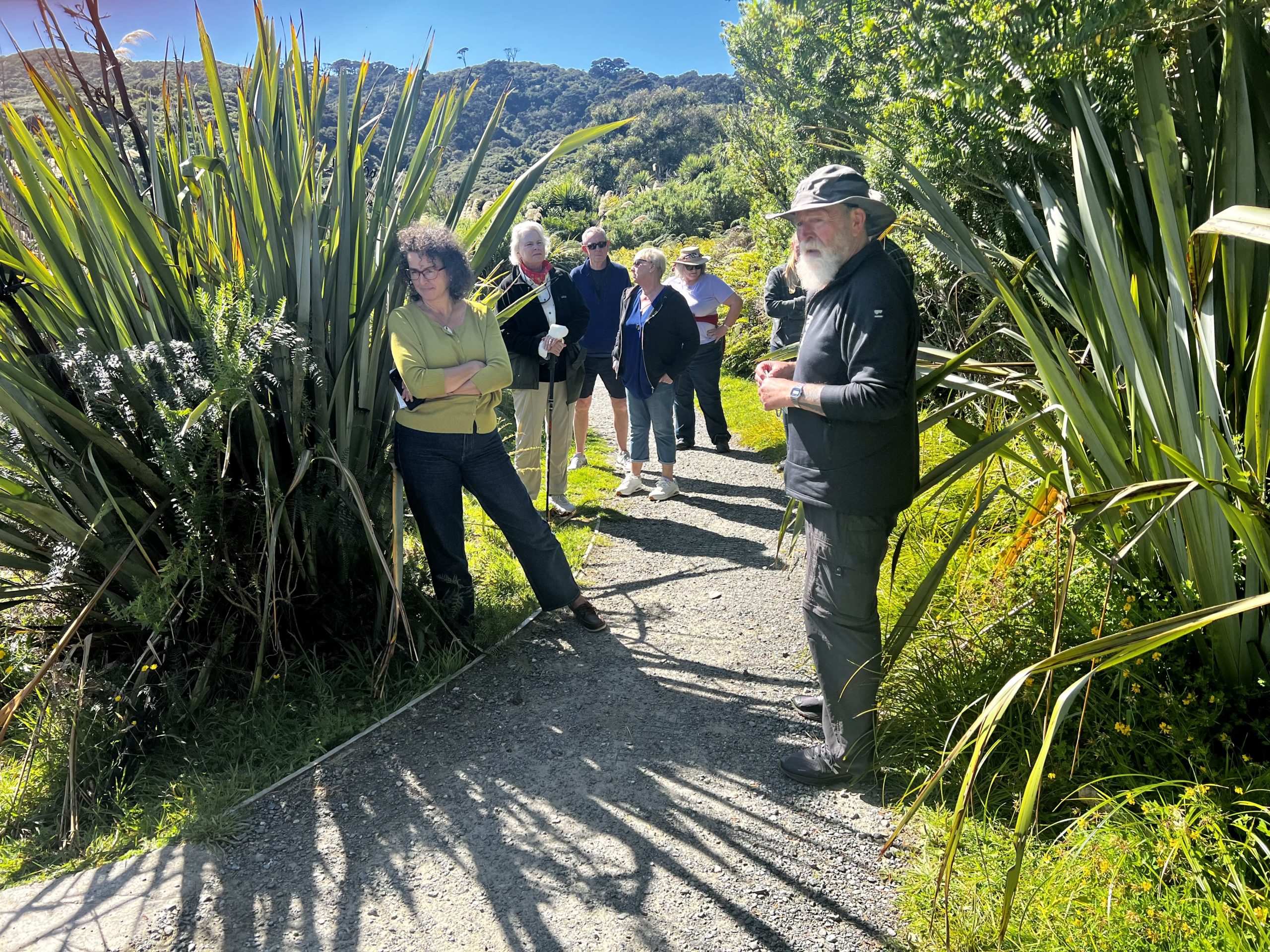
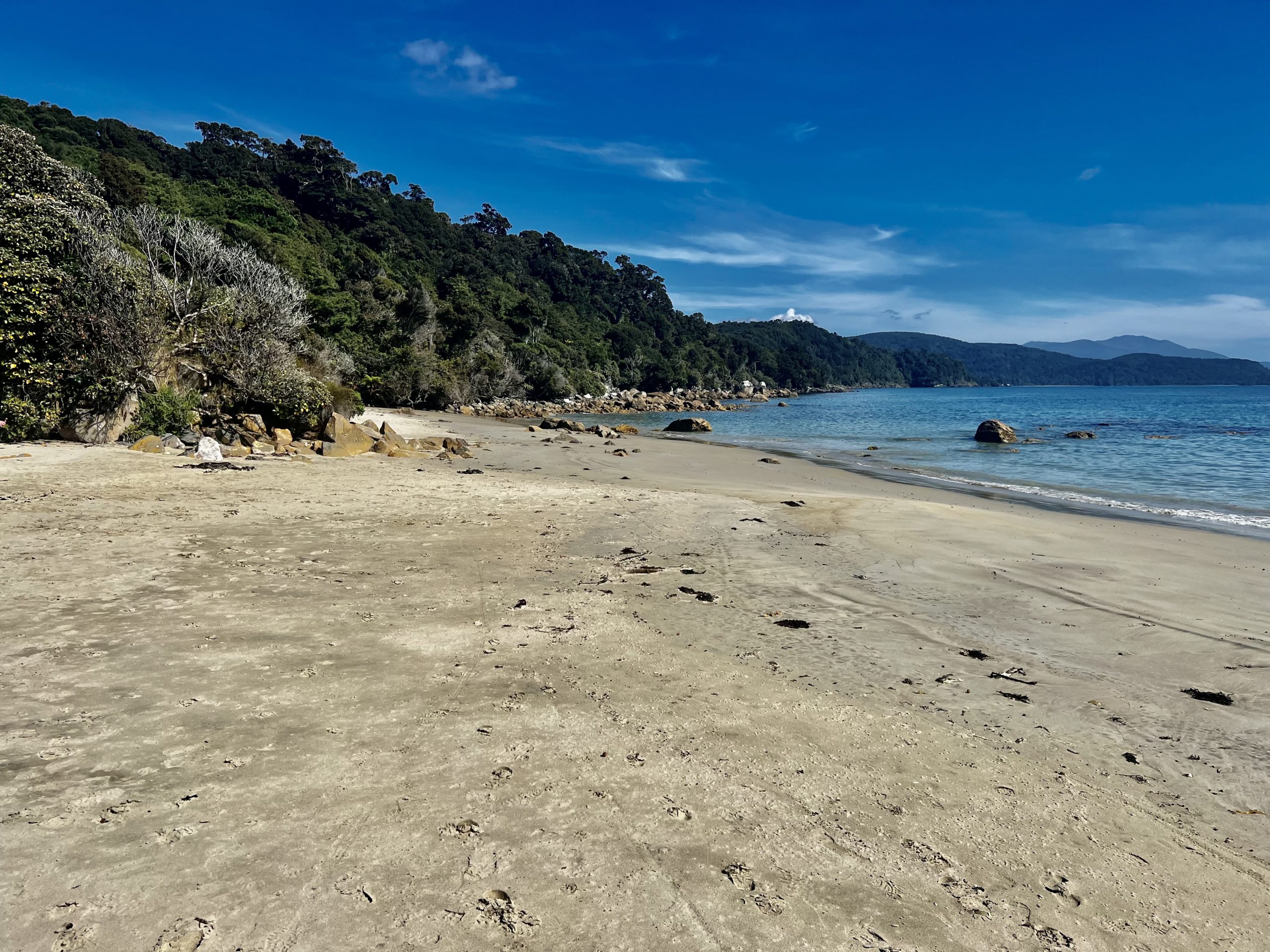


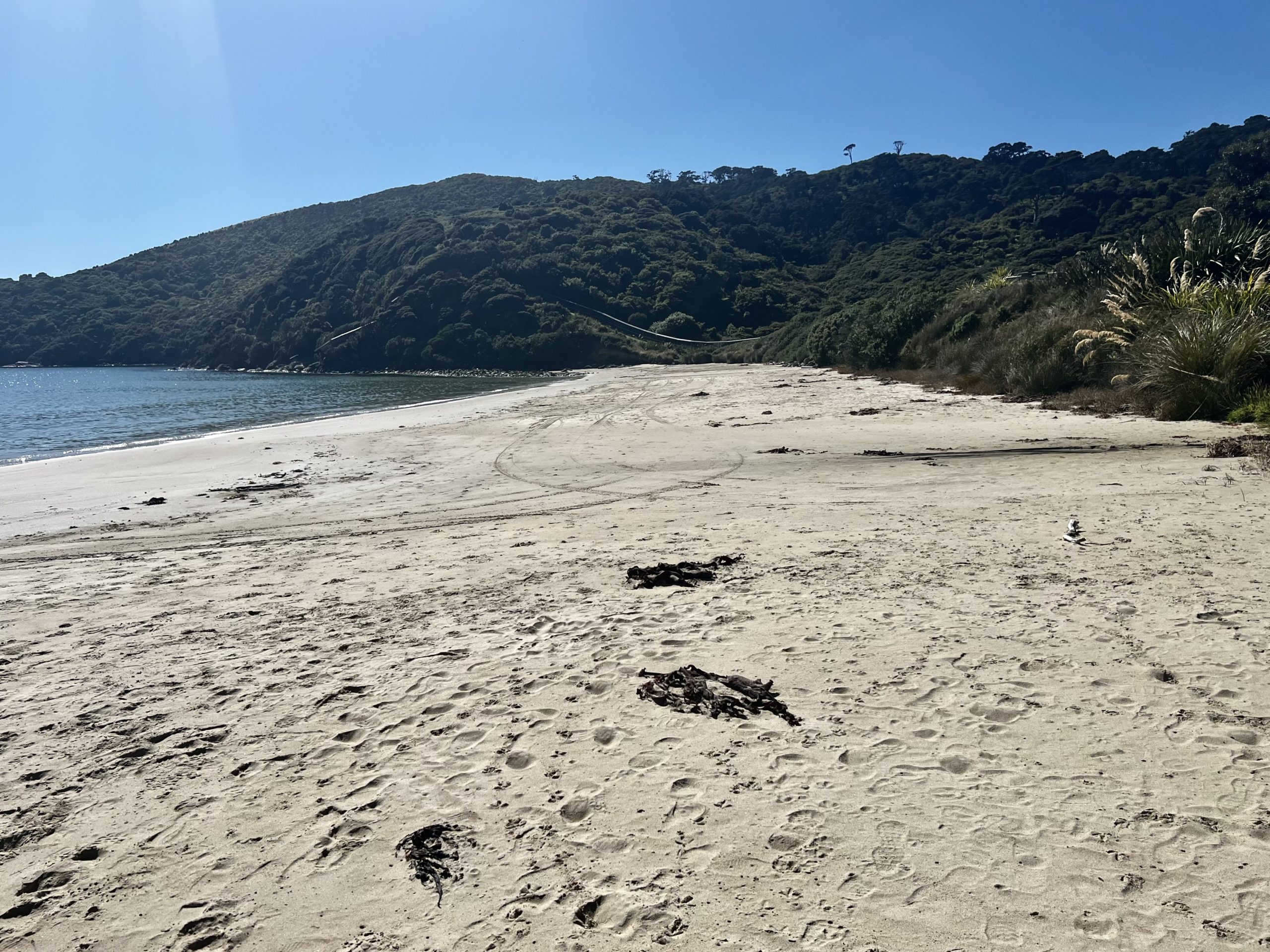
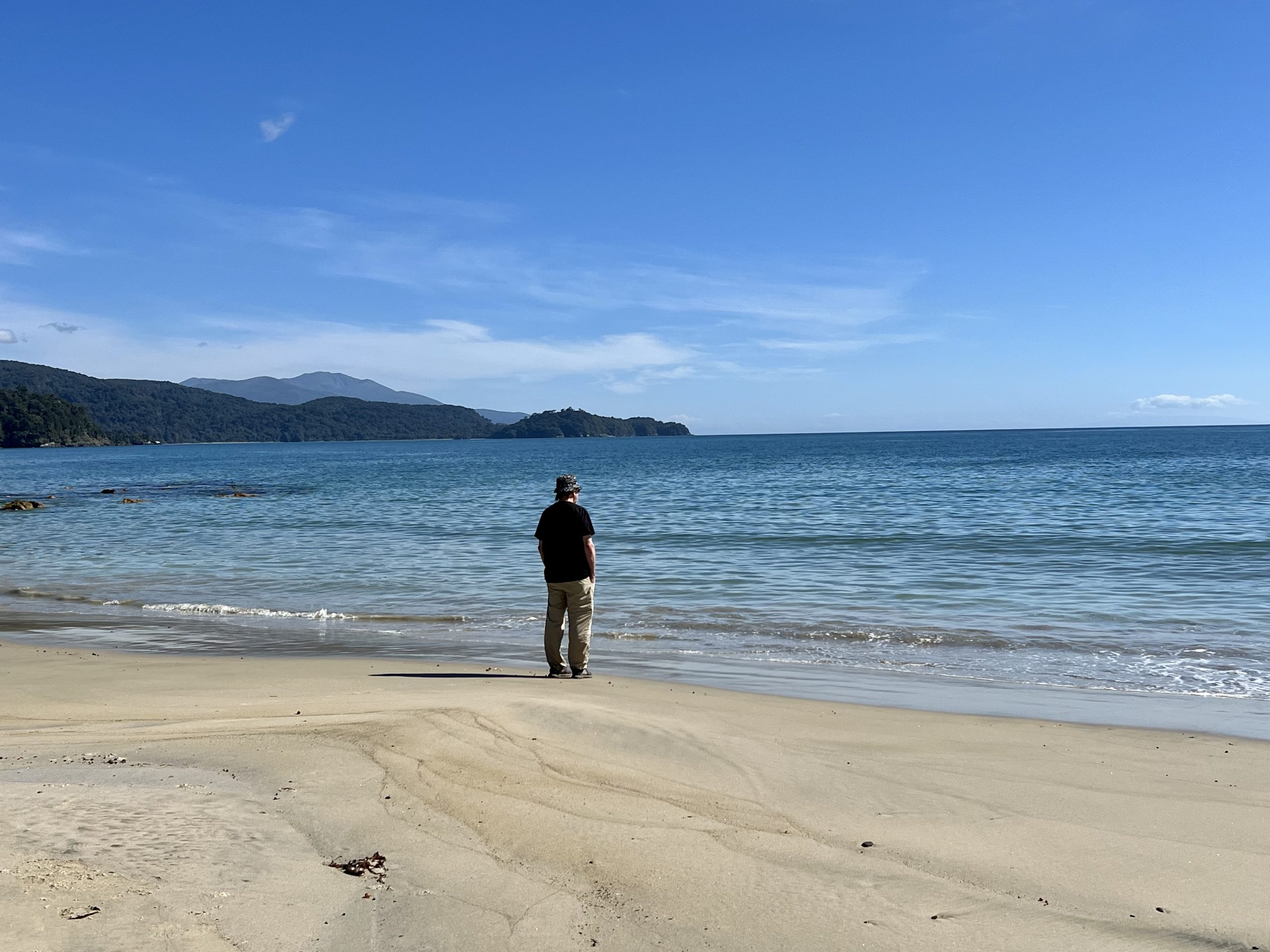
Ulva Island
Still on the same day, we took a one-hour boat ride from Stewart Island to Ulva Island, known for birds. Along the way, the boat would pause so we could look at historic or scenic sites. One building built in the mid 1800s housed one of the first European families to live on the island. The father was more than six feet tall. A giant in those days. Once we arrived on Ulva Island, we split into two groups of a dozen each for a guided hike through the dense, leafy bush.
Our guide focused on plants and the birds, pausing at places to point out a specific bird. These birds have no predators so they are not shy and often get quite close. Many of the birds are endangered because they lack the ability to fly or only fly short distances as they historically did not have any predators until the Europeans introduced rats, mice, feral cats, and possums. There is a strong ongoing eradication program in process that probably will never stop.
Our island hike ended on a beach frequented by sea lions. We saw one in the distance. On the way to the beach, the tour guide warned us to be aware of female sea lions lying in the bush, sheltering with their young. They do this to avoid the male sea lions on the beach who go after and kill the young sea lions. Ahhh, nature.
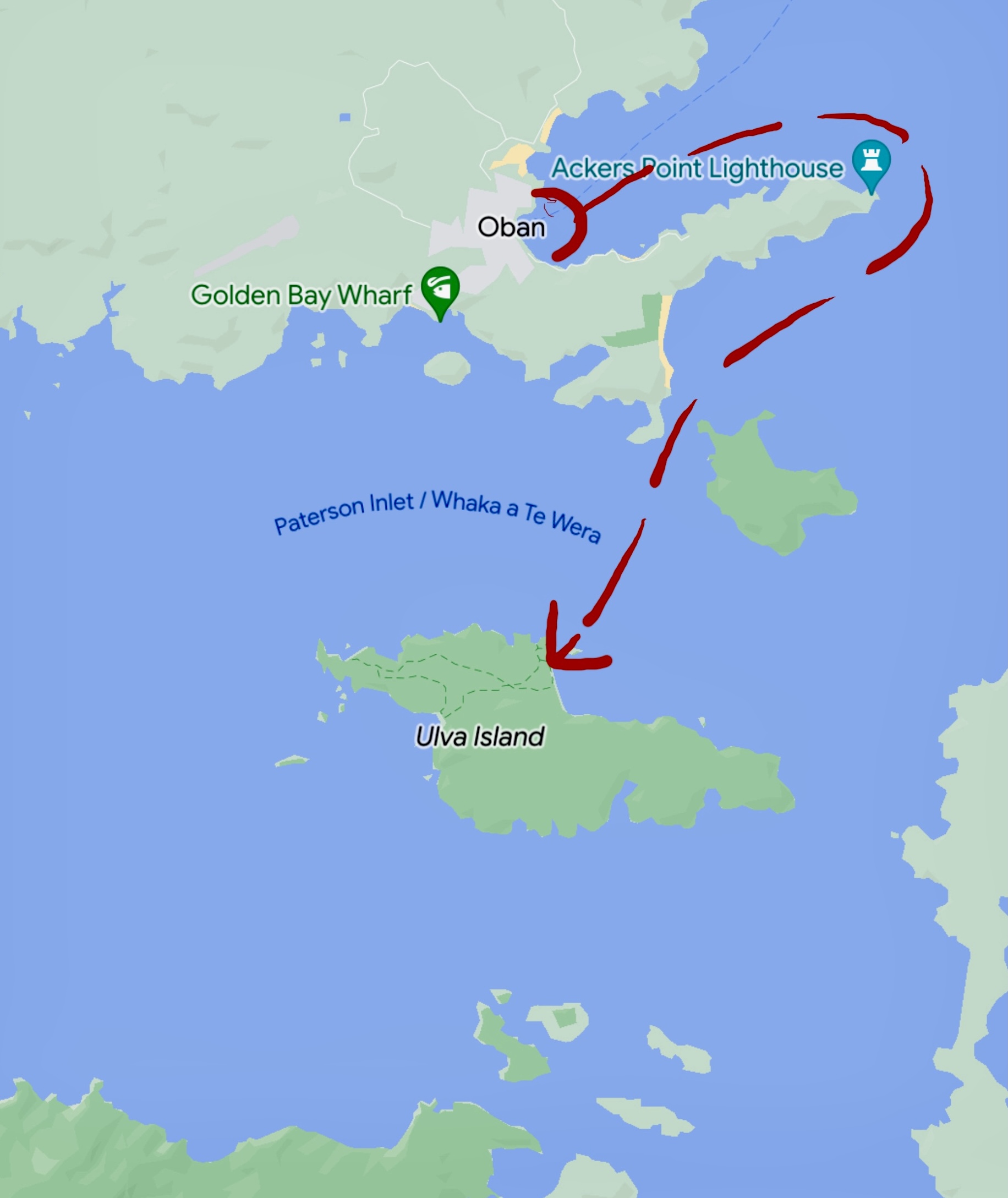





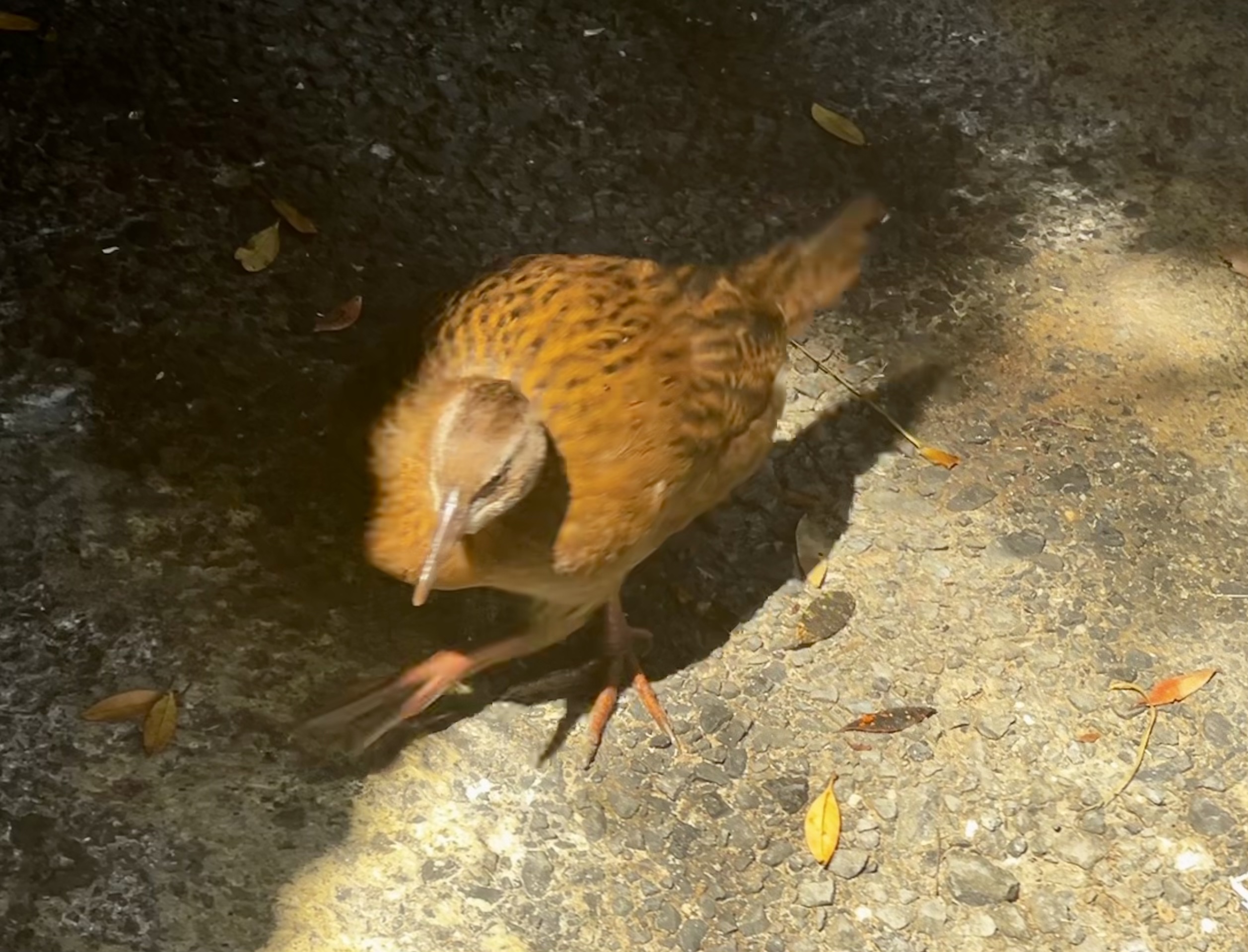
















Day Trip East
On a free day (no scheduled fishing), we headed east for more of New Zealand’s spectacular landscape in an area called the Catlins. We stopped along the way to see a lighthouse constructed in the mid 1800s after a ship struck a reef and lost more than 100 people, the bodies washing on shore for weeks afterwards. A cemetery nearby holds numerous remains.
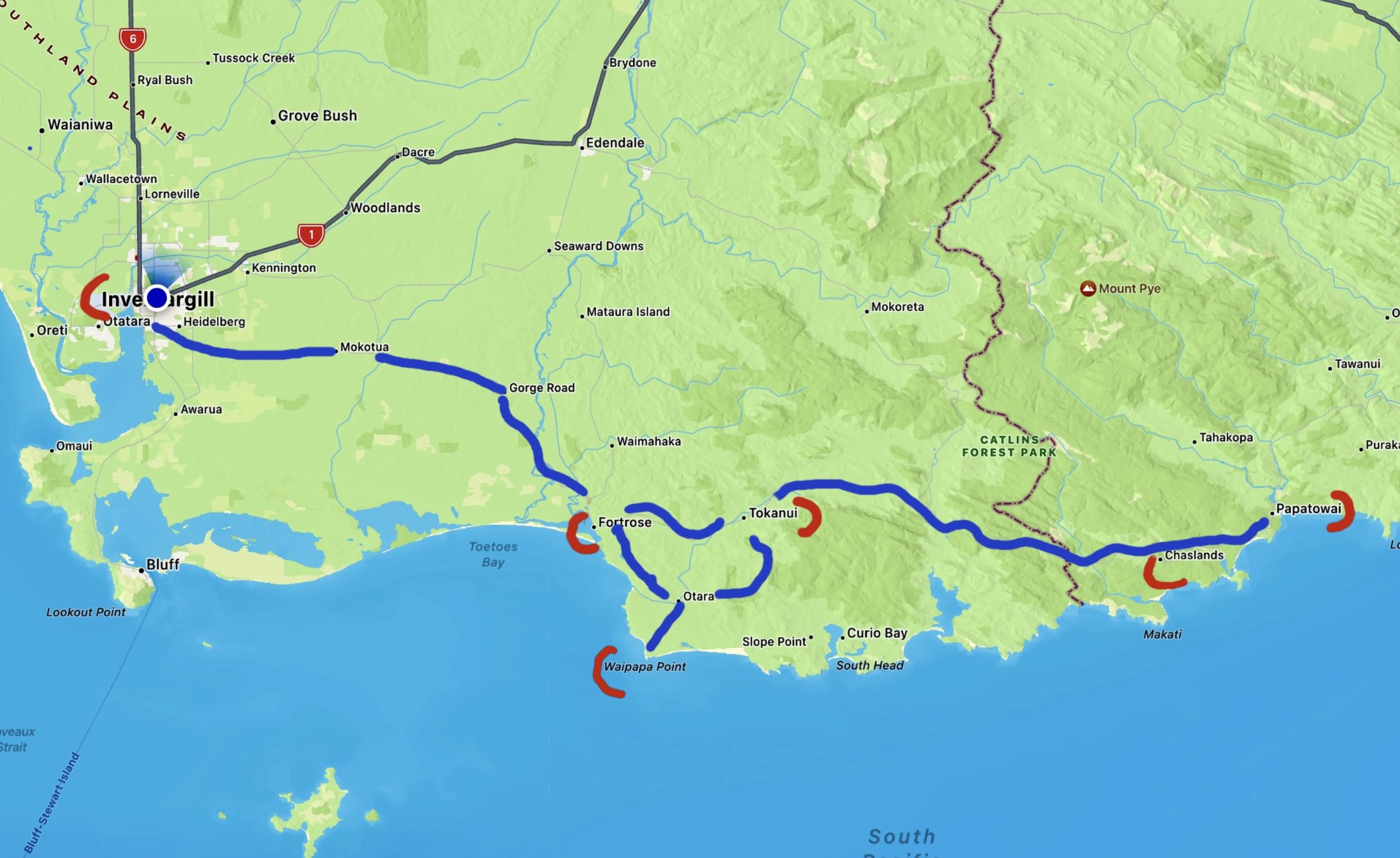
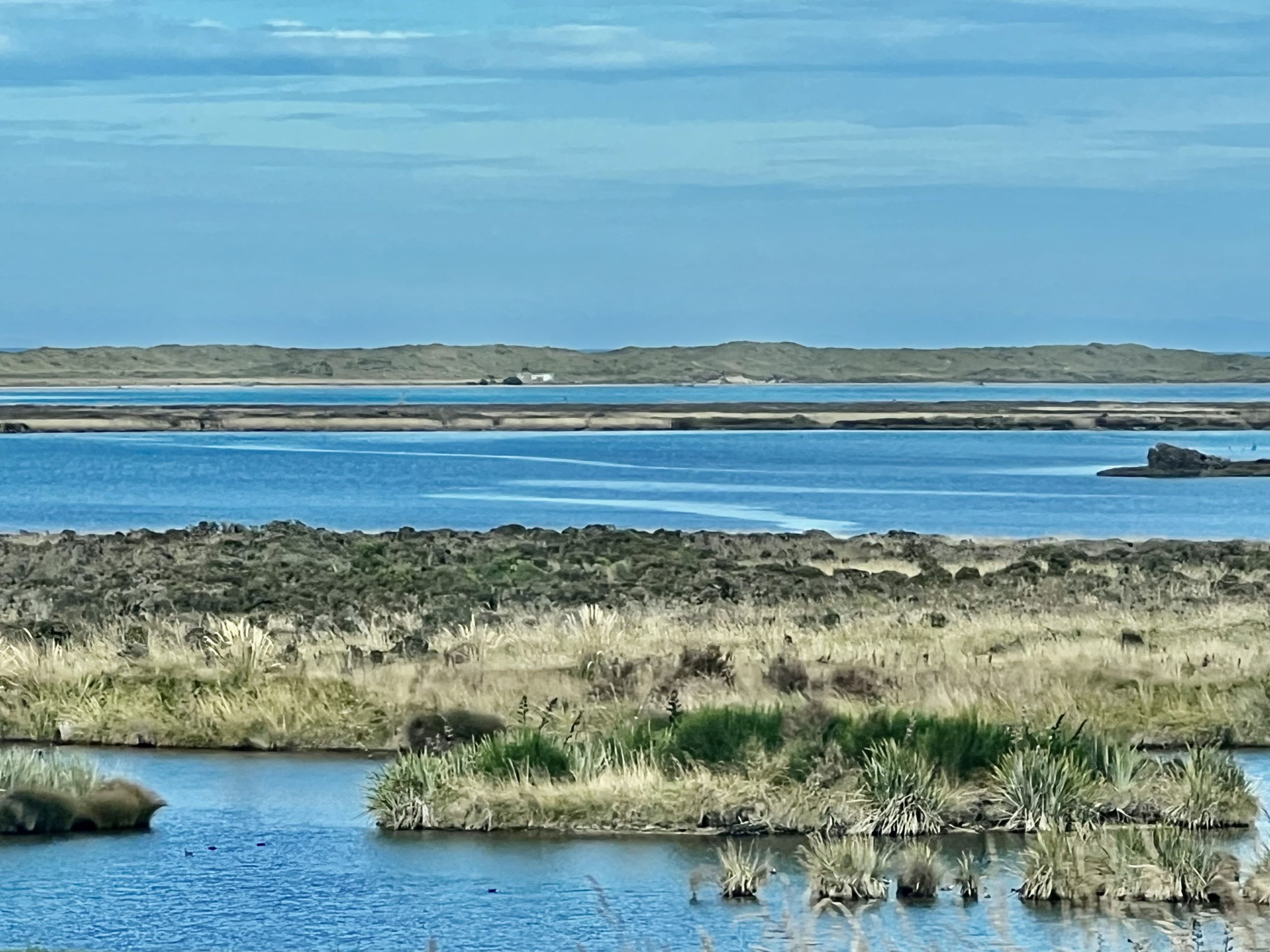
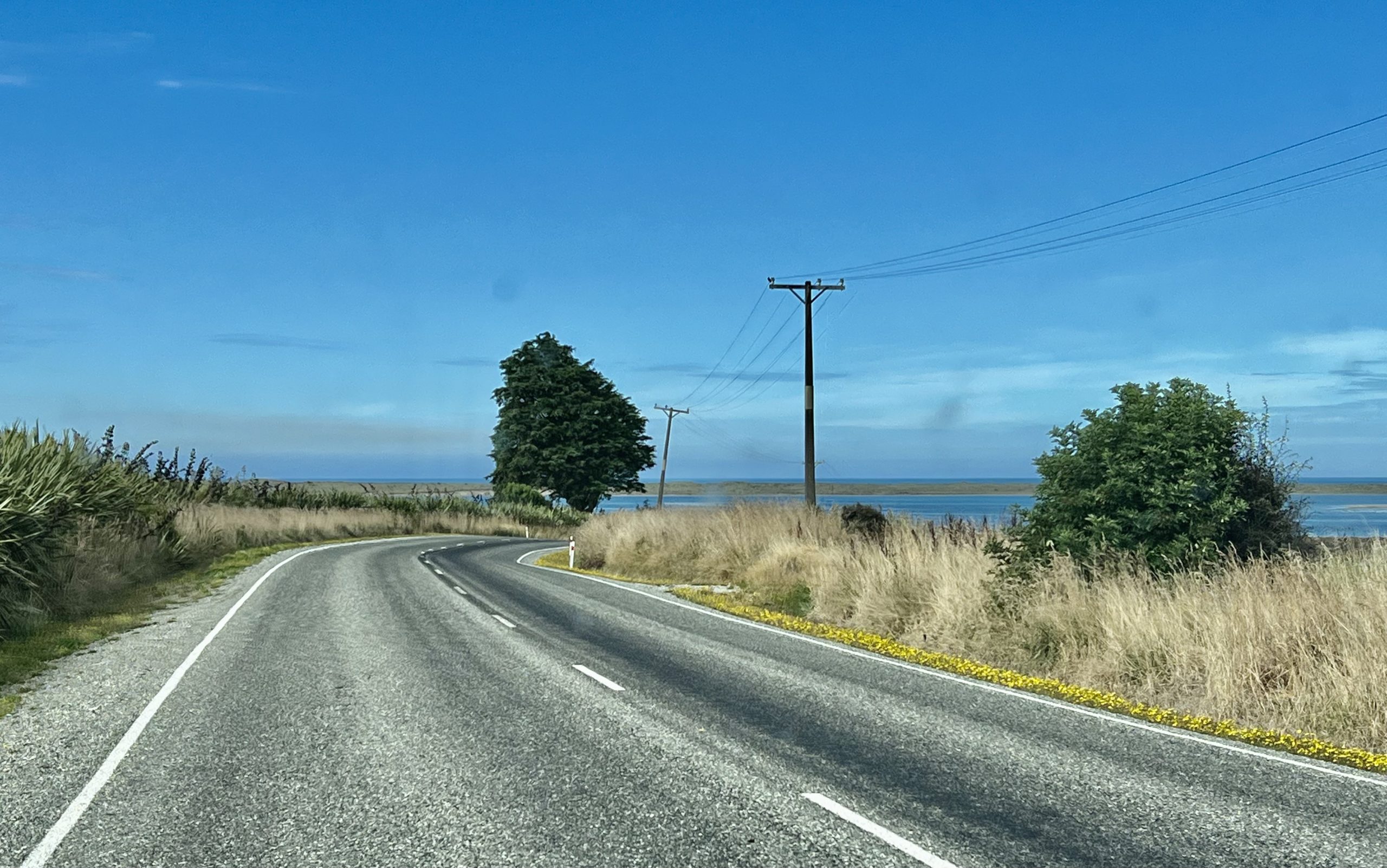




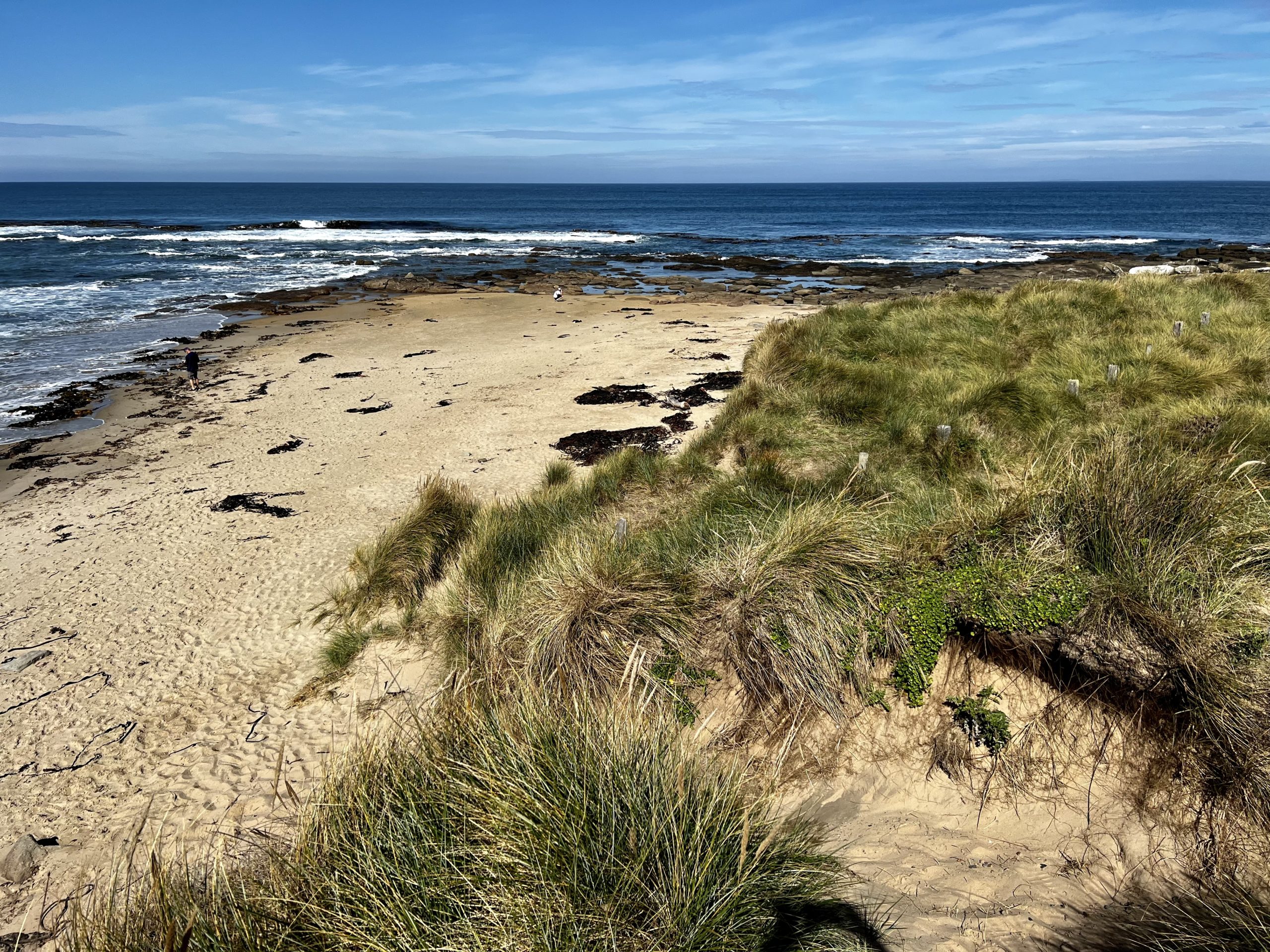
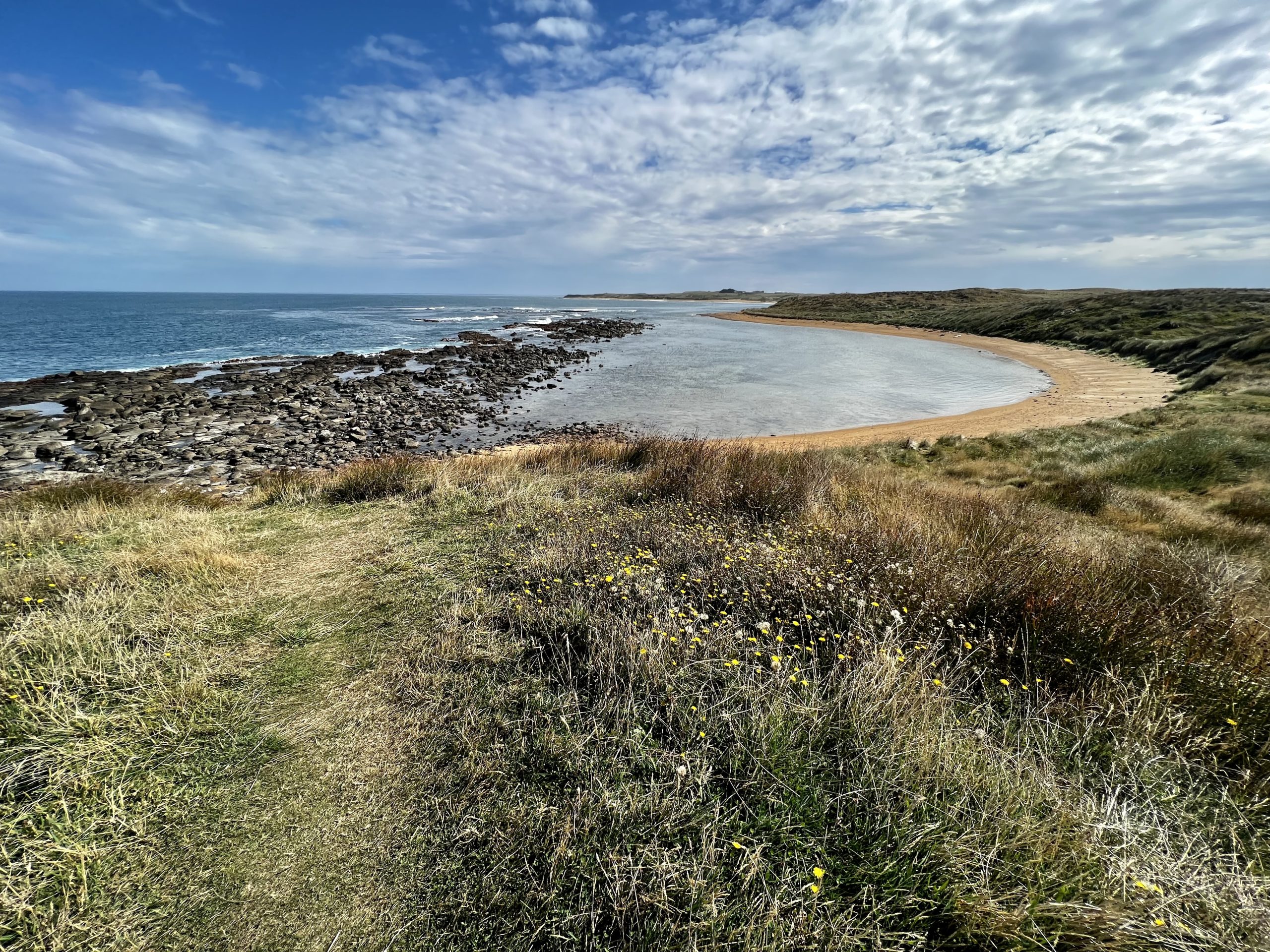
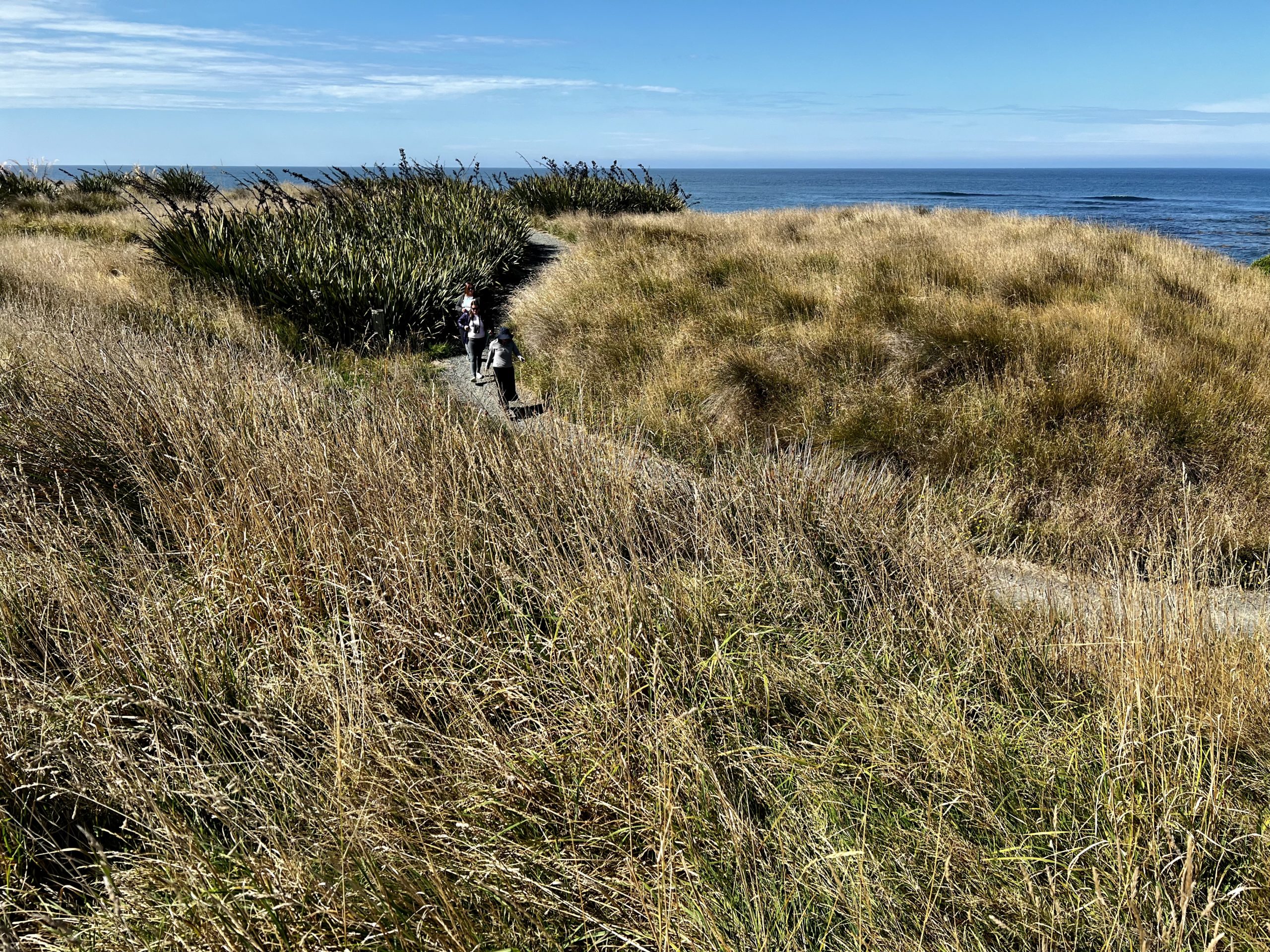
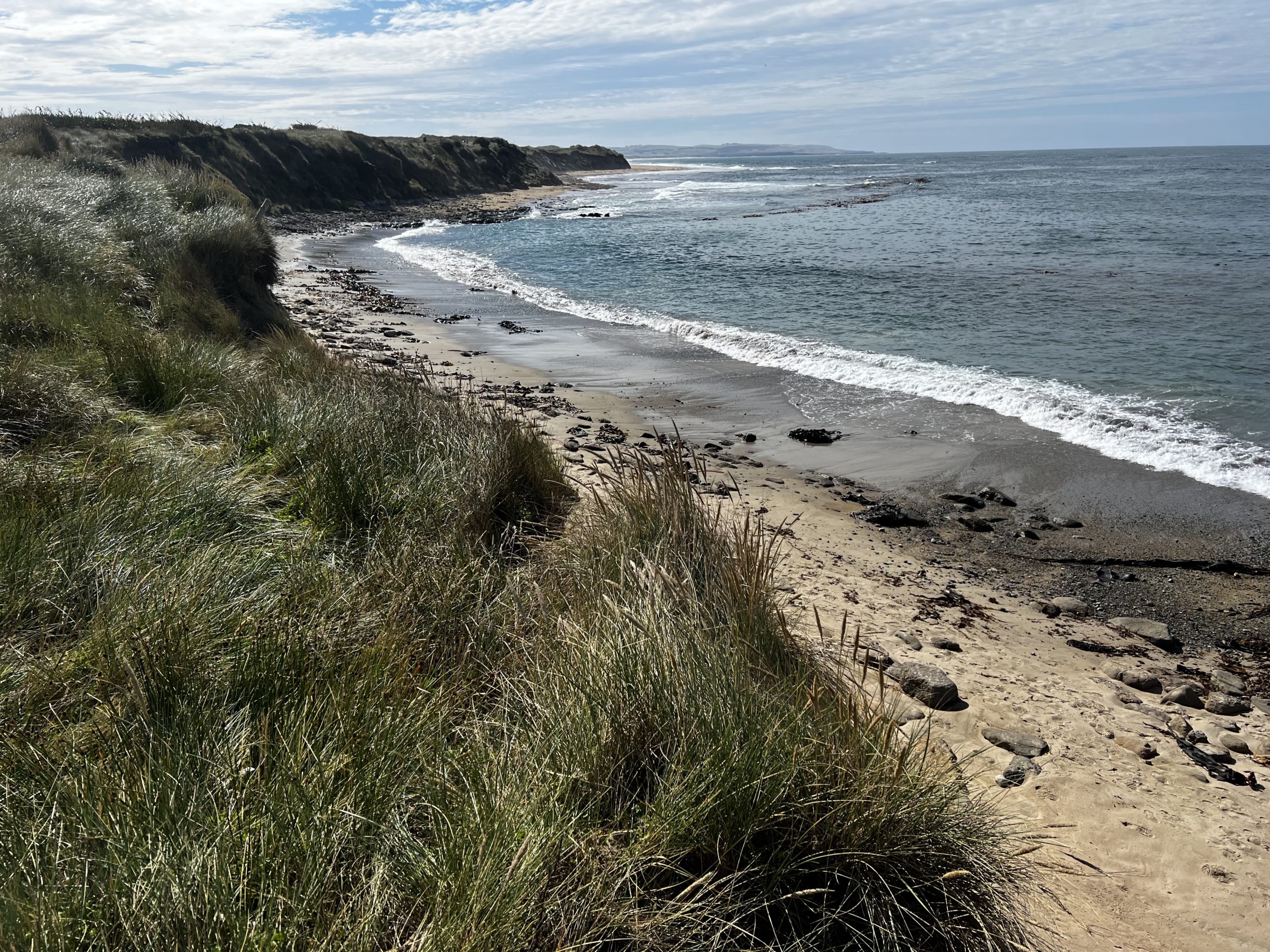
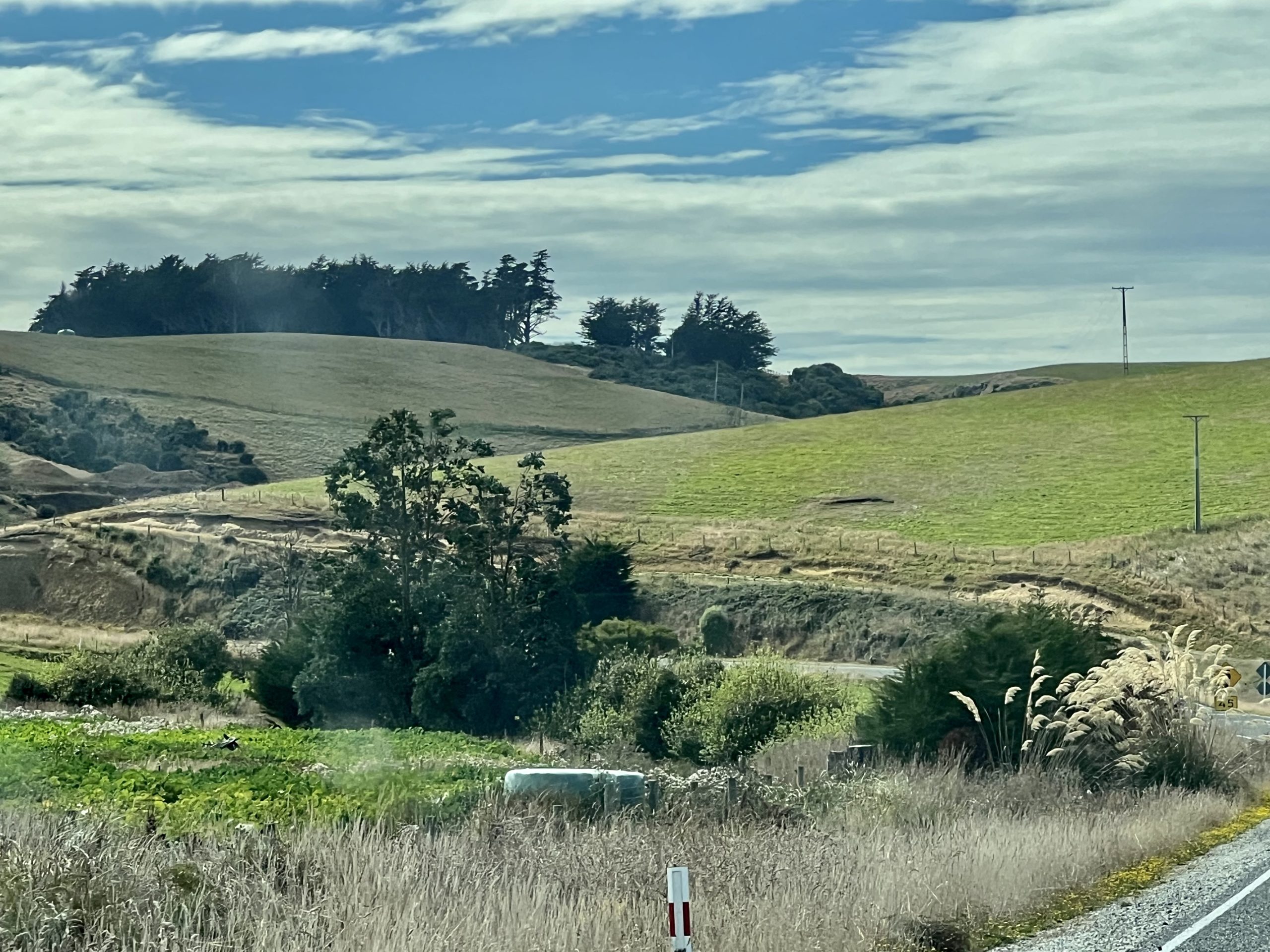
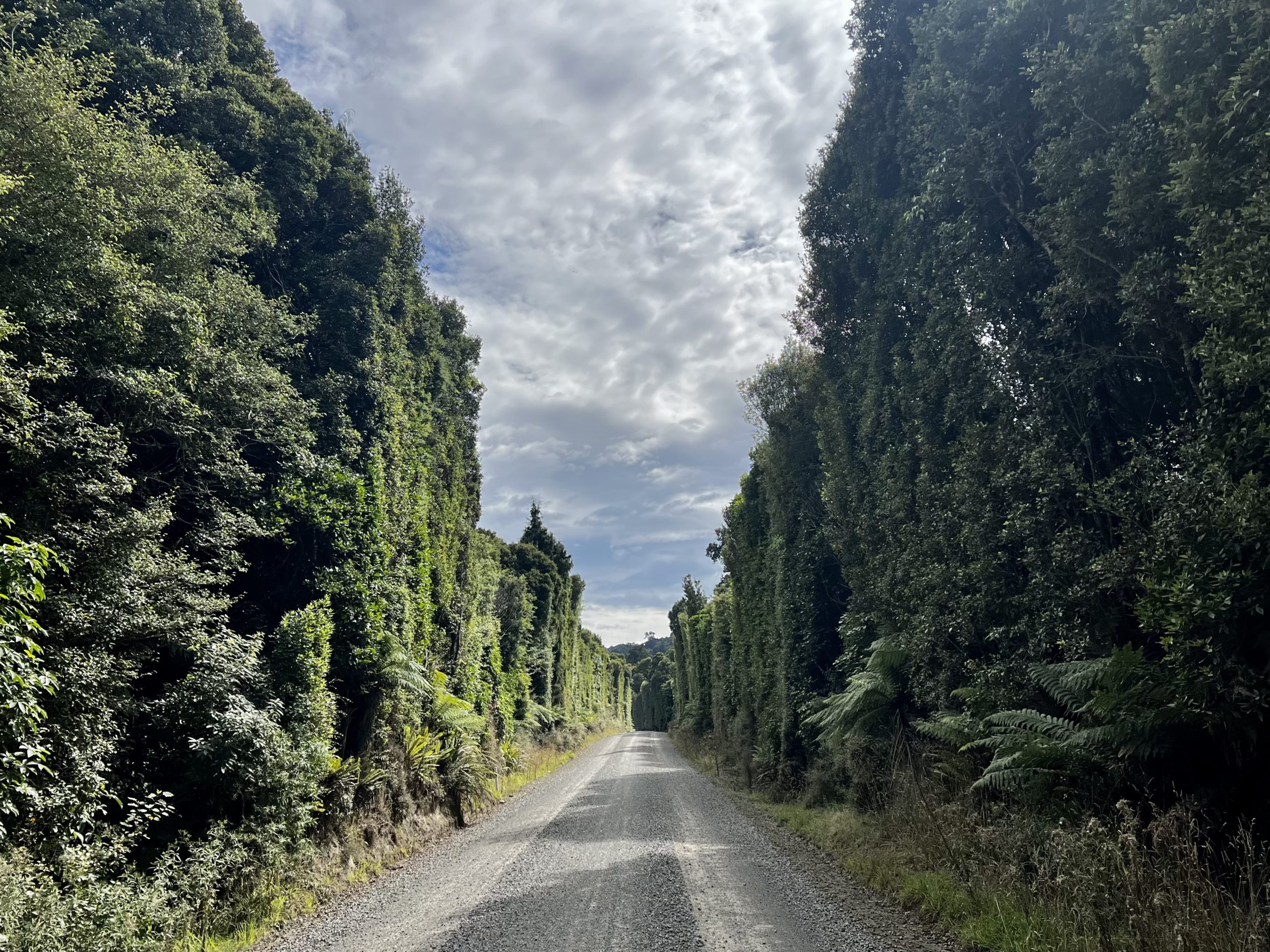
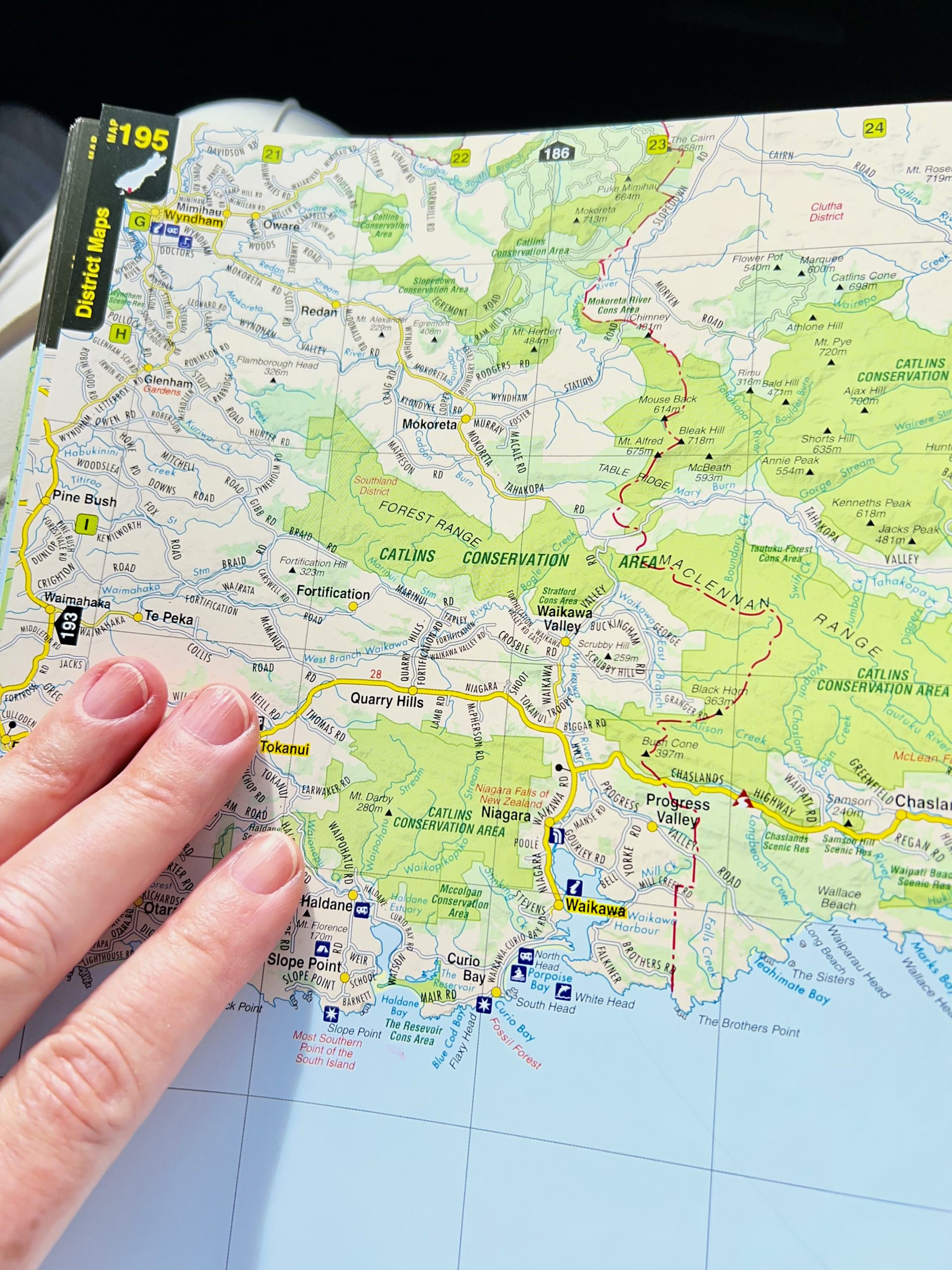
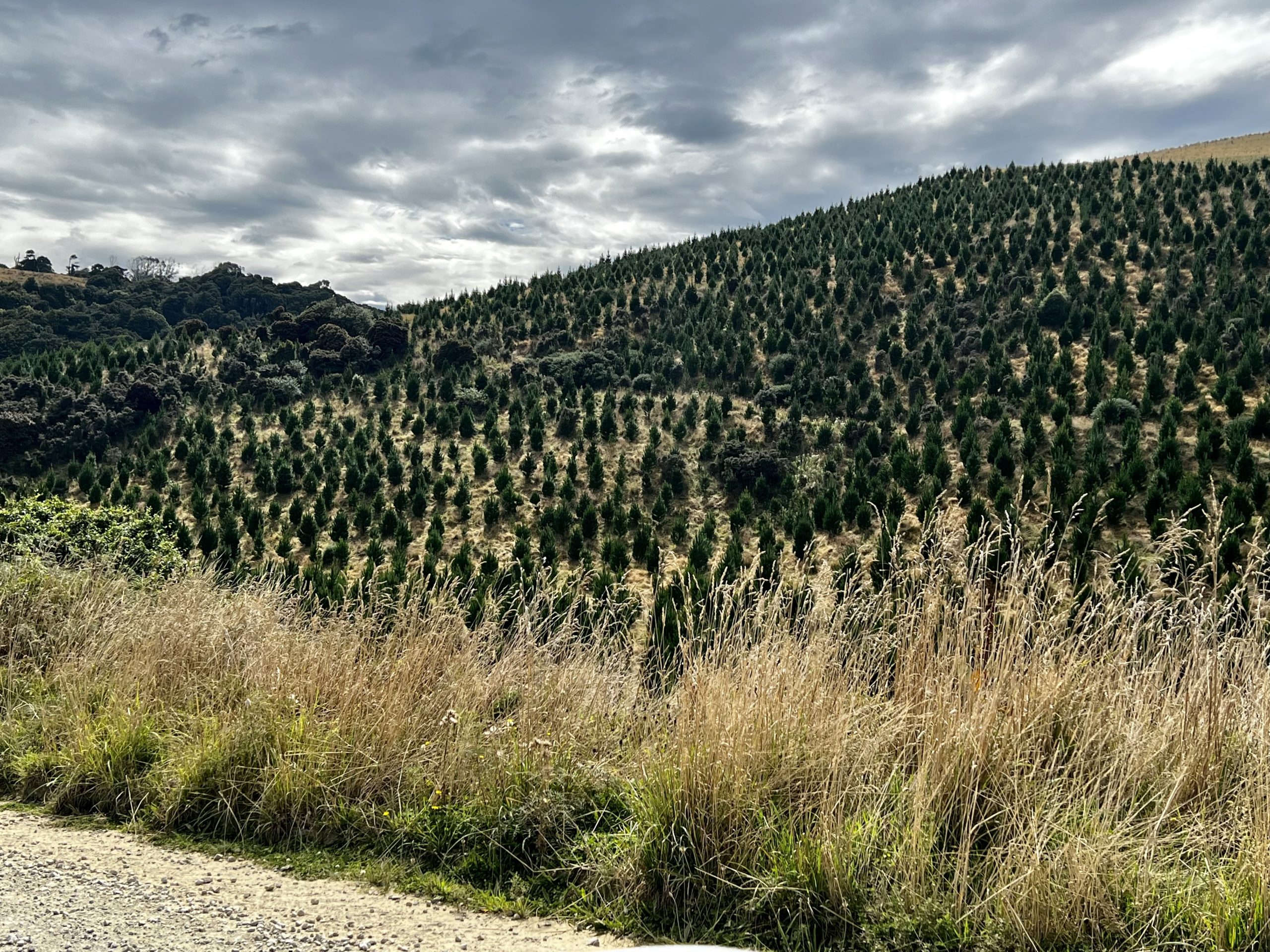

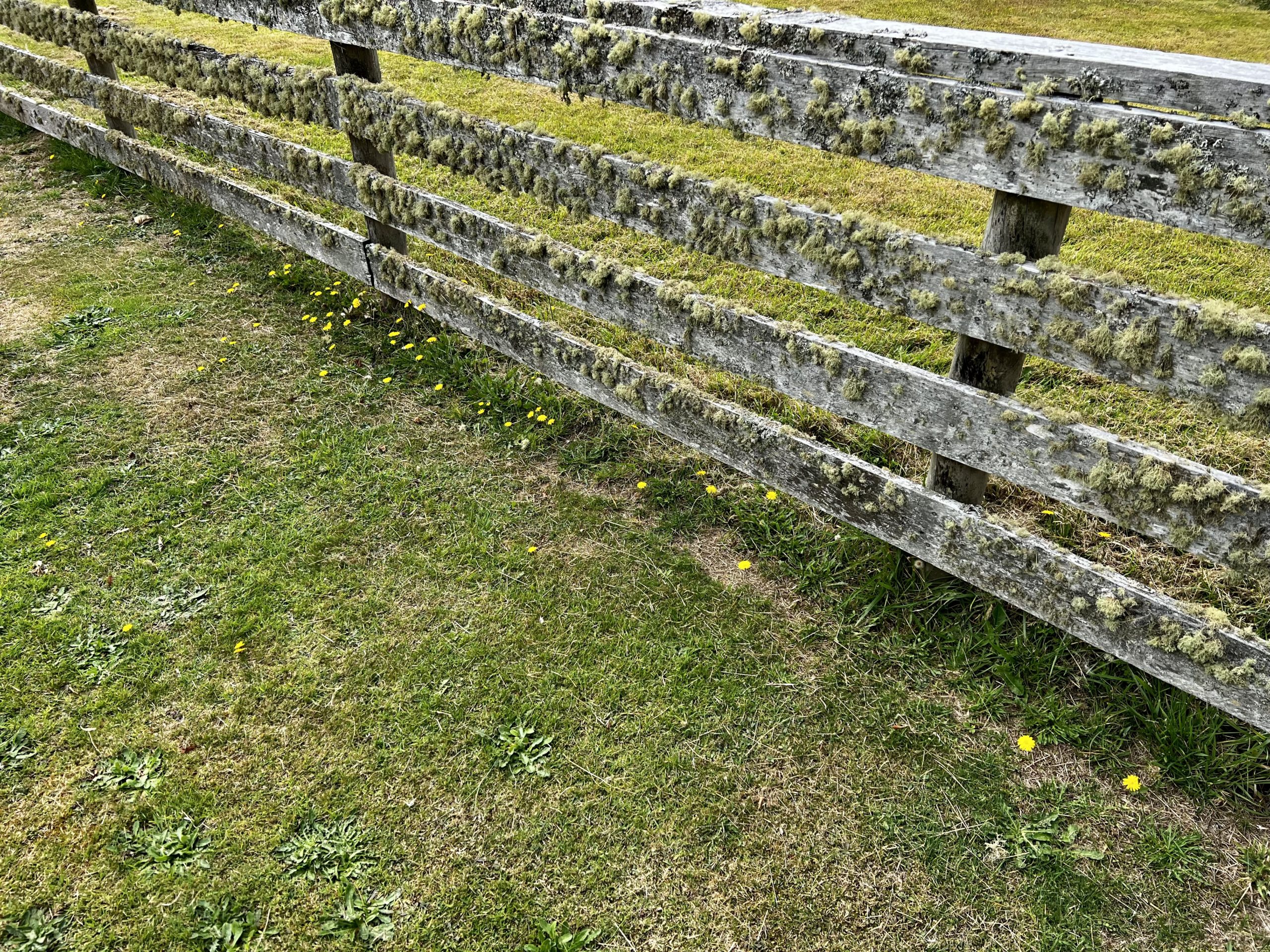
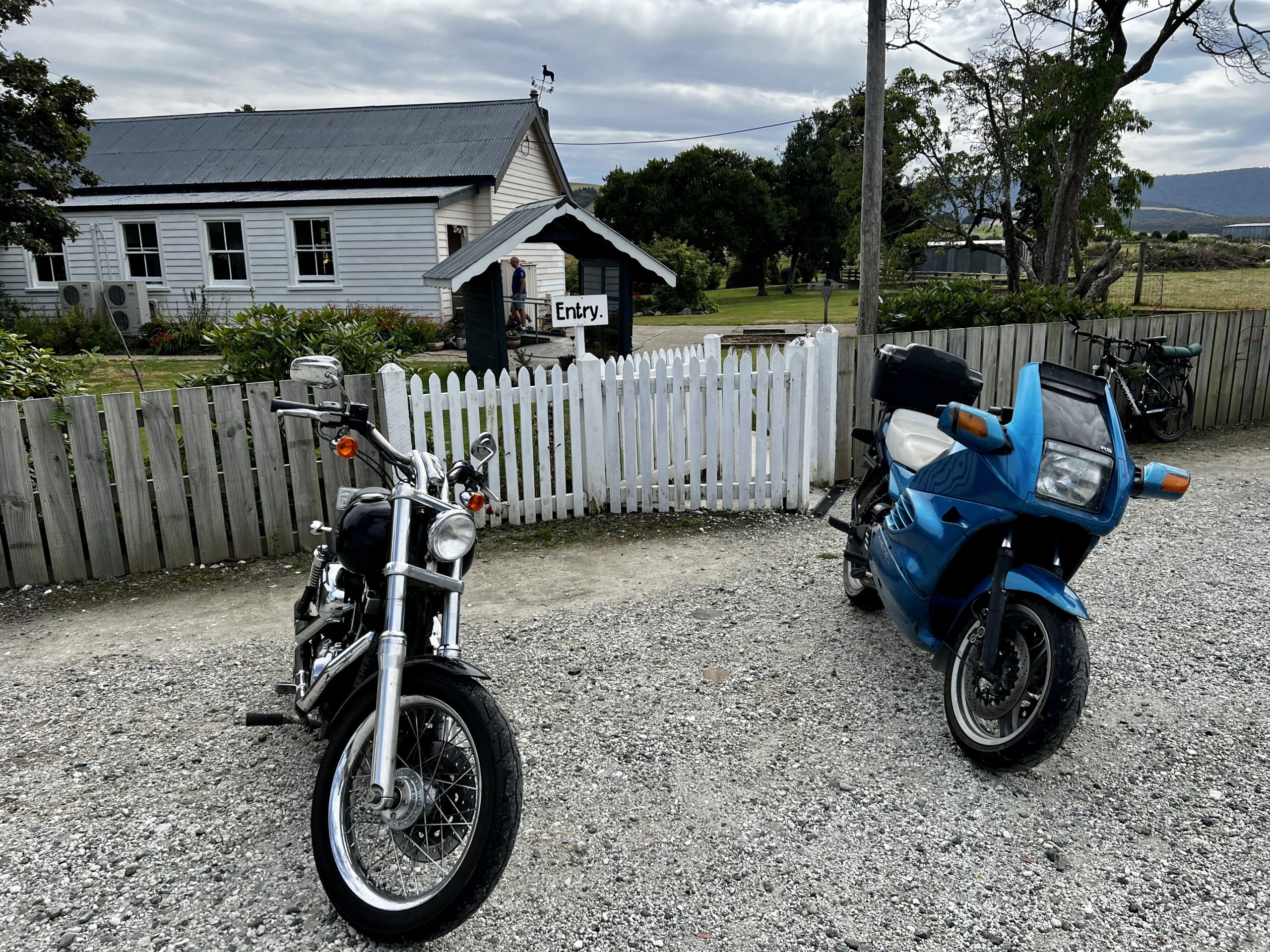
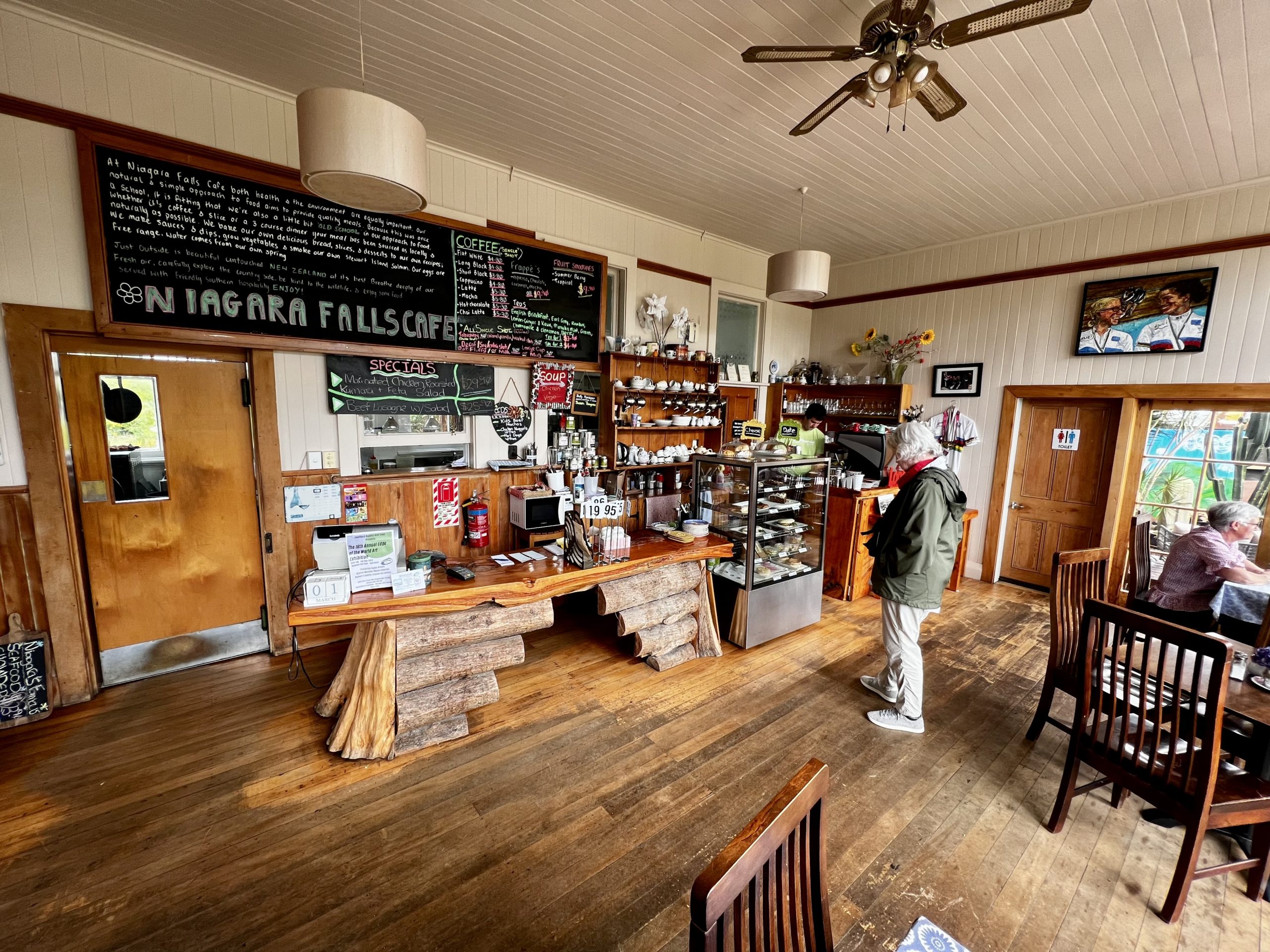
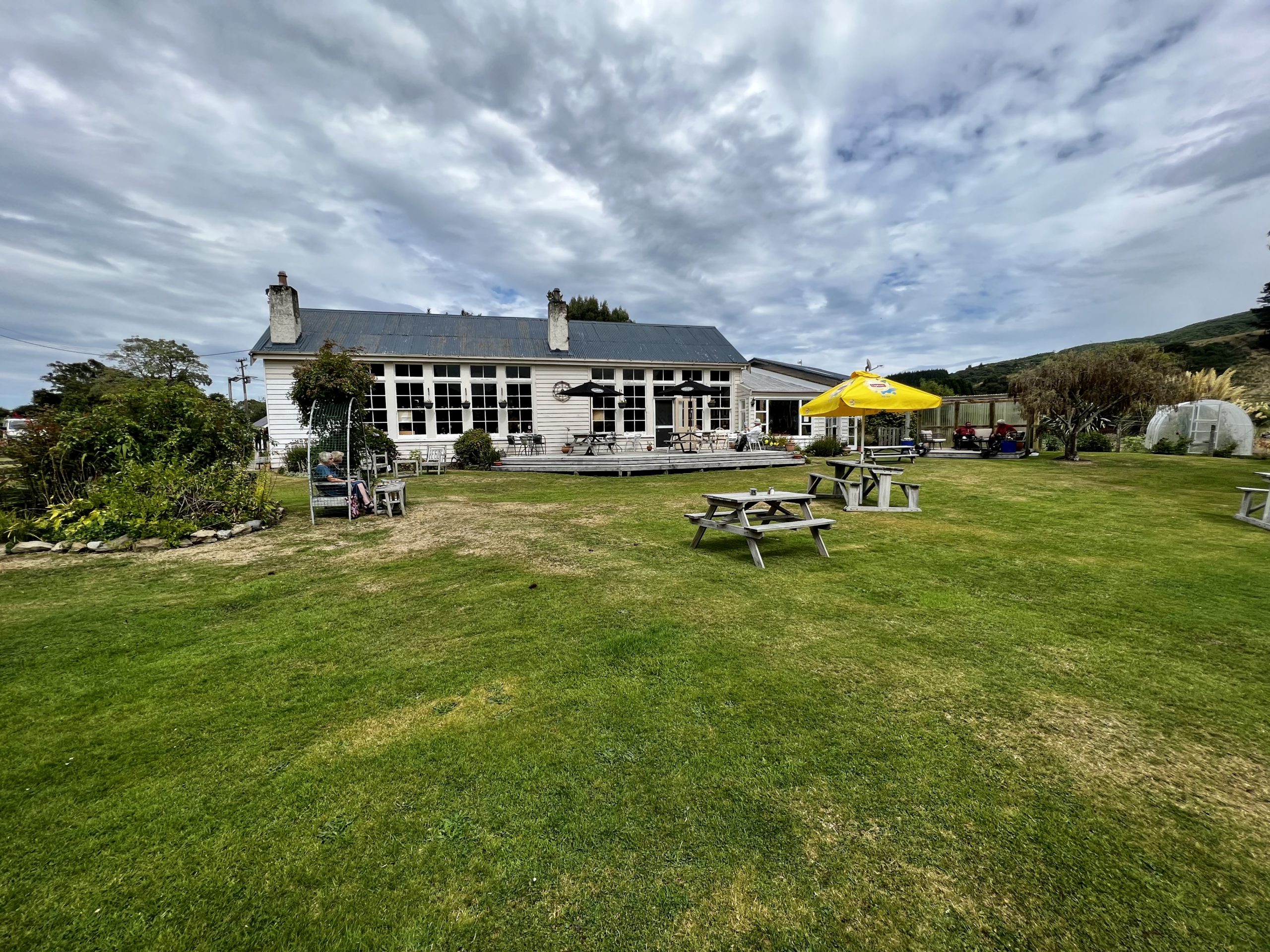
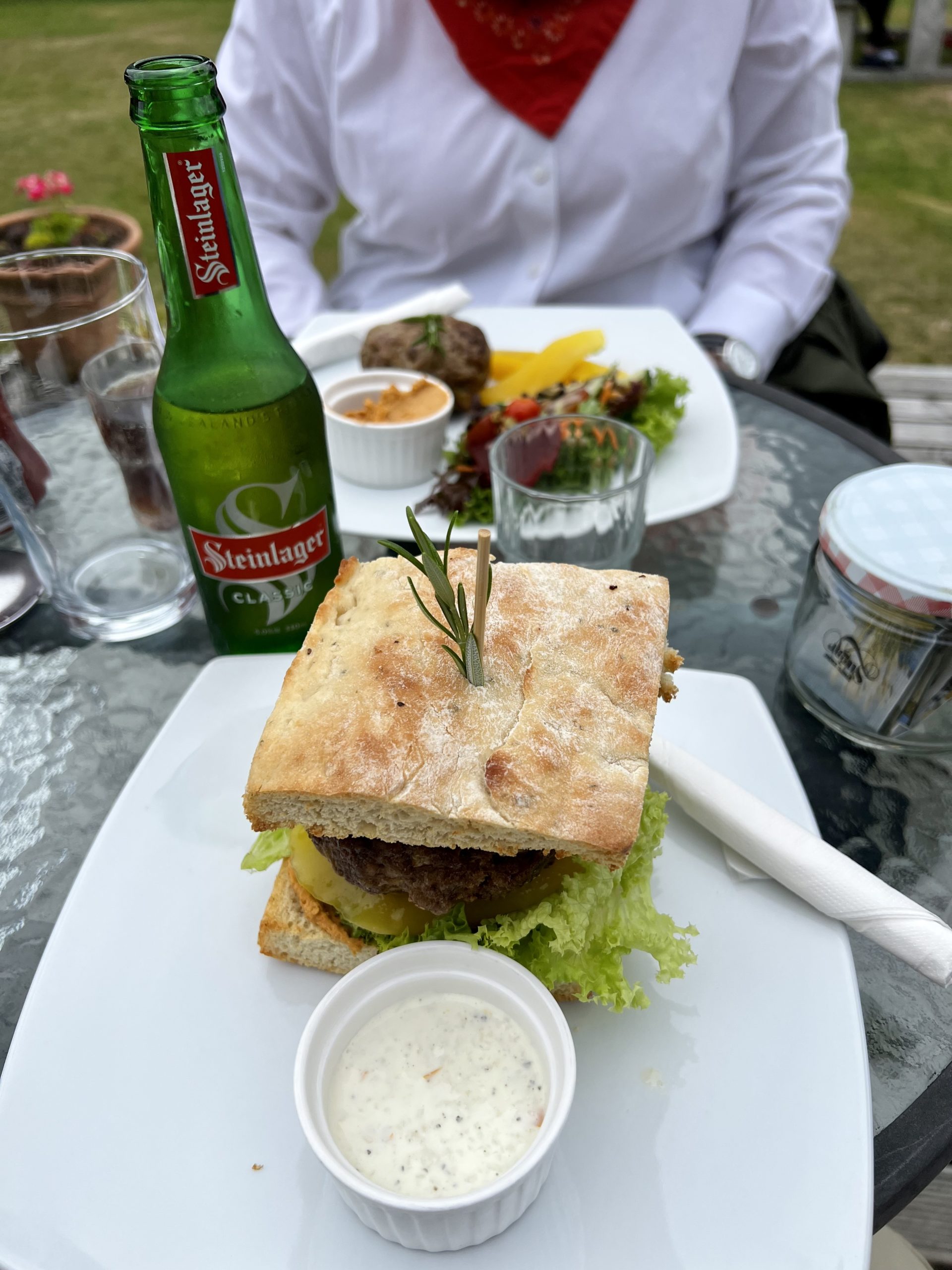
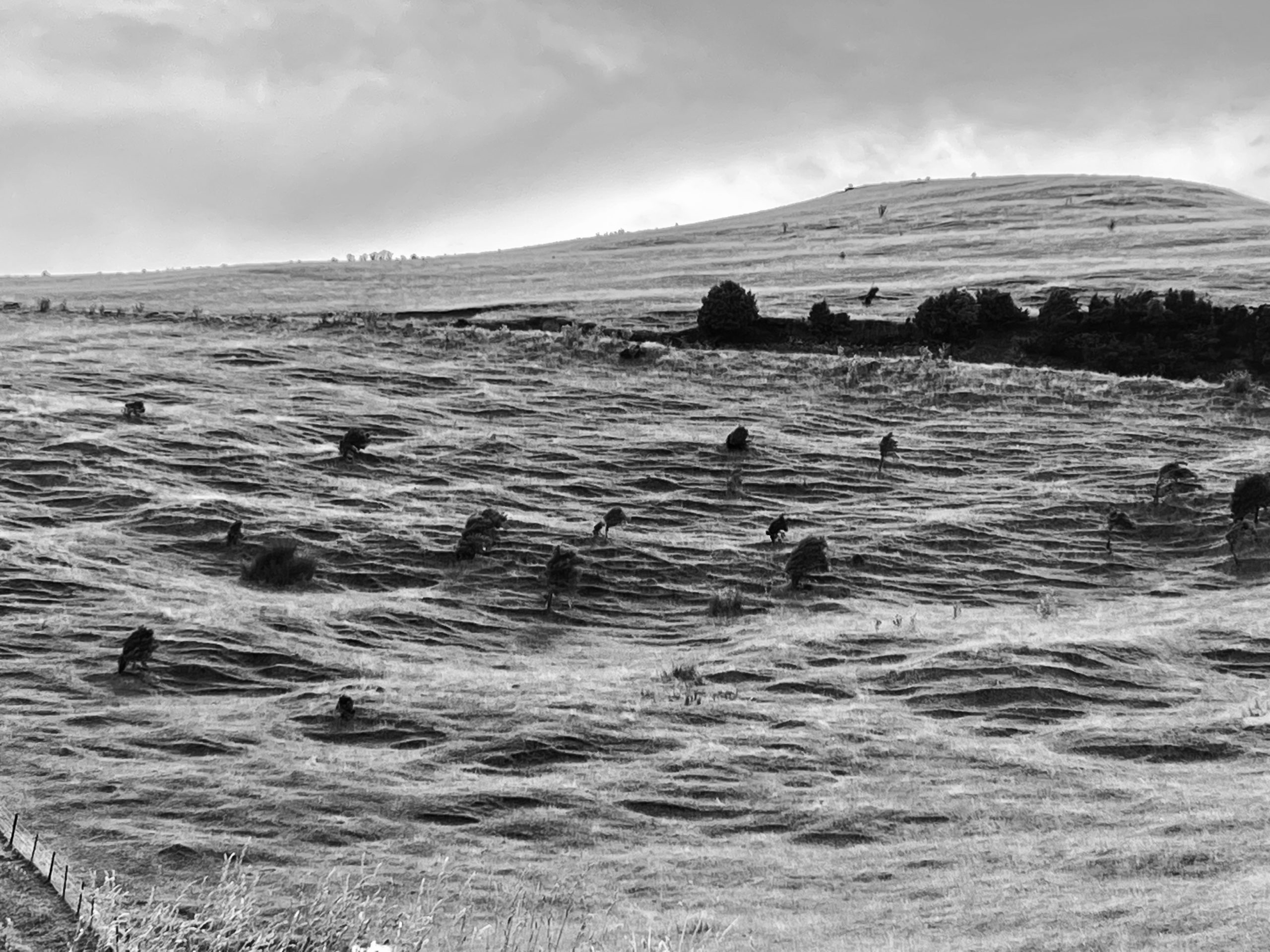
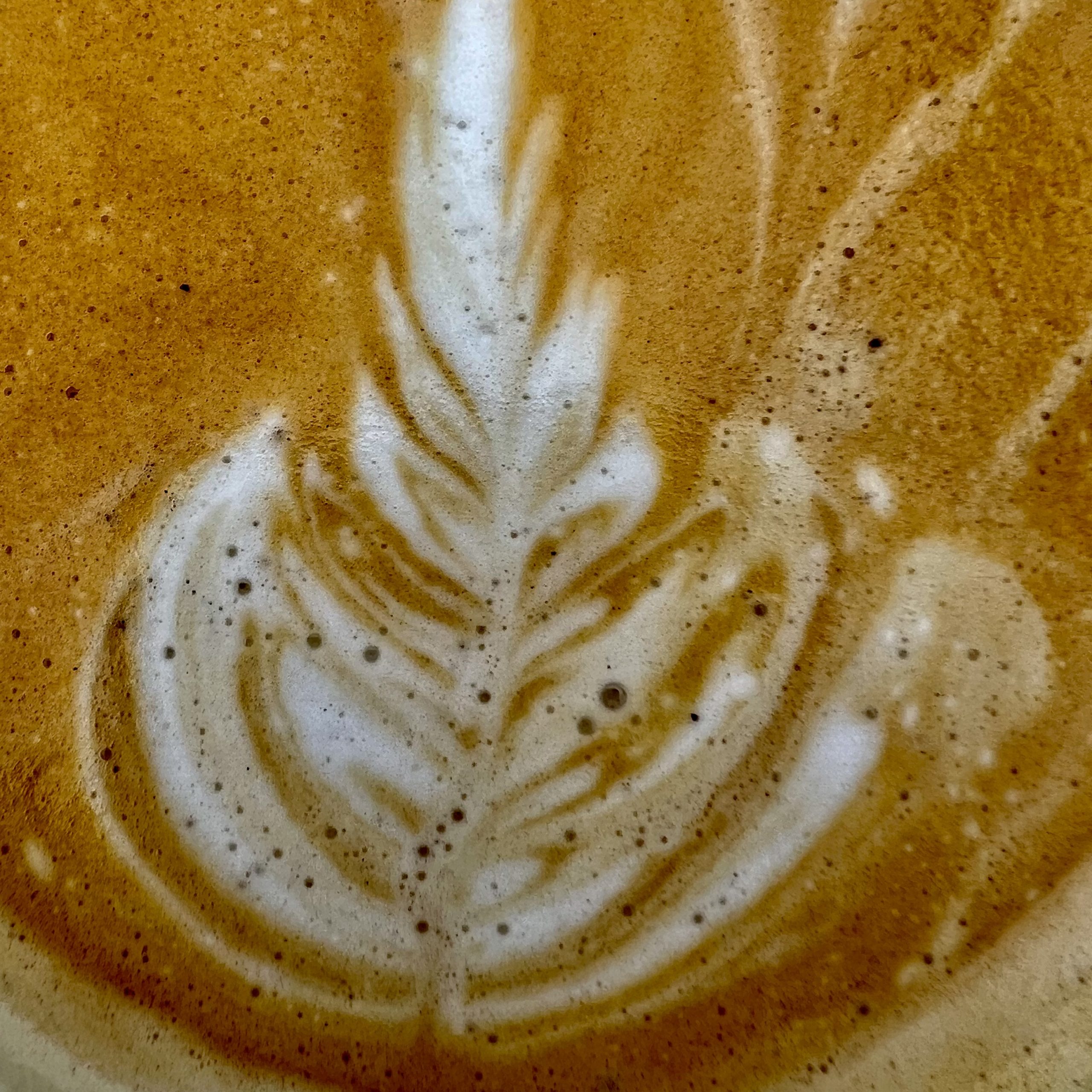
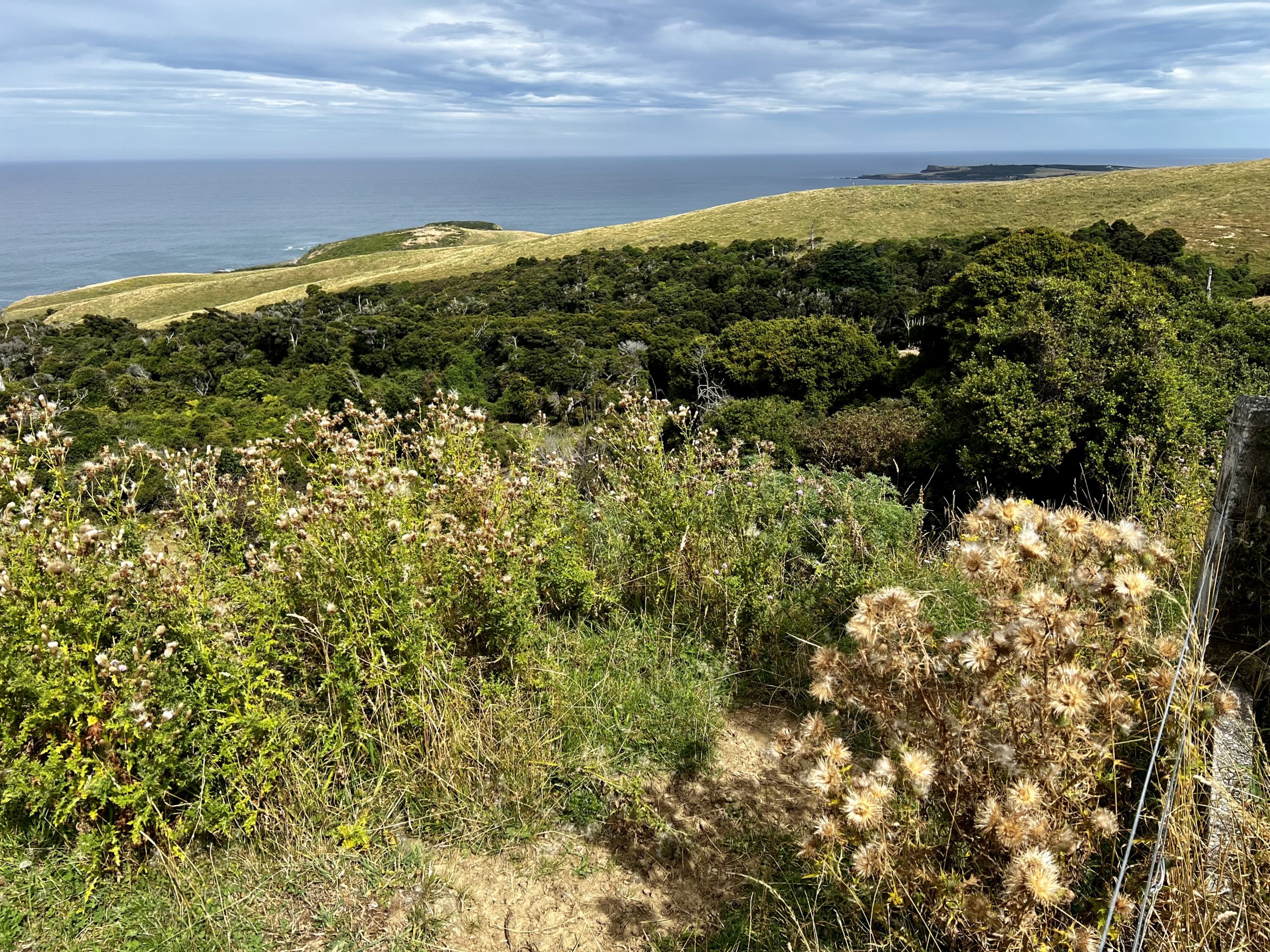
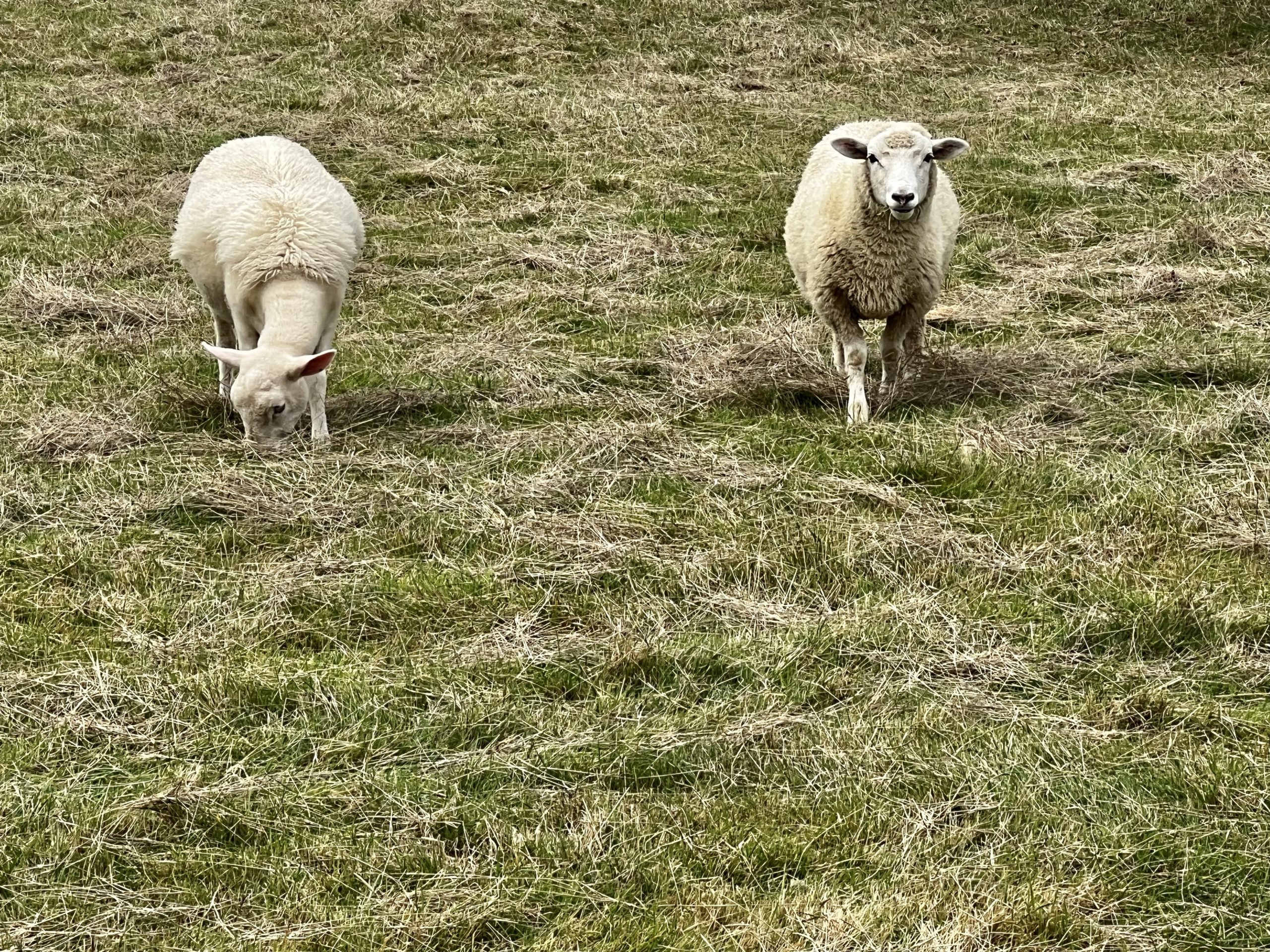
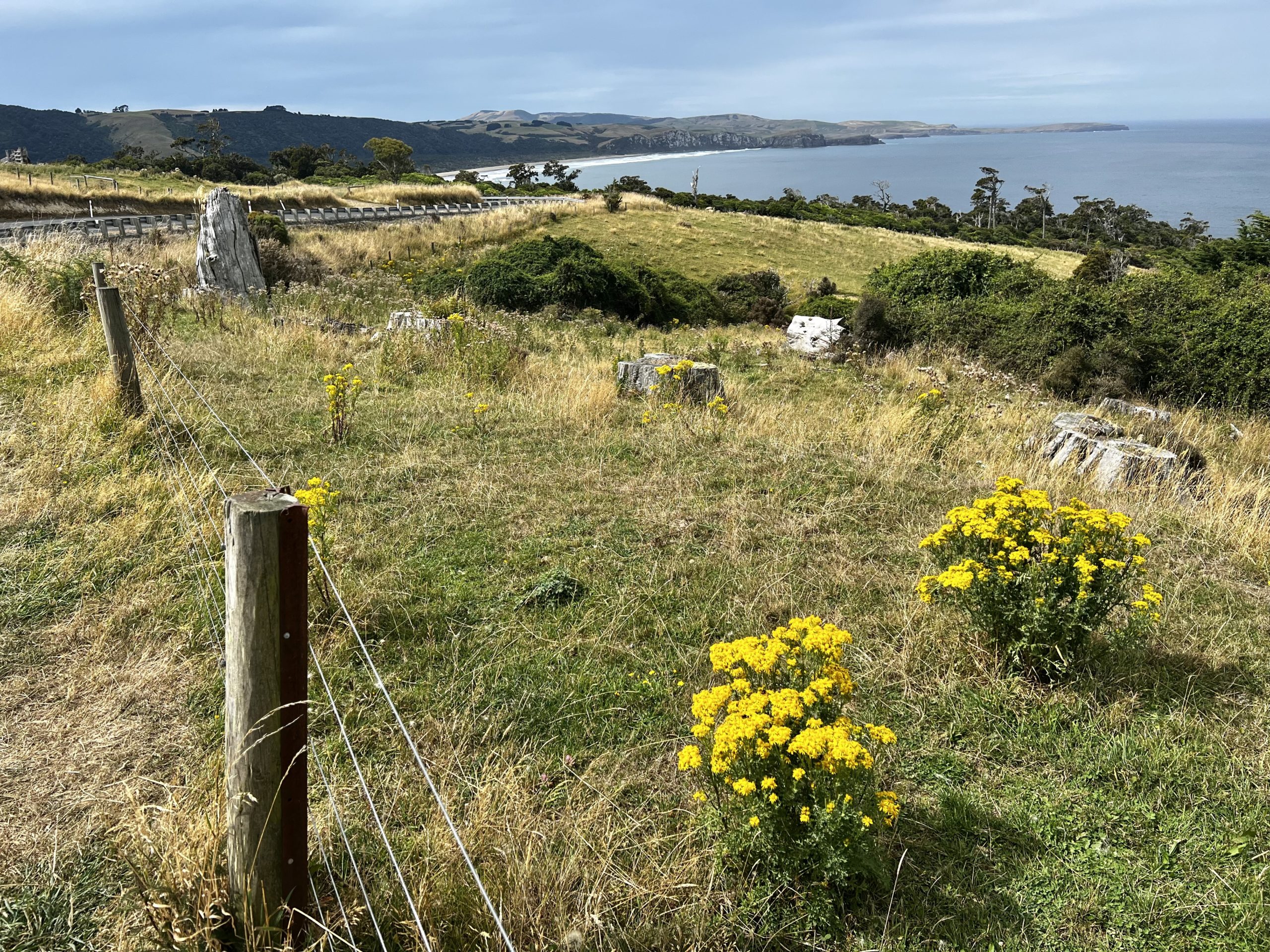
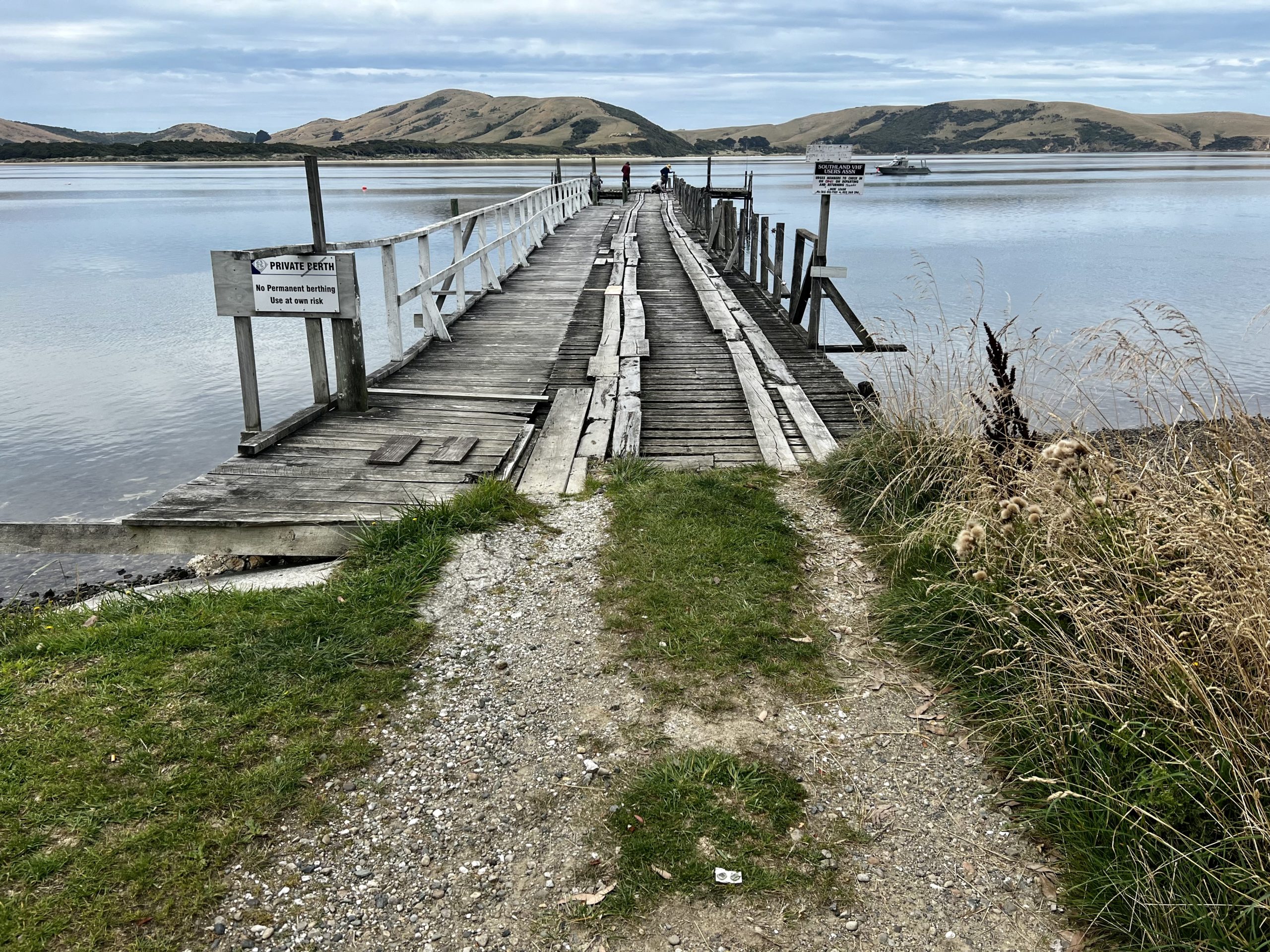
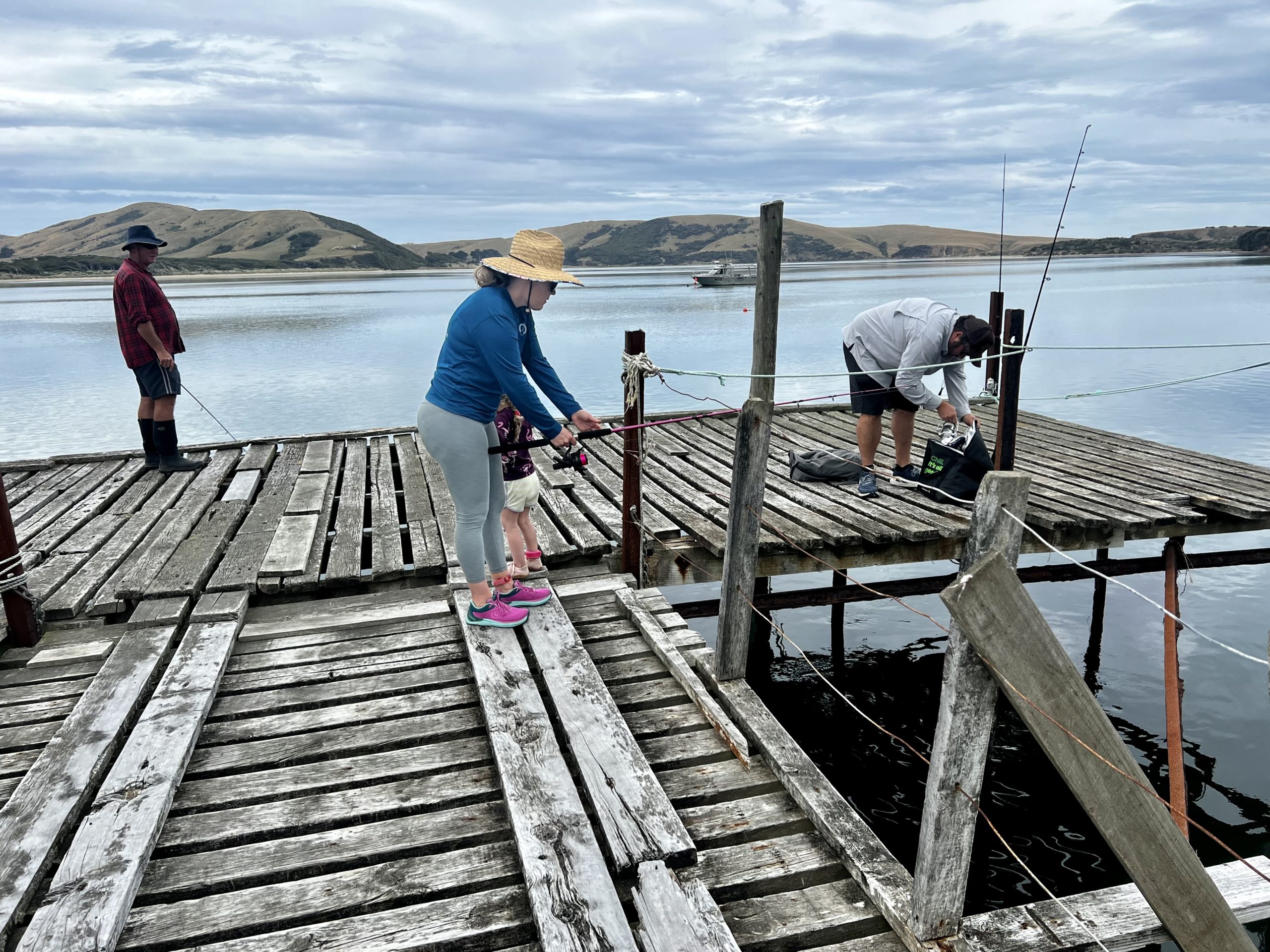
Can Do Kiwis and Other Observations
We love the “can do” attitude in New Zealand. In Italy if you ask for a change of some kind, the answer is usually, “No. Not possible.” But in New Zealand the answer is “No problem.” To be fair, we learned that in Italy the negative answer is simply the beginning of a longer conversation with lots of back and forth that usually ends well because engaging in conversation is important. But in New Zealand everything seems easy. We have had airline tickets changed on the spot with no charge and a car rental agreement corrected with no question. When Robert called a local store to ask about getting fishing licenses, the clerk said they didn’t have them but he stayed on the line patiently to see if he could help find the right place.
We are hearing that auroras have been visible in the past couple of weeks down here in the south of the South Island, but so far we have not spotted one. Bonnie isn’t good at getting up in the middle of the night to look south.
Sun protection is serious business down here. The fishing guides remind us about sunscreen, and they put on another layer at midday. For kids, hats are part of the school uniform. Bonnie saw a whole primary school at recess, all in bucket hats. The problem is the Antarctic ozone hole, which expands in some years. The genetics of the pale-skinned population from England and Scotland must add to the problem. We see lots of pale Kiwis with bright red cheeks from the ongoing sun damage.
In the first week of the trip, while fishing all day on a crooked river, Bonnie was trying to use the sun to orient herself, without much success. Oops. Down here the sun is in the north.
Drinks. Coffee everywhere. Lots of coffee shops. More coffee shops than pubs. And after a slow start, craft beer has emerged with vigor. David Banks thinks it is because once Kiwis started traveling more, they saw how they could amp up their beer making back home. But Kiwis haven’t really picked up on cocktails. Bonnie asked about vermouth from a lovely middle-aged woman bartender at a restaurant, and she had never heard of it. When we explained it was used in many cocktails, that didn’t help. Robert found his first gin and tonics very weak. He learned we have to ask for a “double pour” to get closer to the strength we are used to. Apparently the NZ government would like to cut back on alcohol consumption among young people.
Fashion report. Hmmm. Most people look like they shopped at REI, Patagonia, or some other outdoor store. Even in downtown Auckland. People look just fine, but casual and ready for the outdoors. We see every kind of outdoor sneaker. No particular color. The few neon sneakers in the wild may have come from the US.
A young grocery clerk immediately identified Robert as American. Robert said: “The accent.” He said: “No. Before I heard you I saw the covid mask.”
Food and Friends
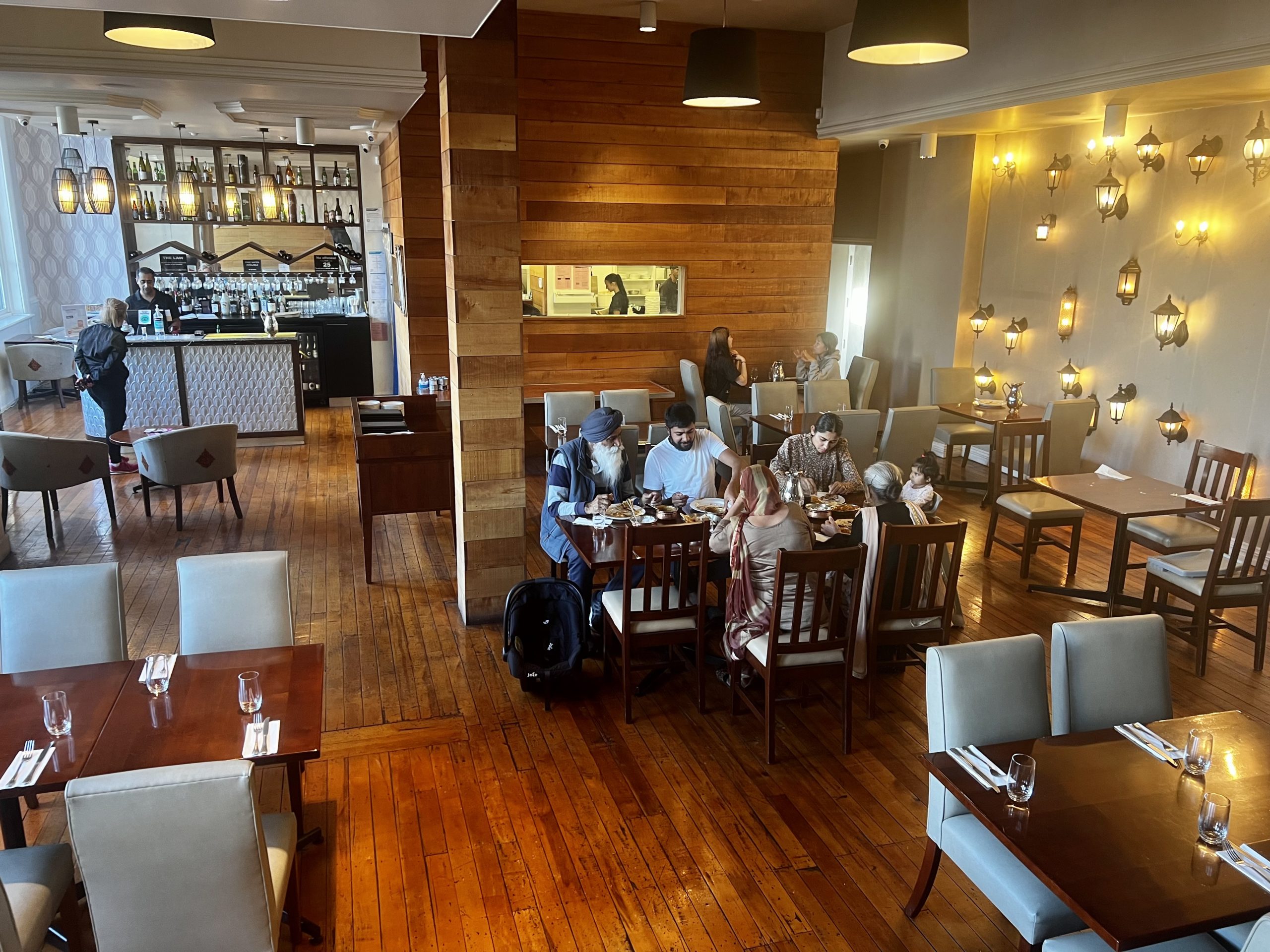
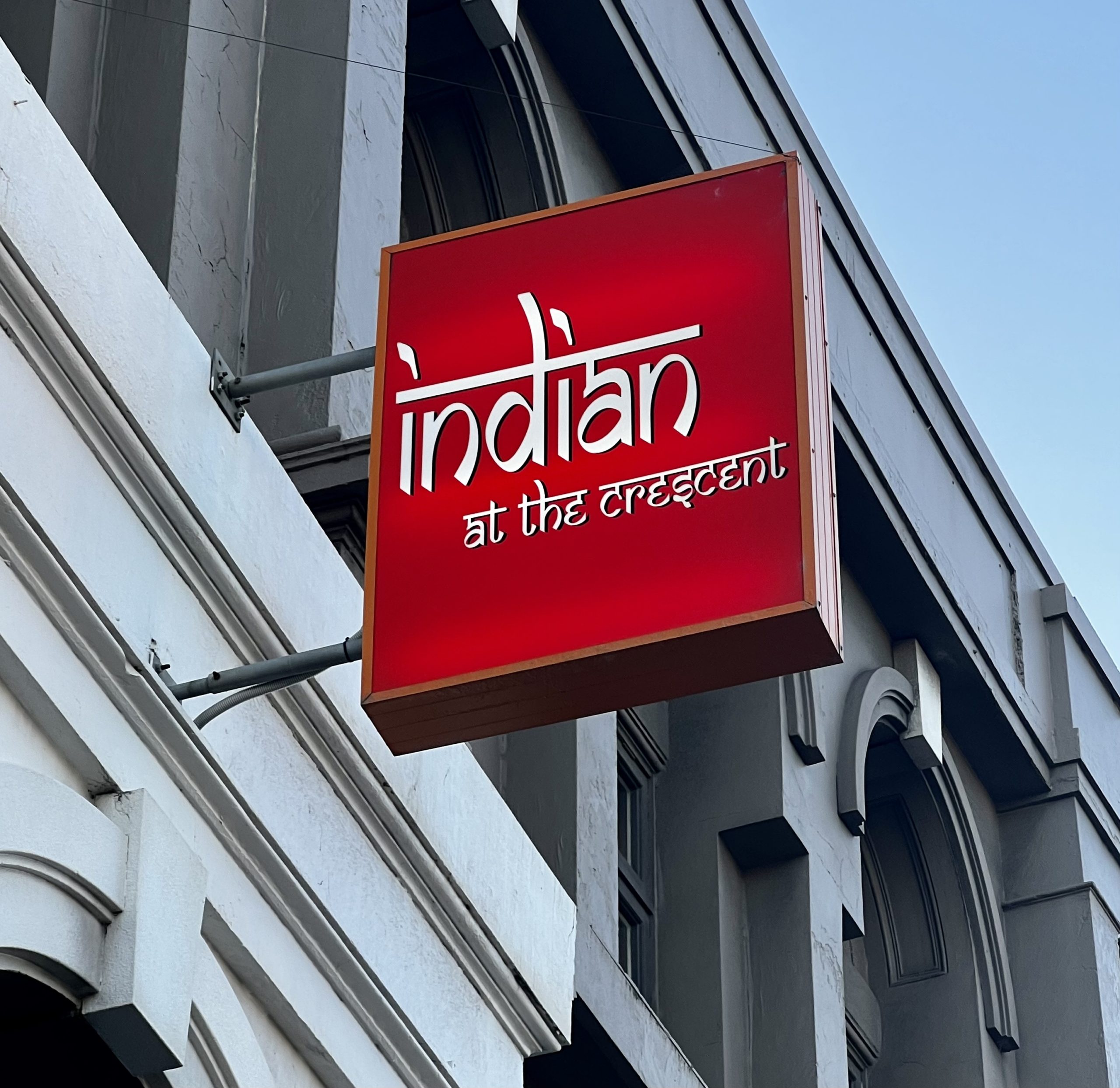
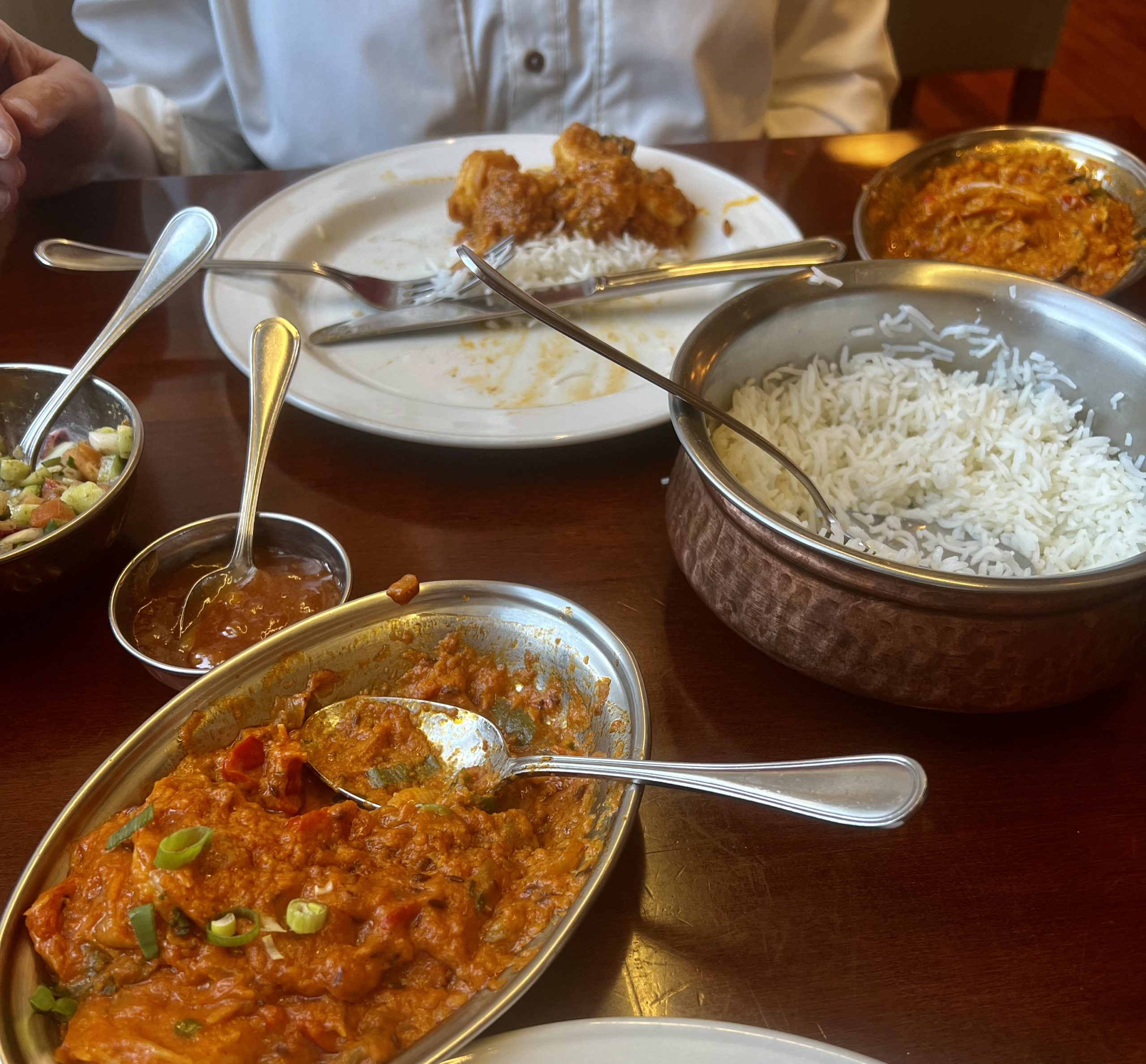
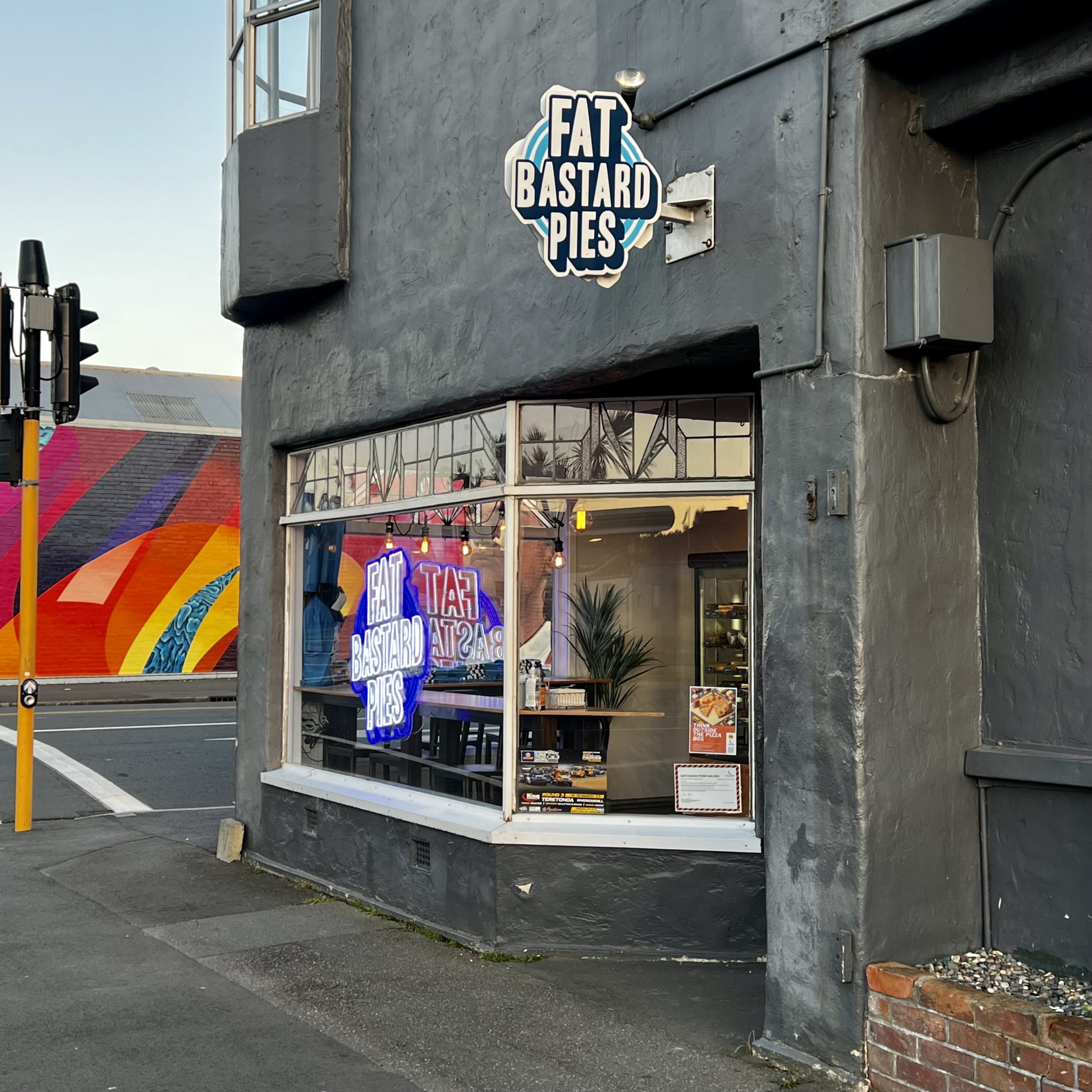
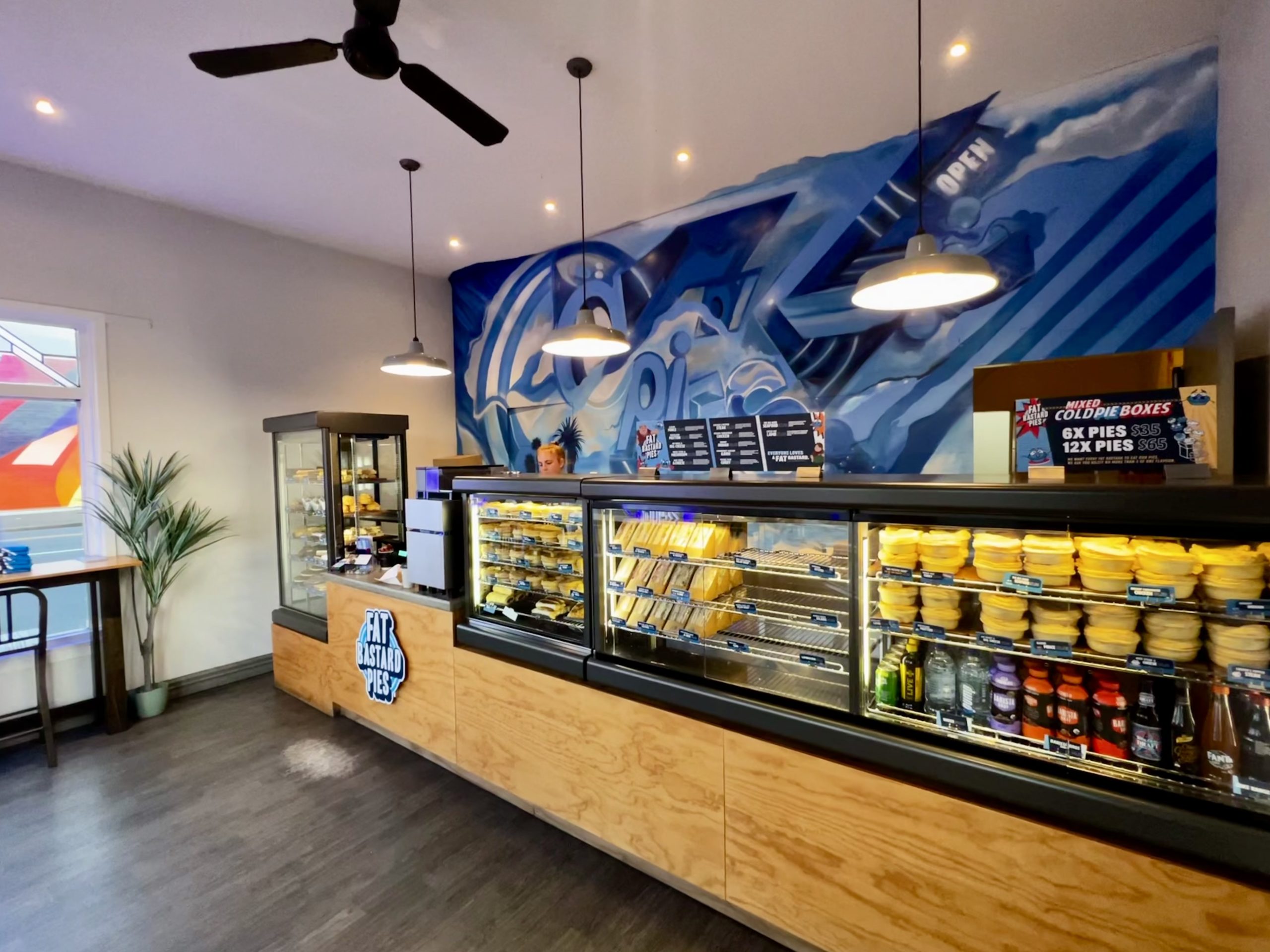
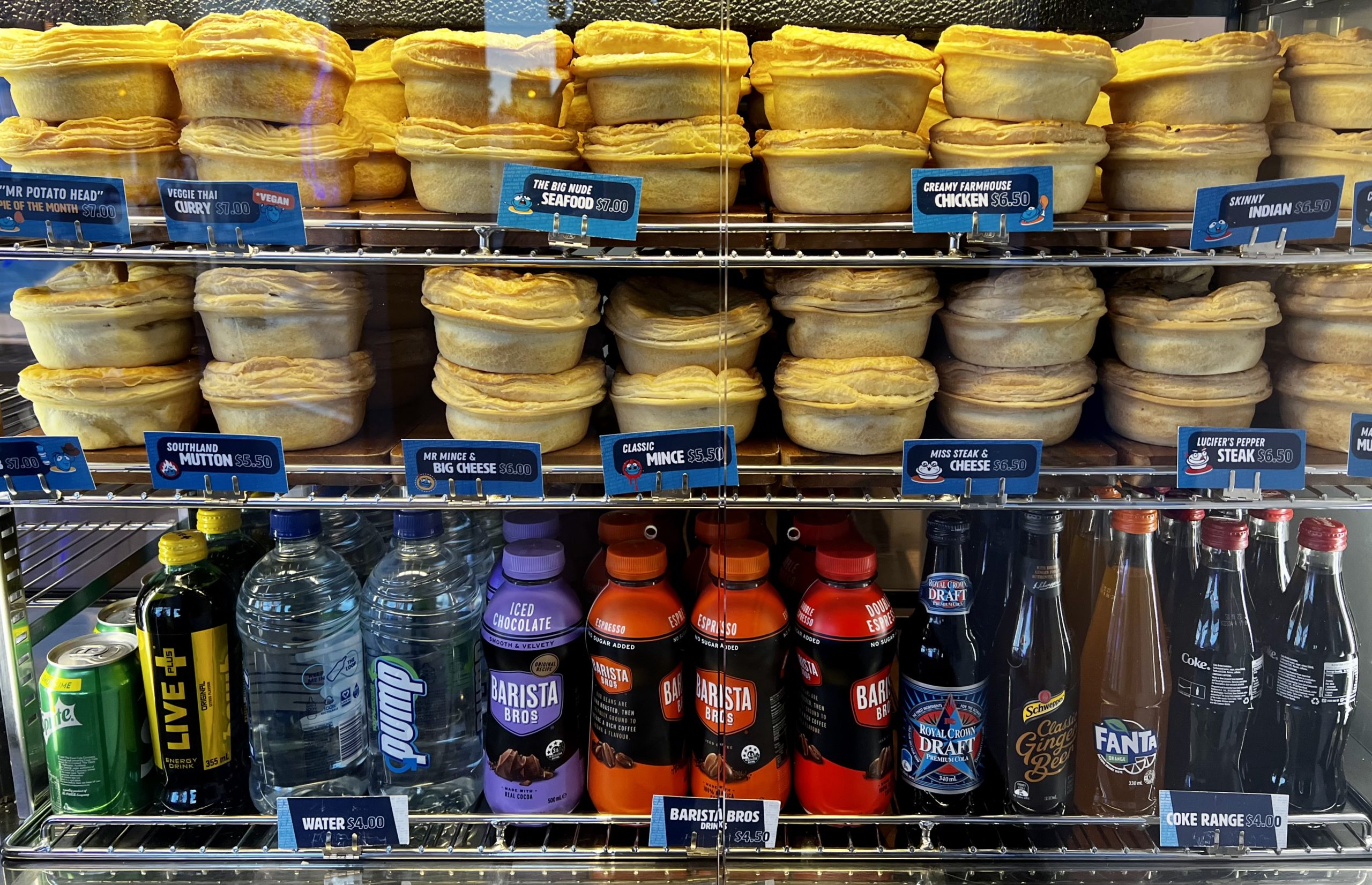
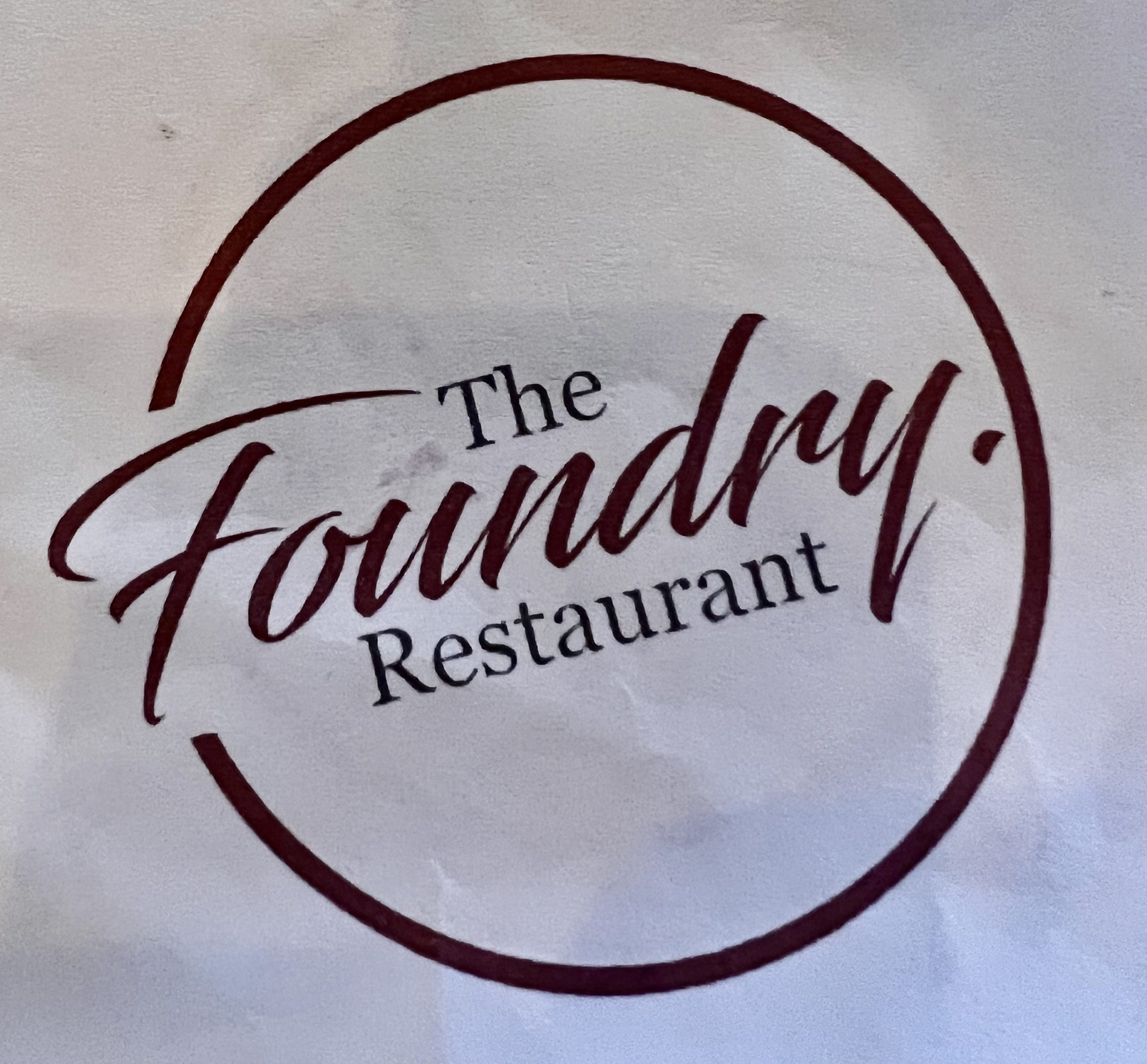
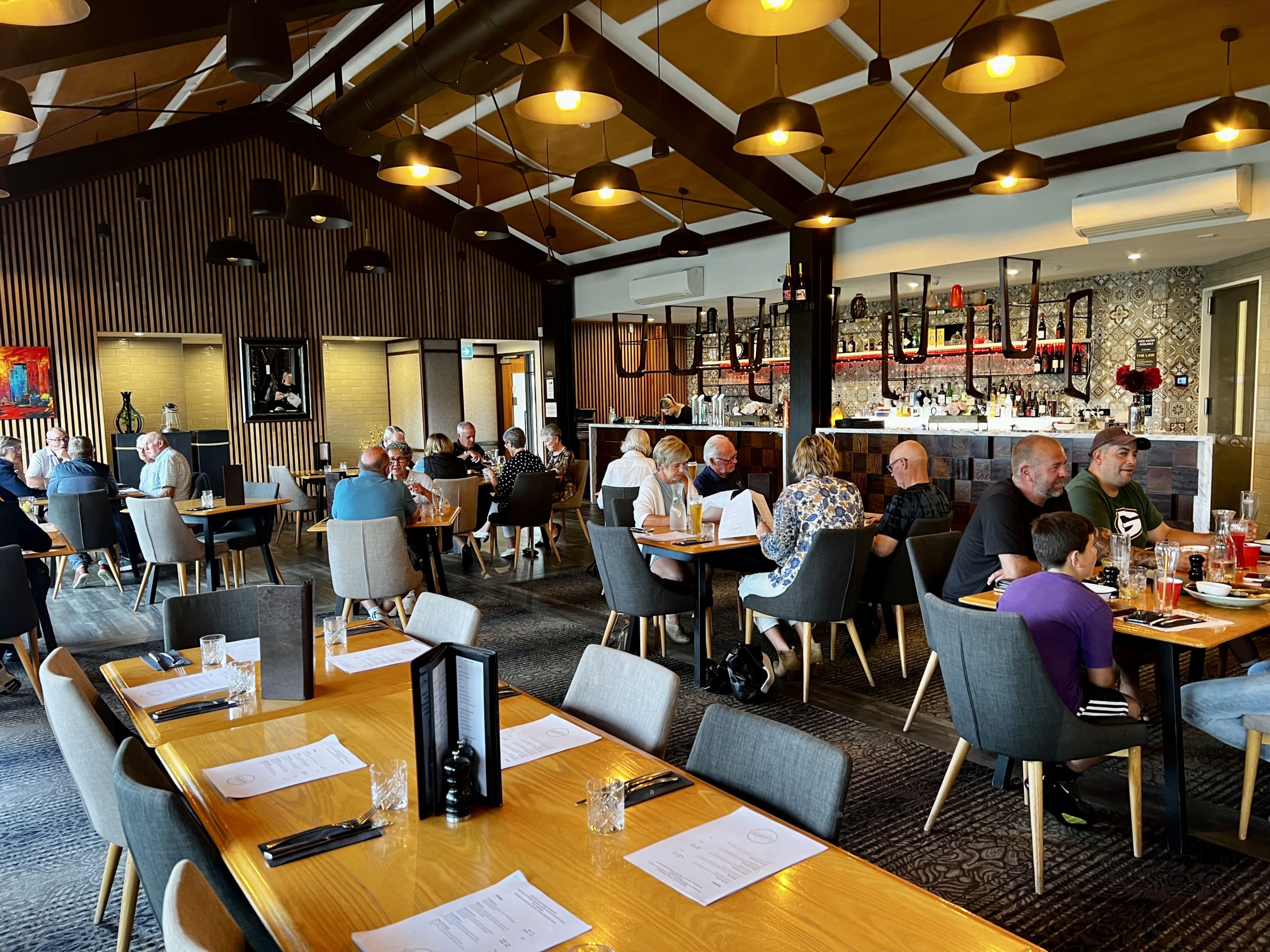
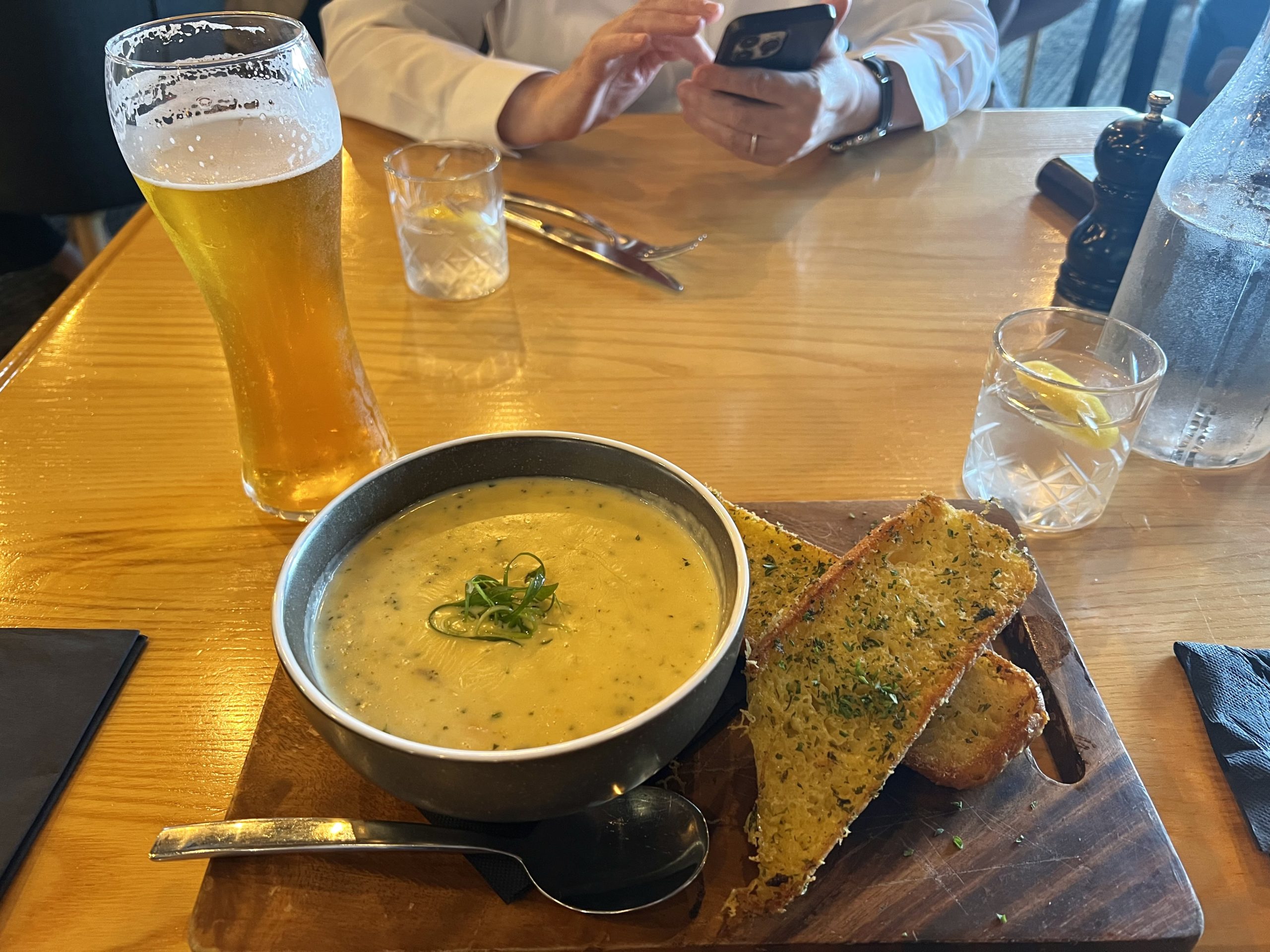
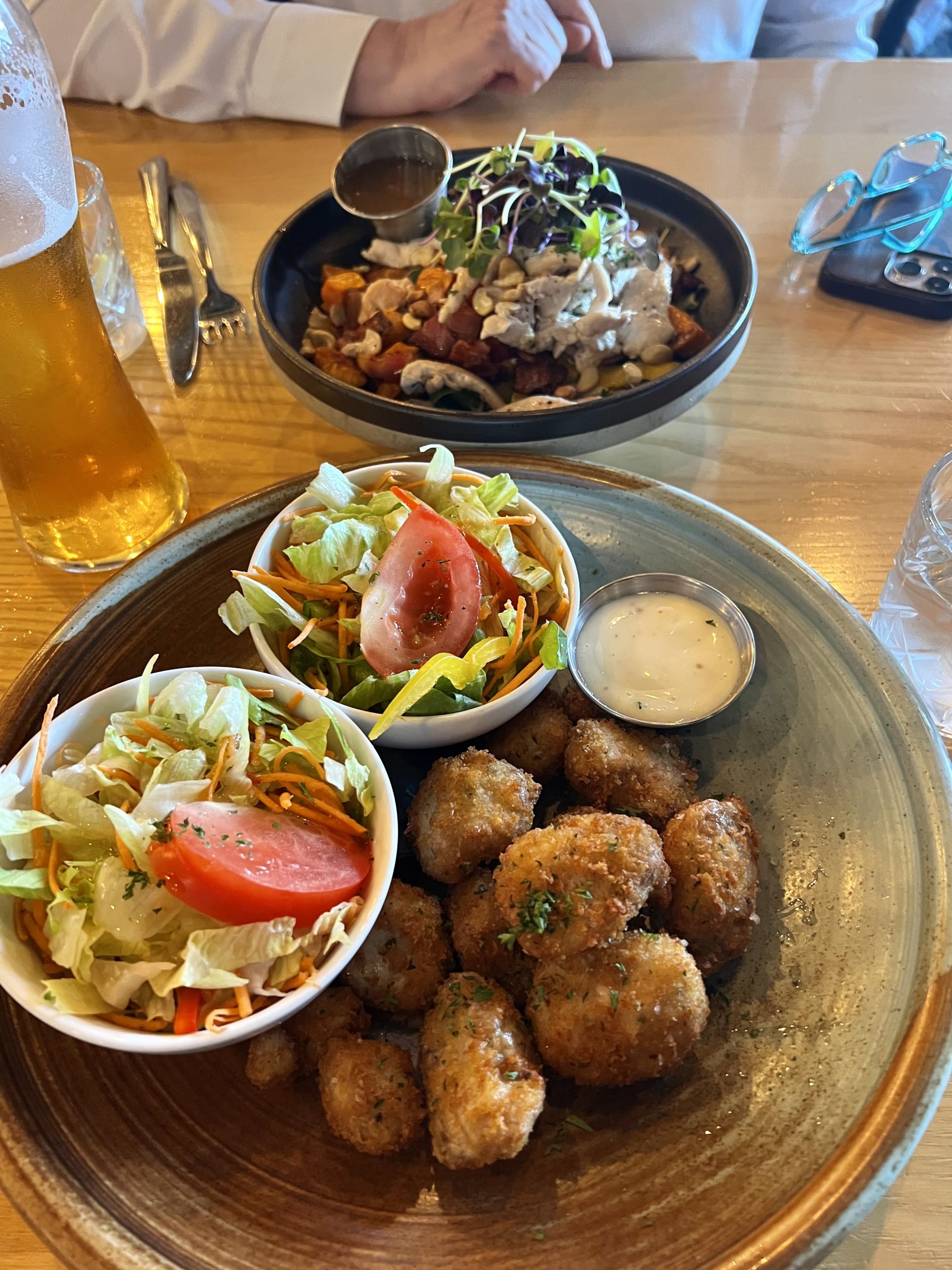
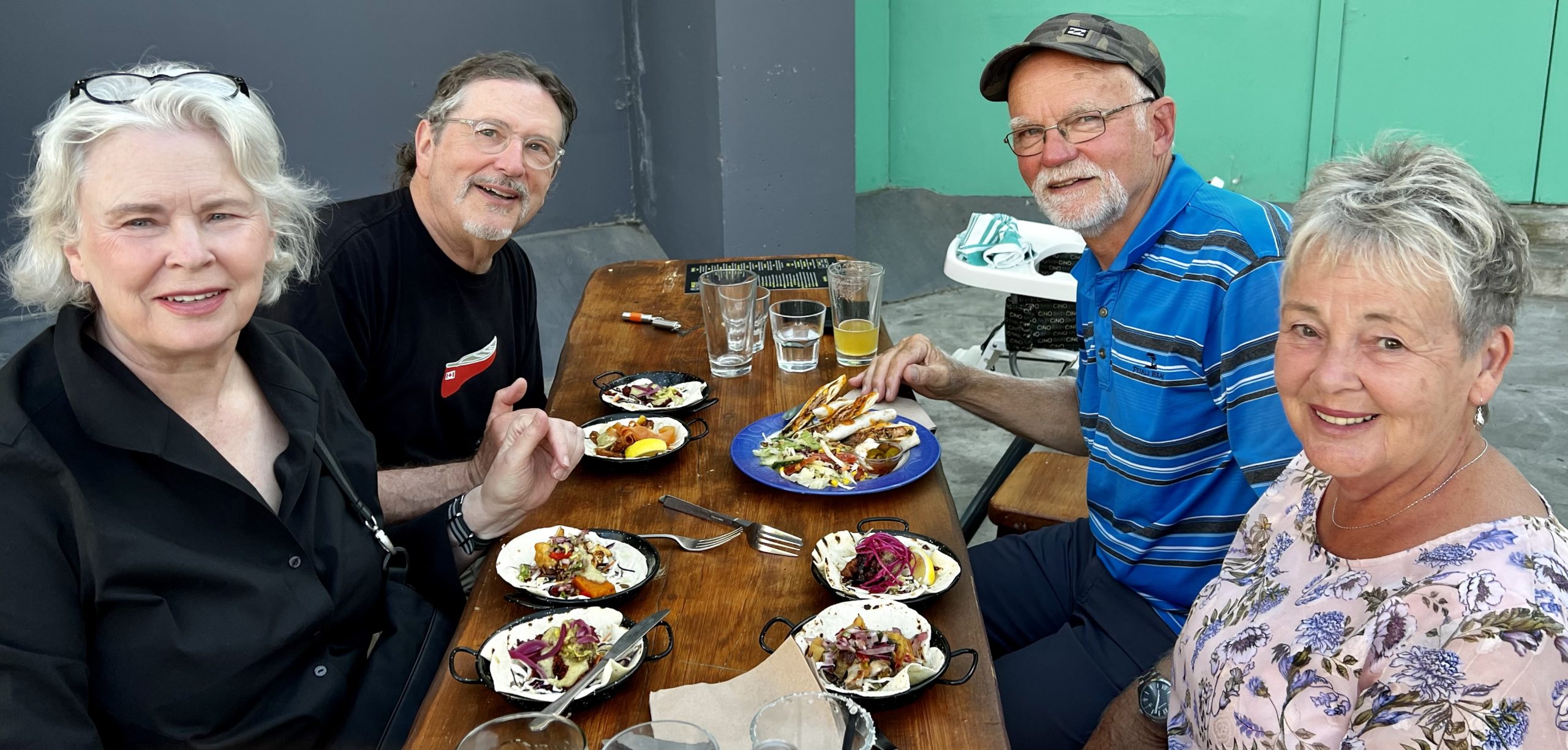
Next stop—Gore!
